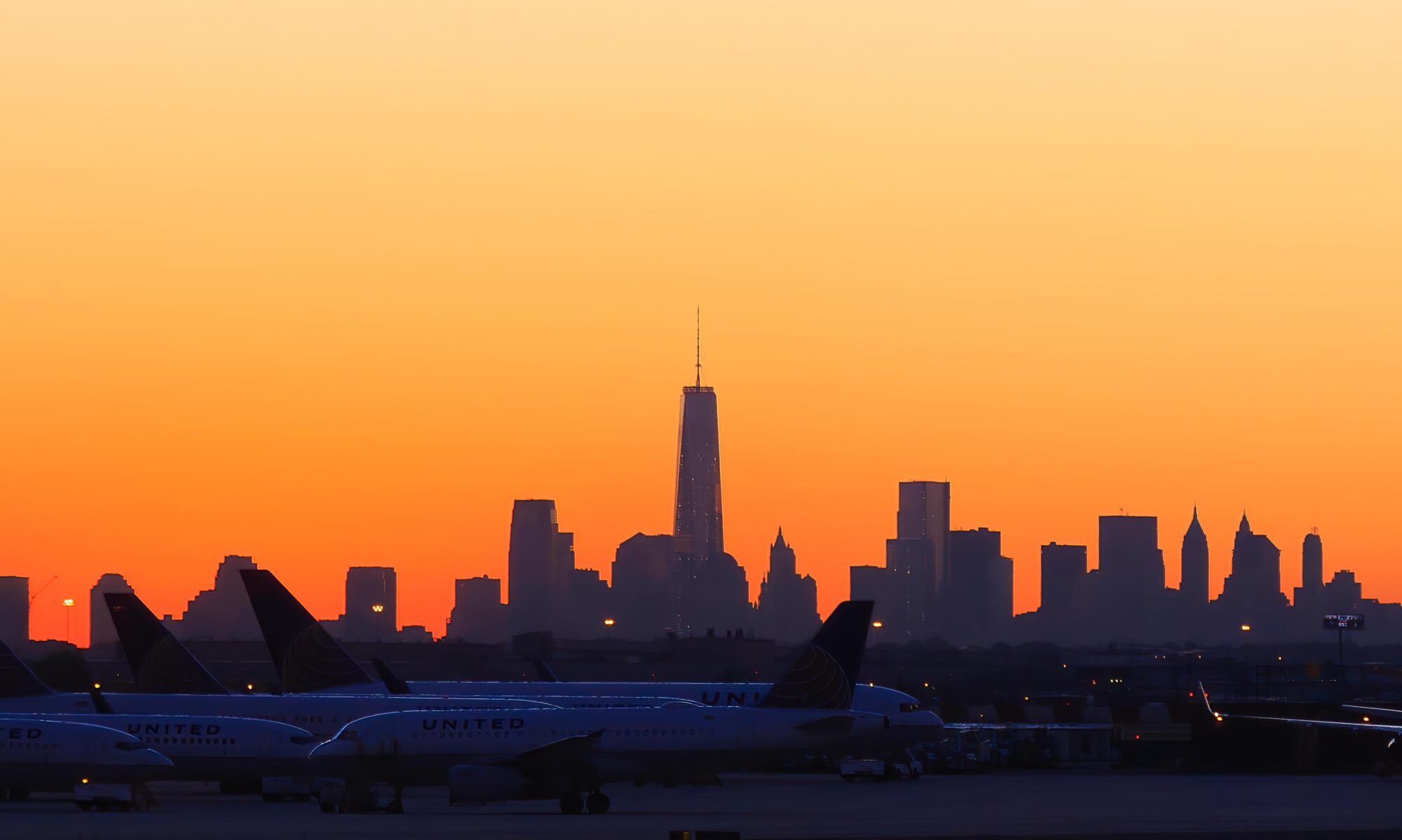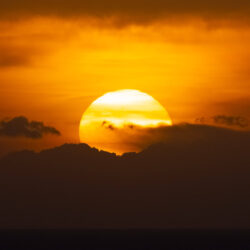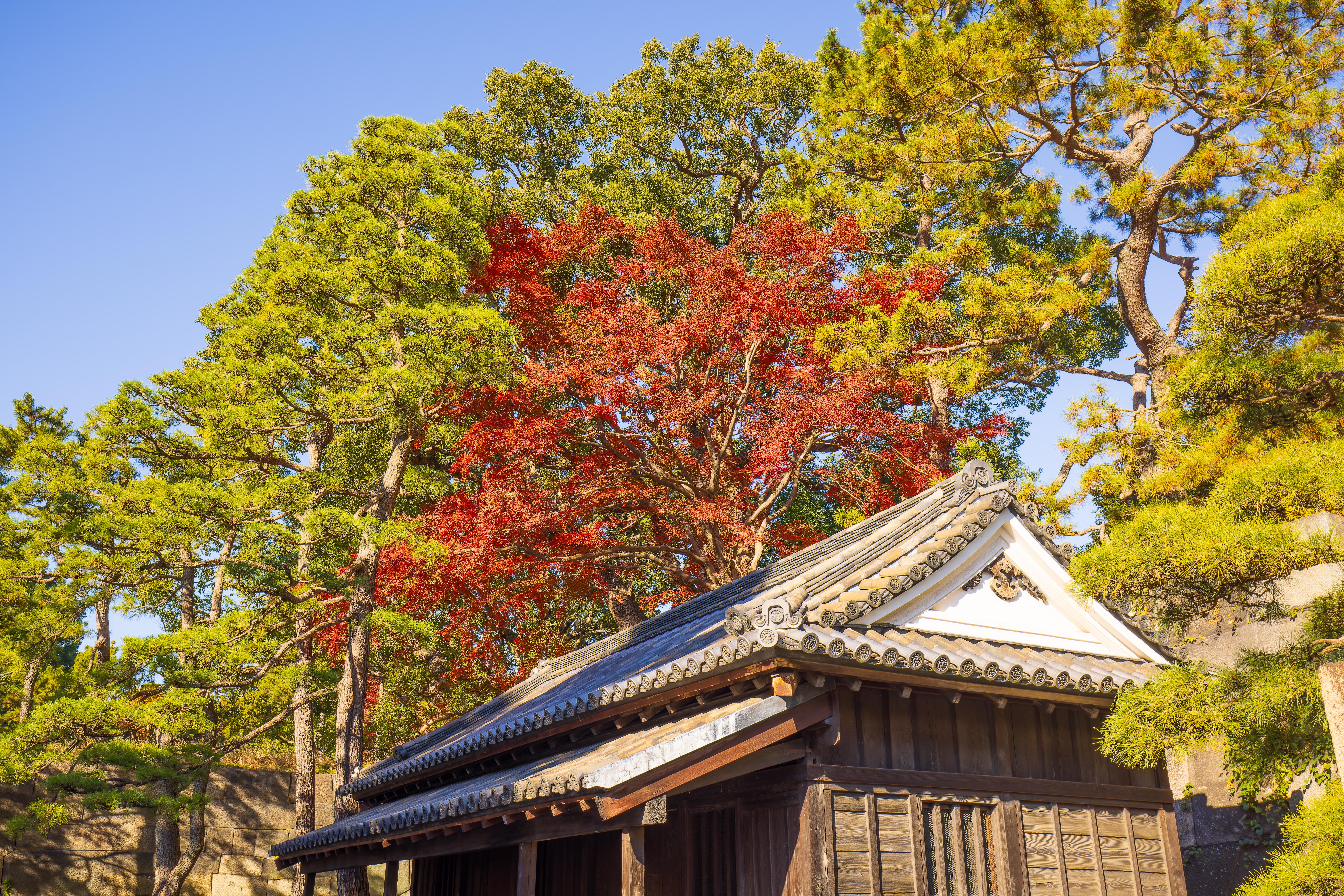After waking up at the Hyatt Place Kyoto one last time, we returned to Tokyo via Shinkansen. We had some time before our flight from Haneda so we visited the East Gardens of the Imperial Palace, near Tokyo Station. After a nice lunch nearby and some more snacking at the ANA Lounge at Haneda, we end our fantastic 11 night trip to Japan!
Morning
We didn’t have much to do after waking up at the Hyatt Place Kyoto as we had mostly packed before going to sleep. We headed down to Kyoto Station by subway, leaving early enough to avoid the morning rush. We were very early for our train but were able to use the smartEX app to change our tickets to an earlier departure free of charge. We had some time to pick up a few snacks before the train arrived.
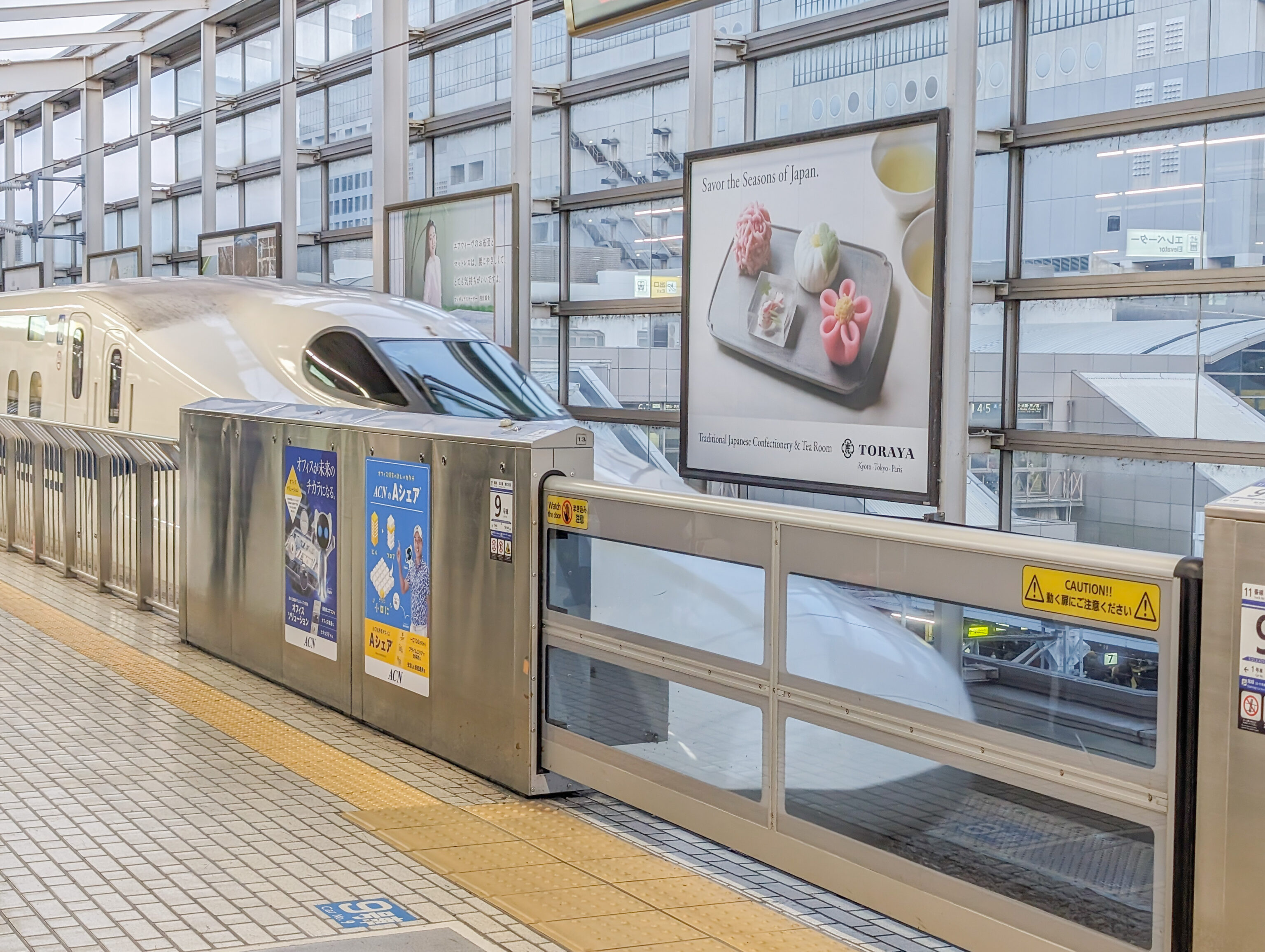
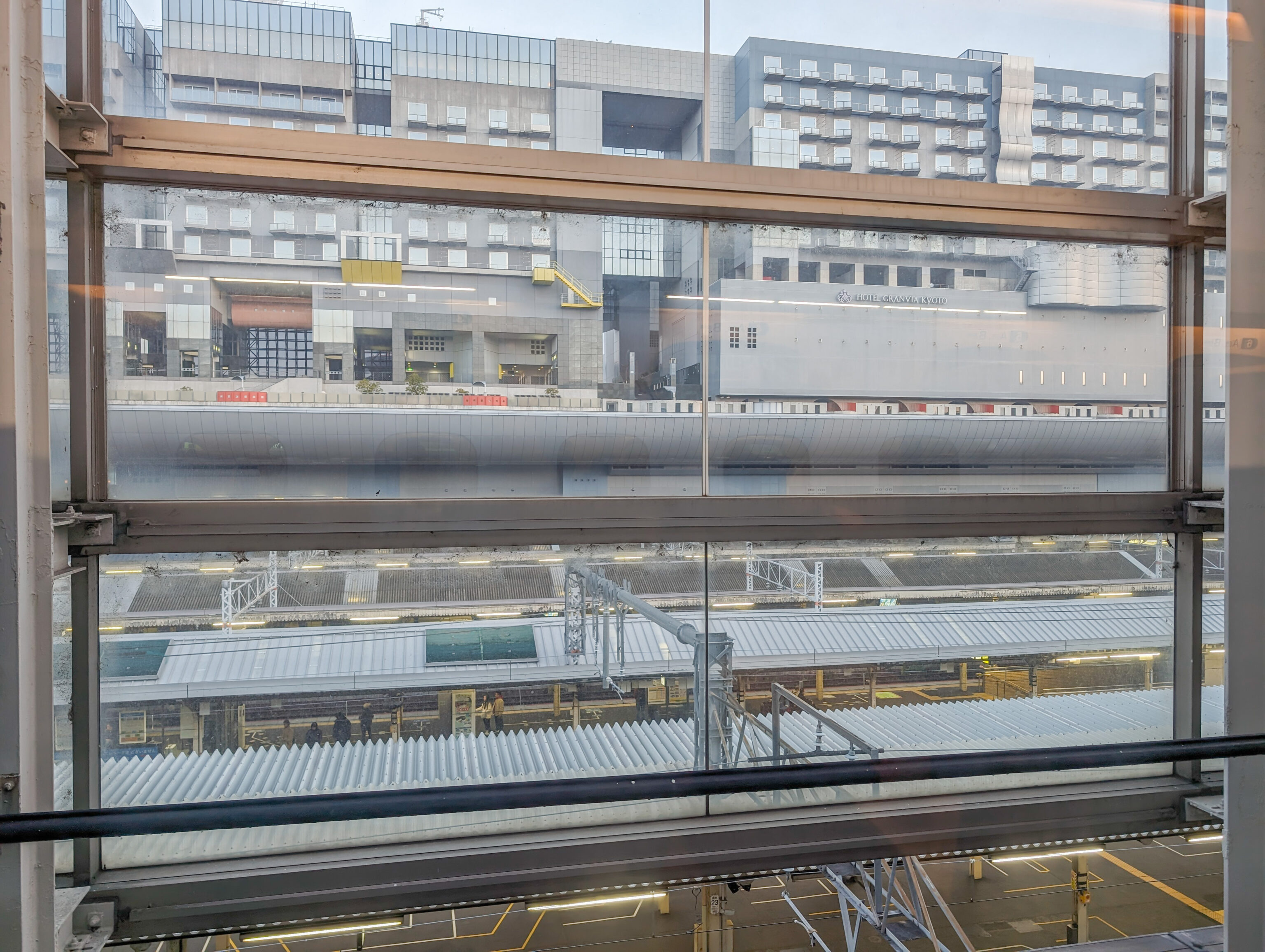
Soon, we were on our way back to Tokyo!
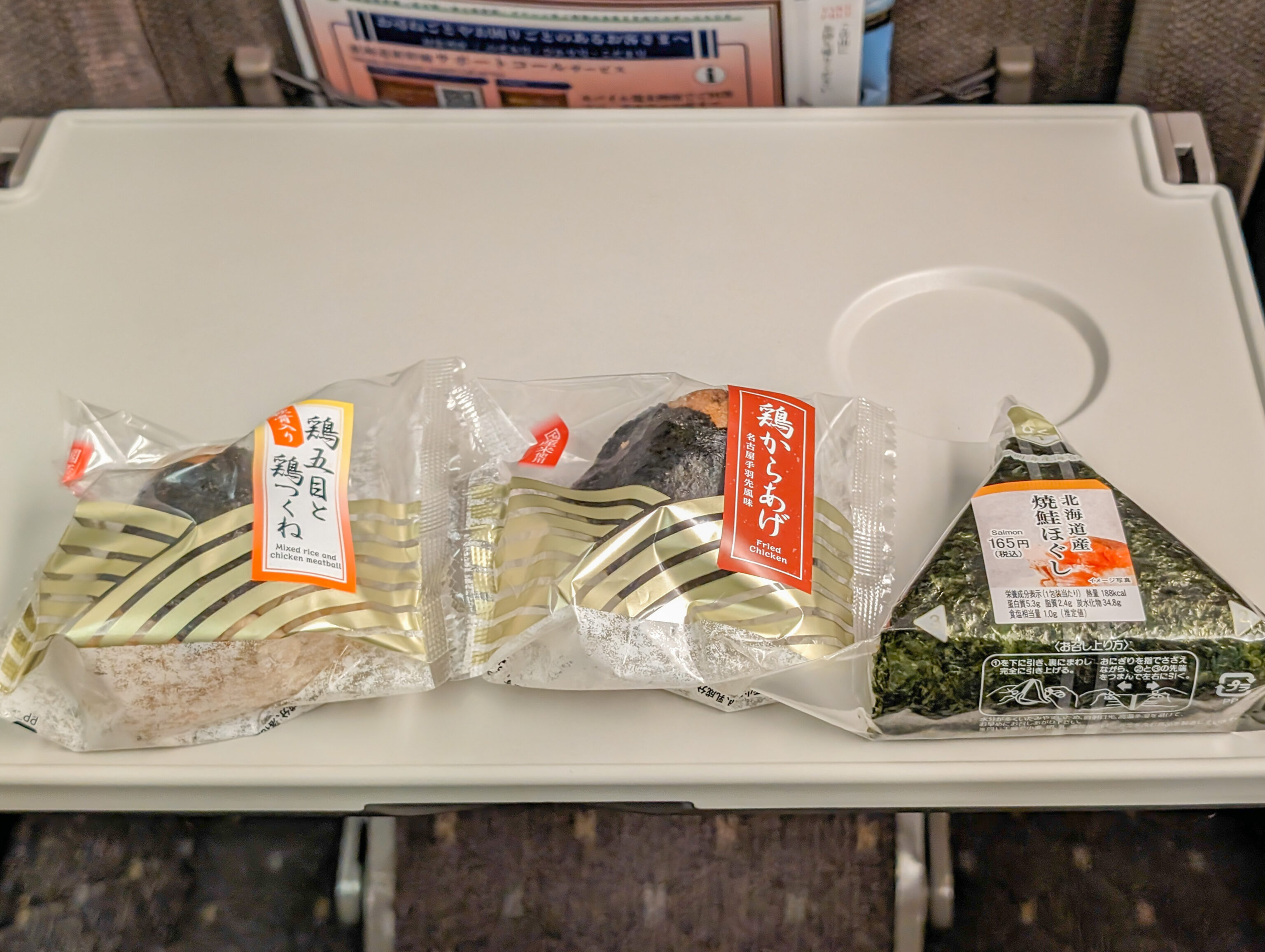
Just three onigiri for breakfast today!
After arriving at Shinagawa, we dropped off our bags in a locker and took JR up to Tokyo Station.
East Gardens of the Imperial Palace
From Tokyo Station, we started walking to the west to head to the East Gardens of the Imperial Palace.
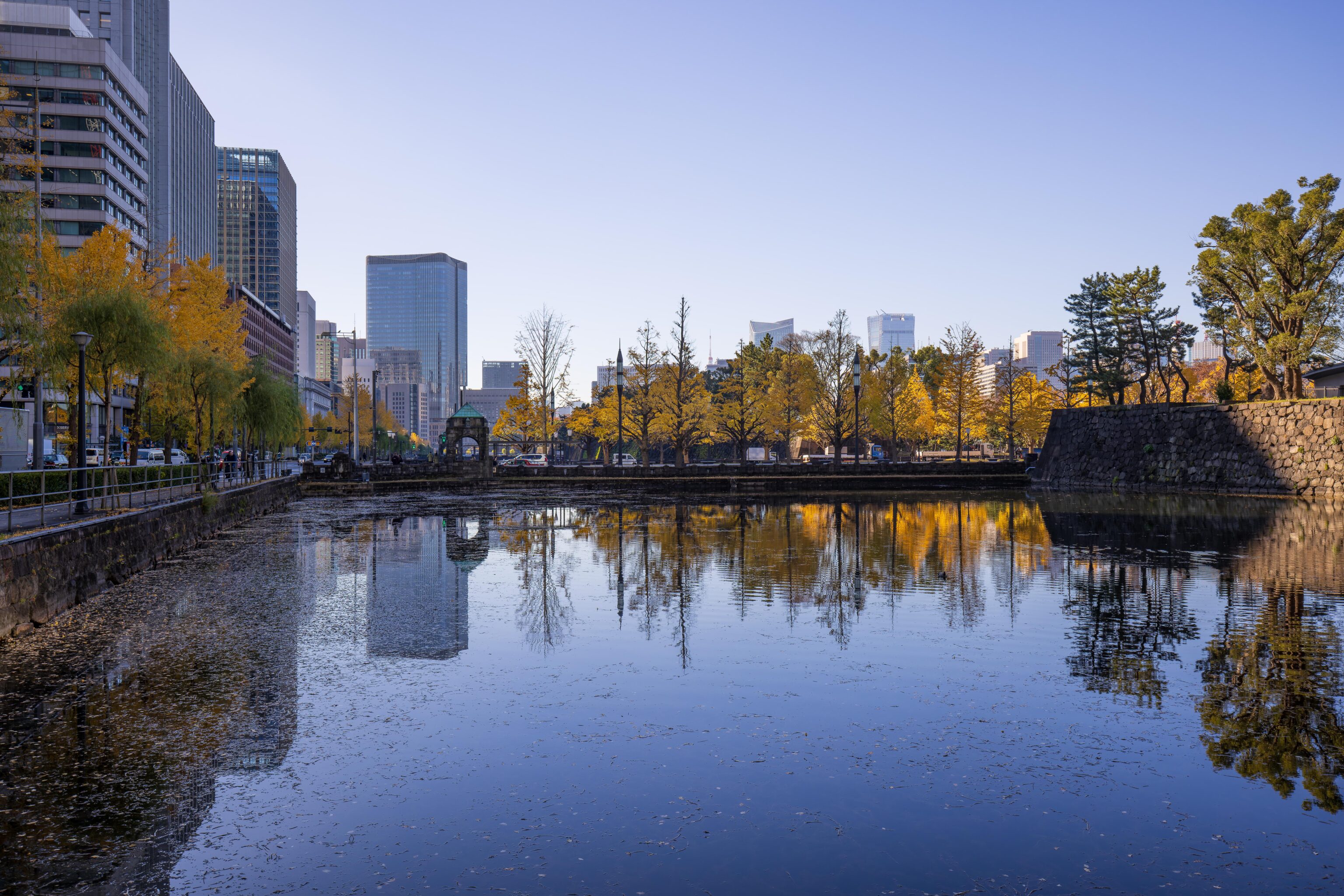
The eastern edge of Kokyo Gaien begins just two blocks away from Tokyo Station. This park sits to the east of the Imperial Palace and south of the East Gardens, where we are headed.
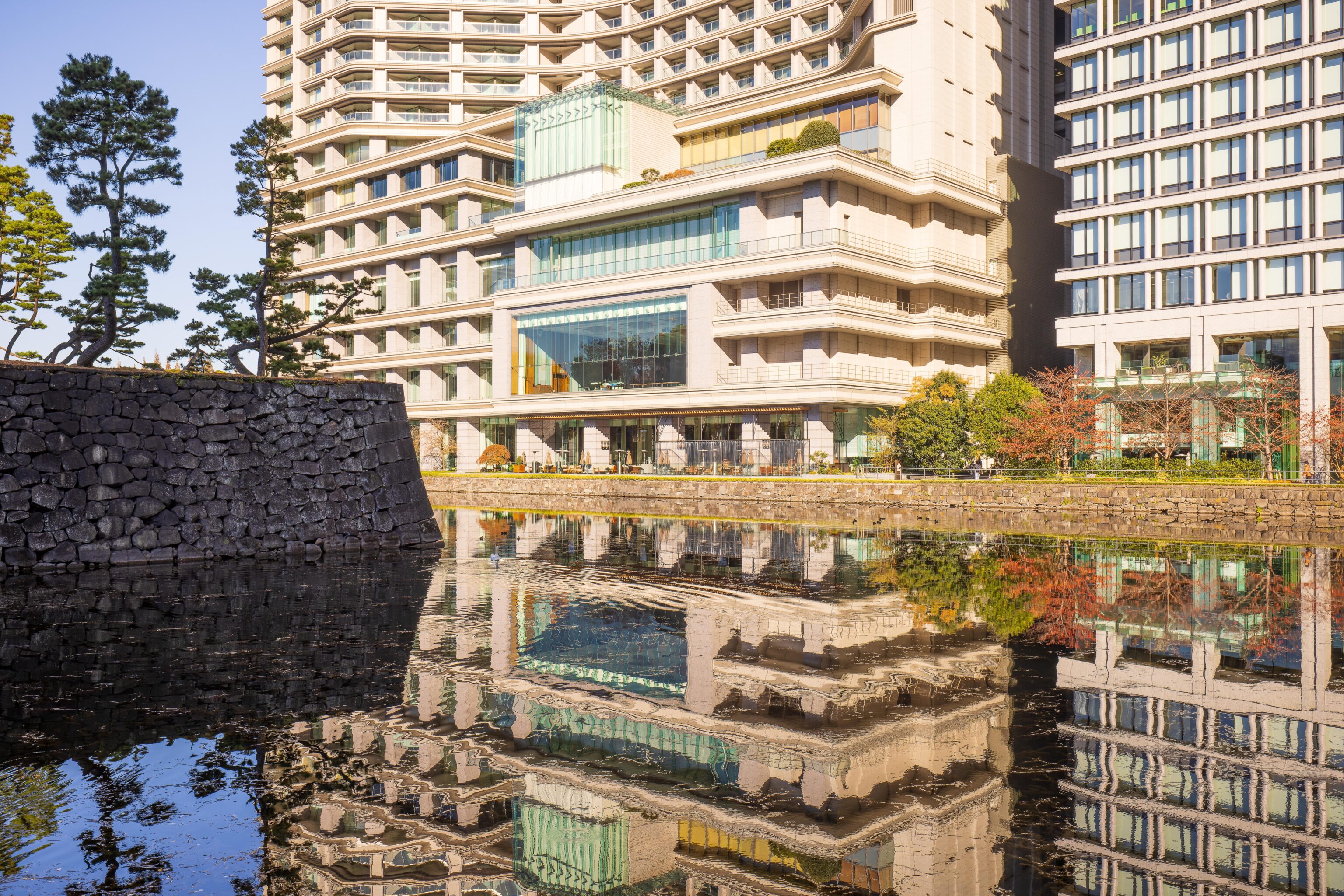
The moat waters in the modern day gardens were quite calm. Here, we see the Palace Hotel in the background.
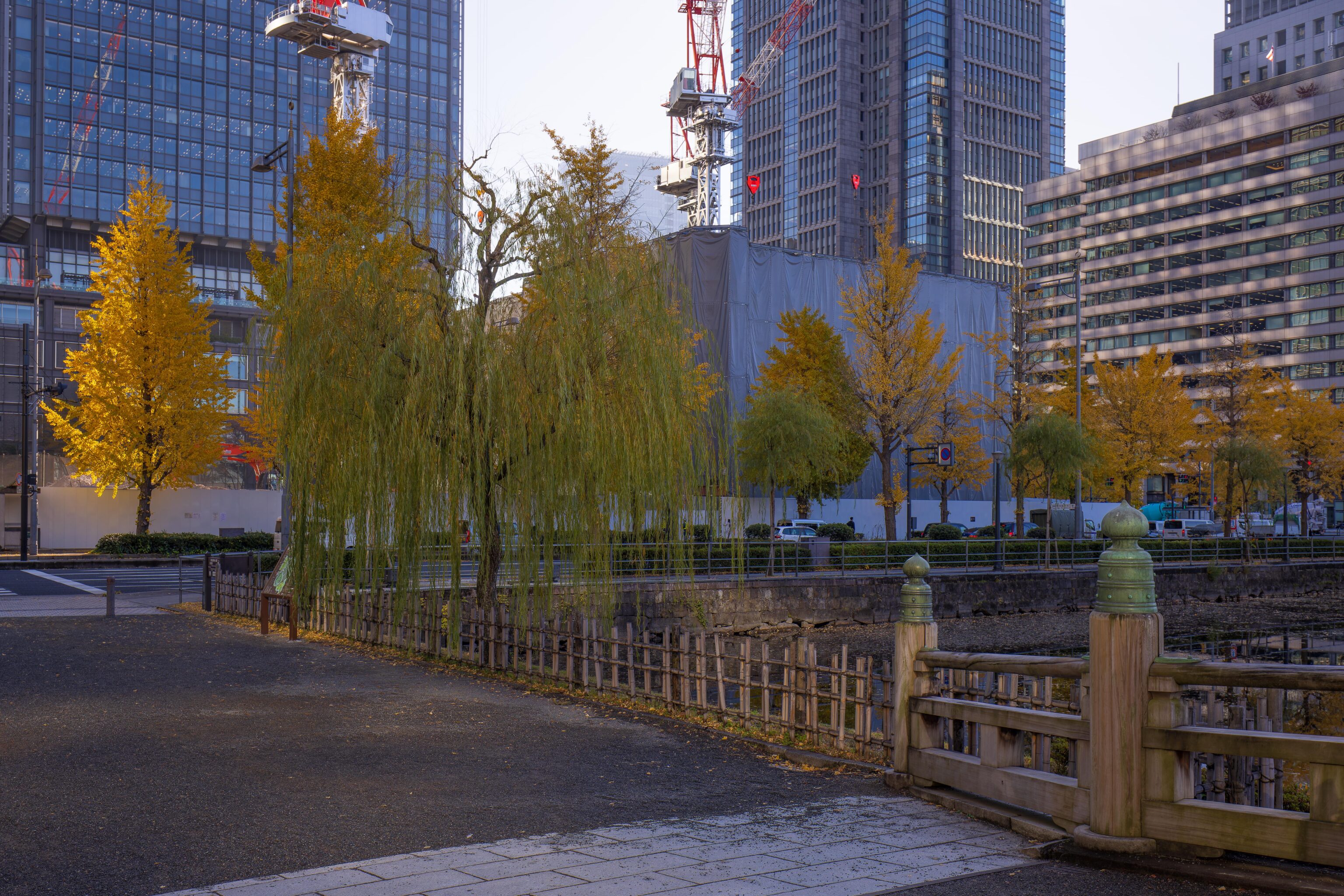
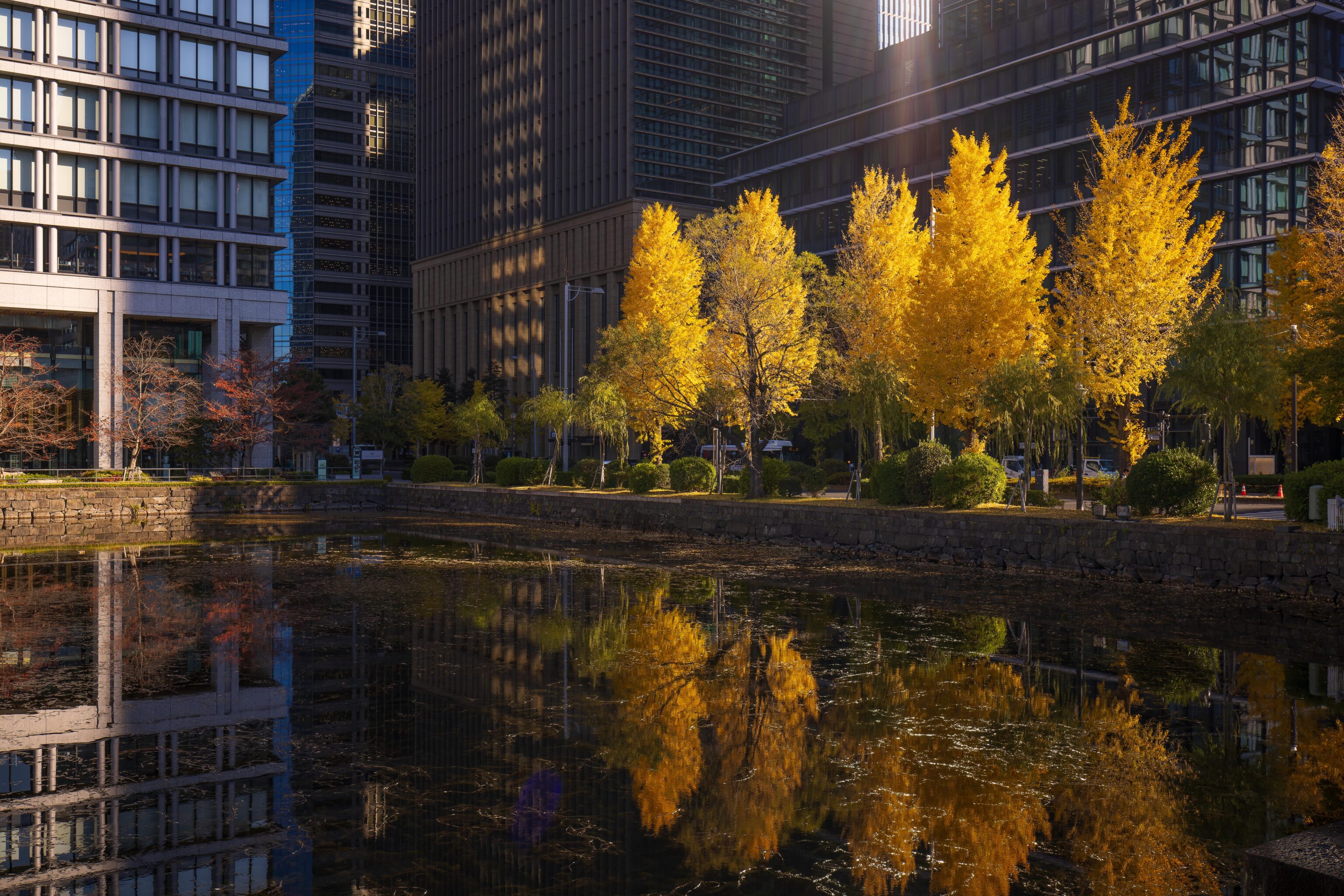
In Kyoto, we saw mainly Japanese maple trees. Here, in Tokyo, the fall scene is dominated by ginkgo trees.
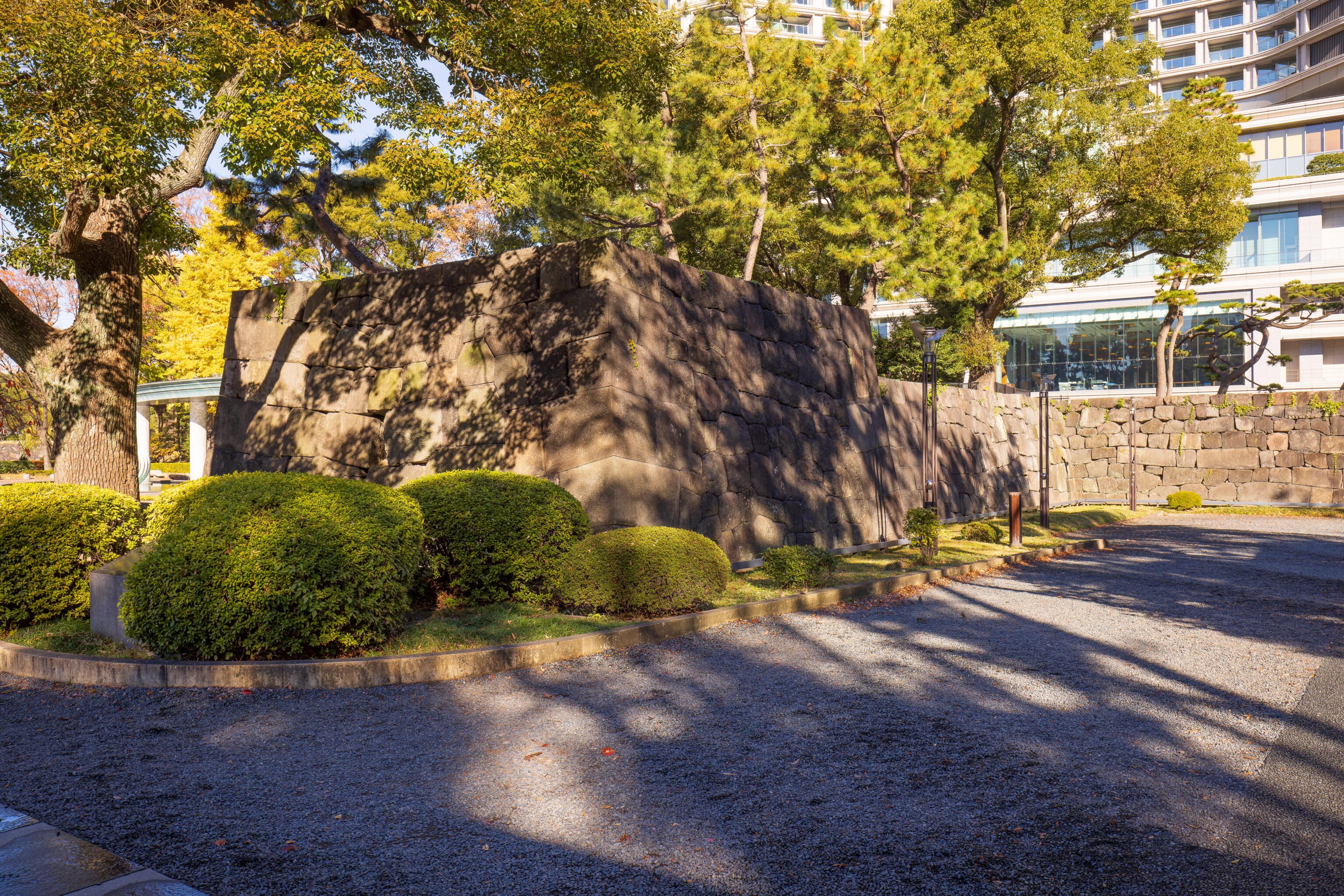
In addition to the stone wall of the moat, there are stone walls remaining above ground as well.
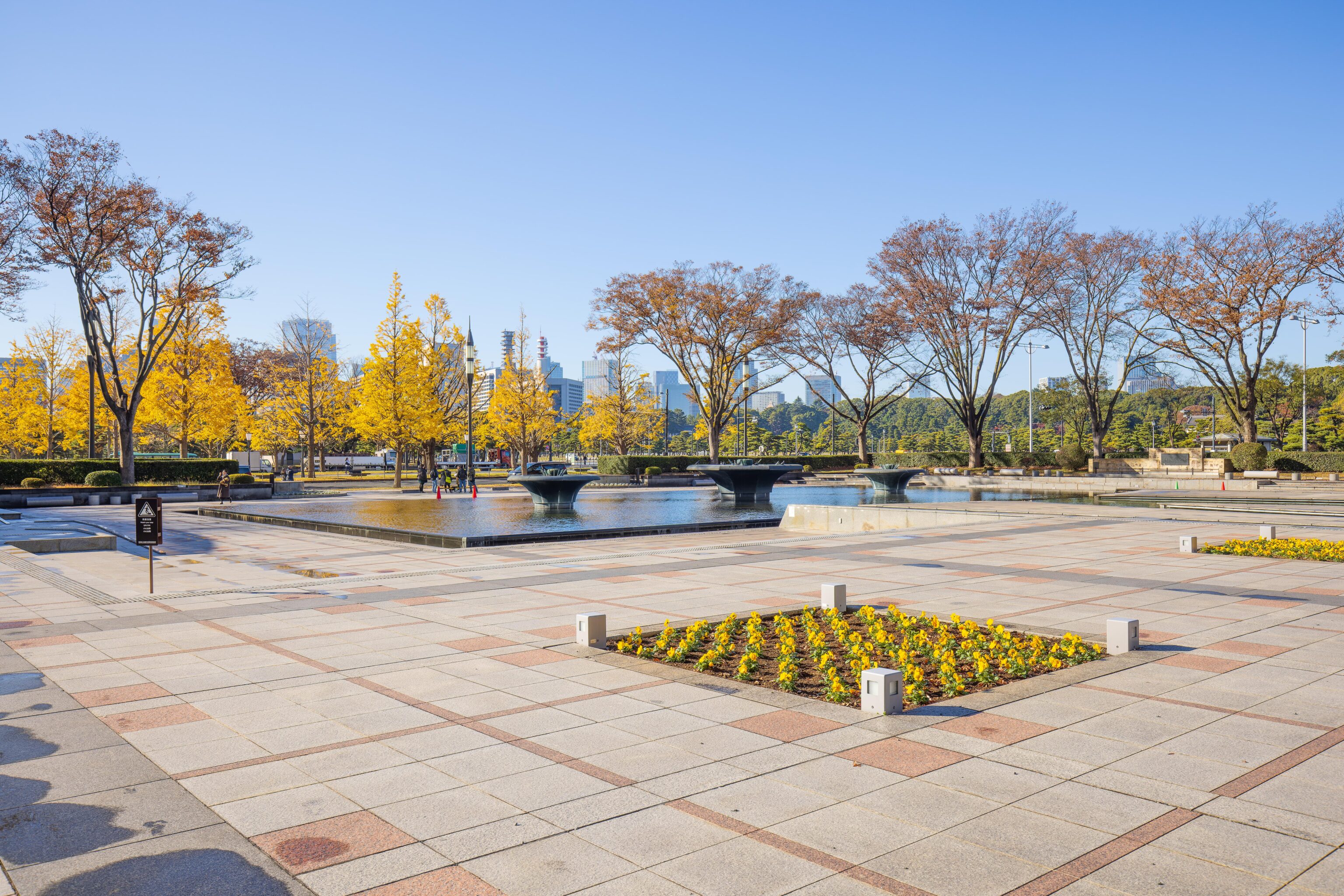
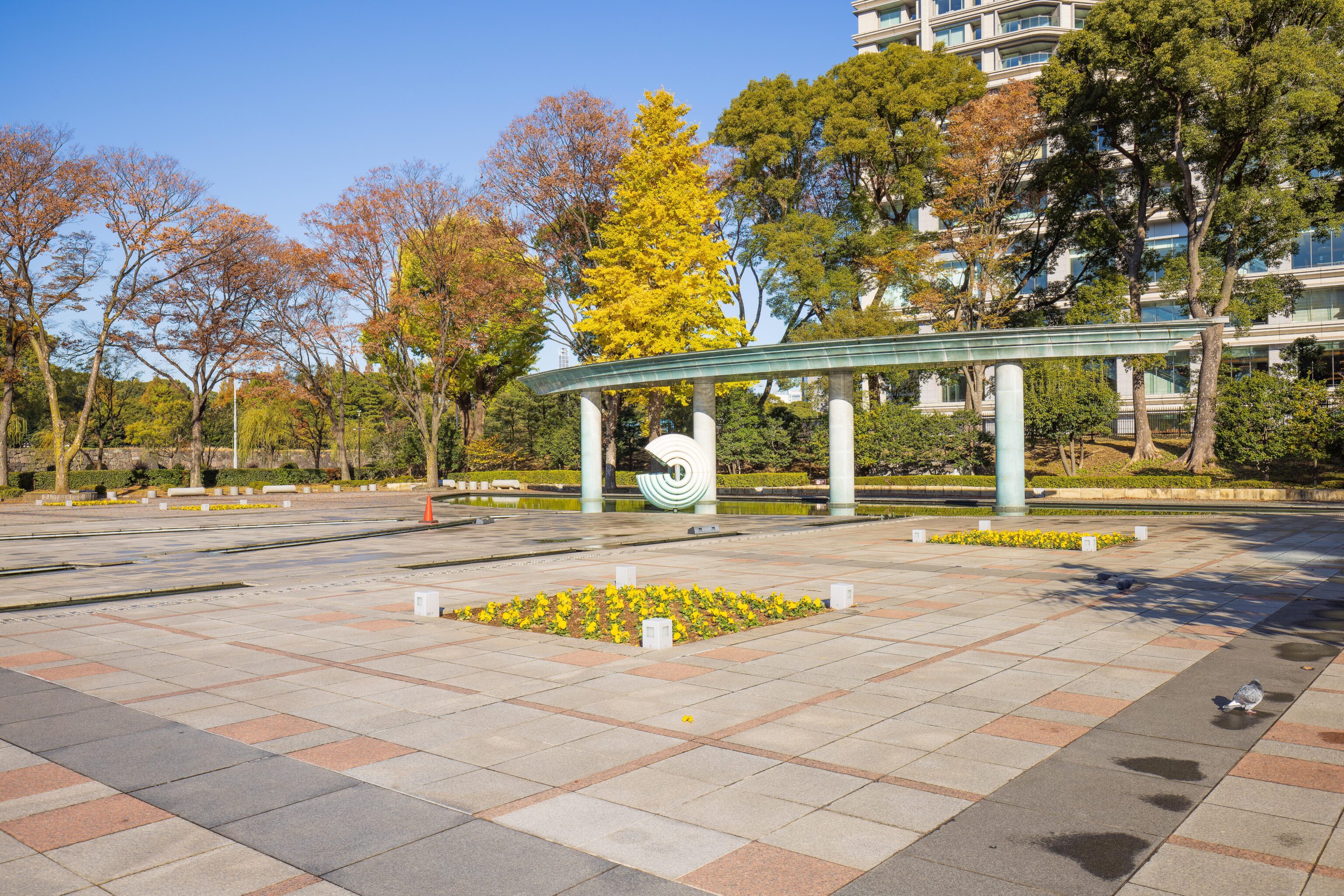
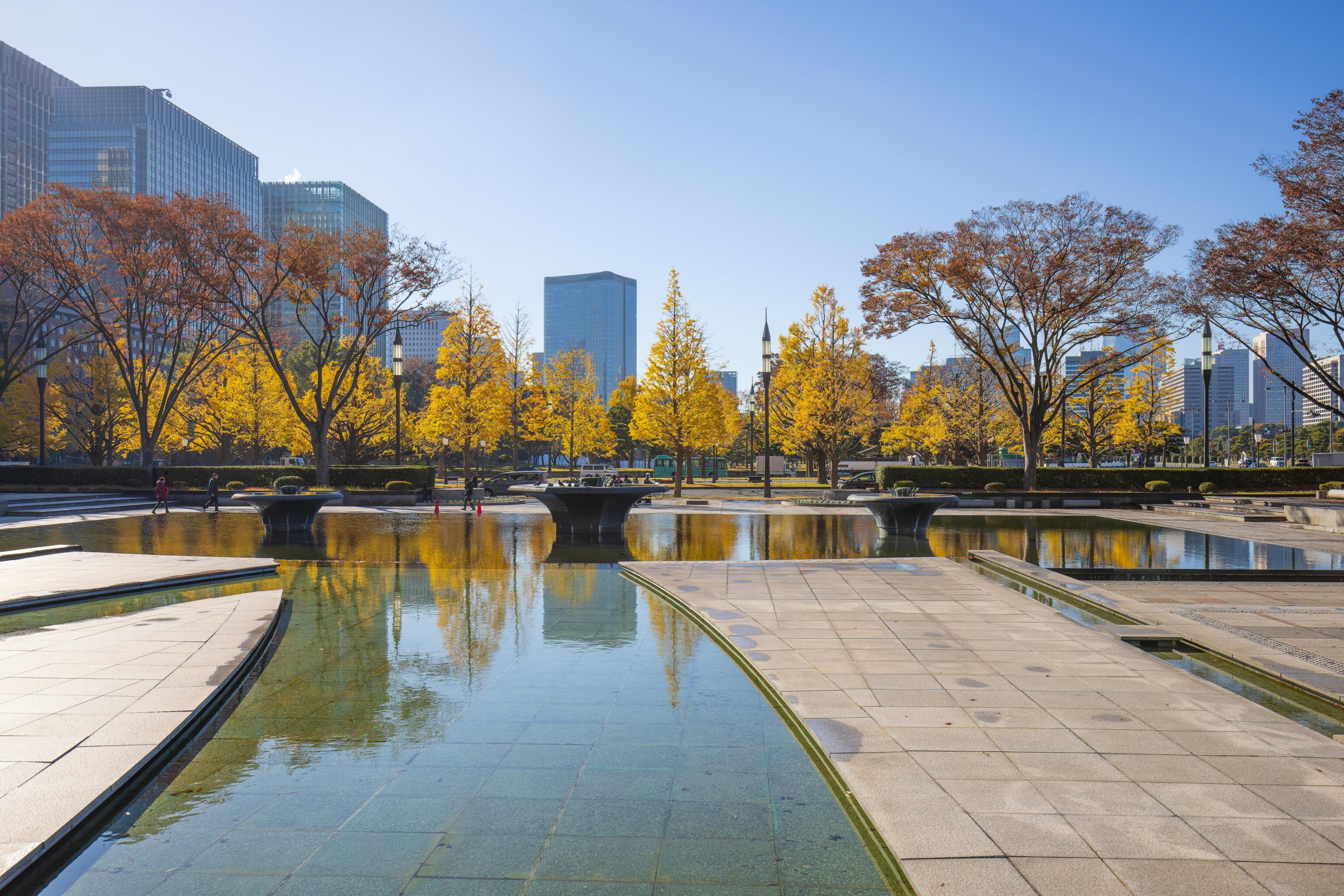
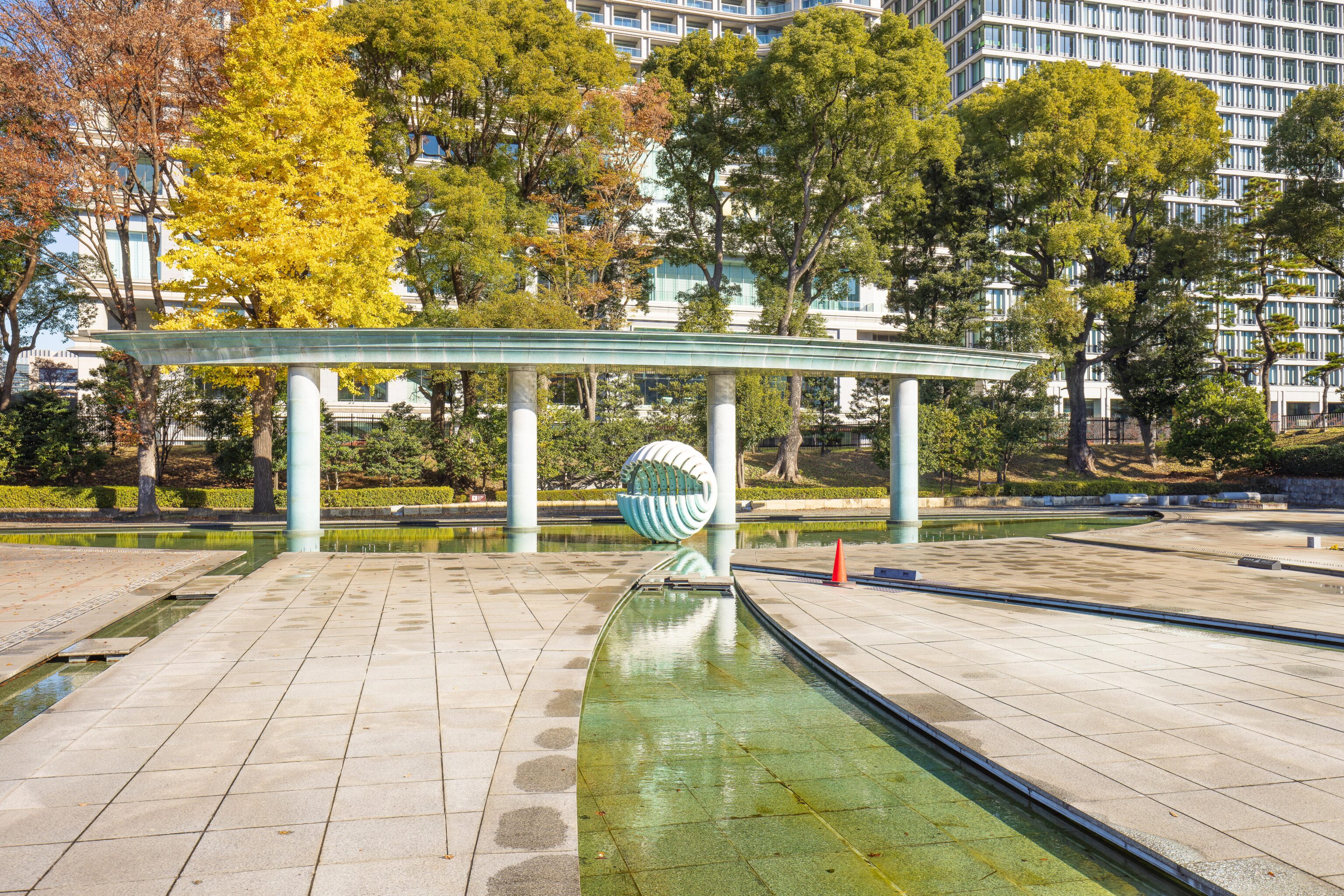
We passed through the Wadakura Fountain Park on our way. None of the fountains were active, likely because it is almost winter.
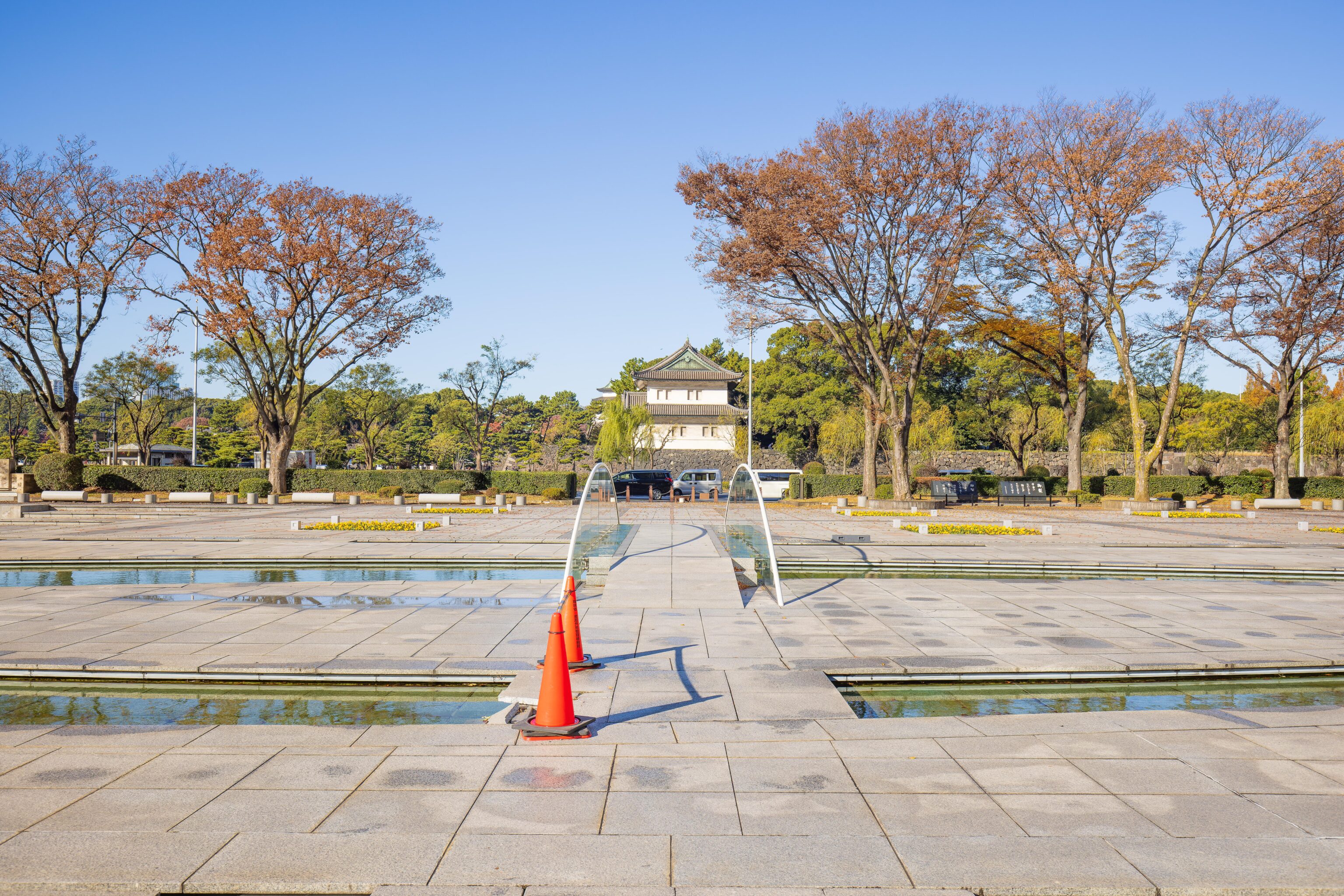
A tiny bit of floor tile in need of maintenance here.
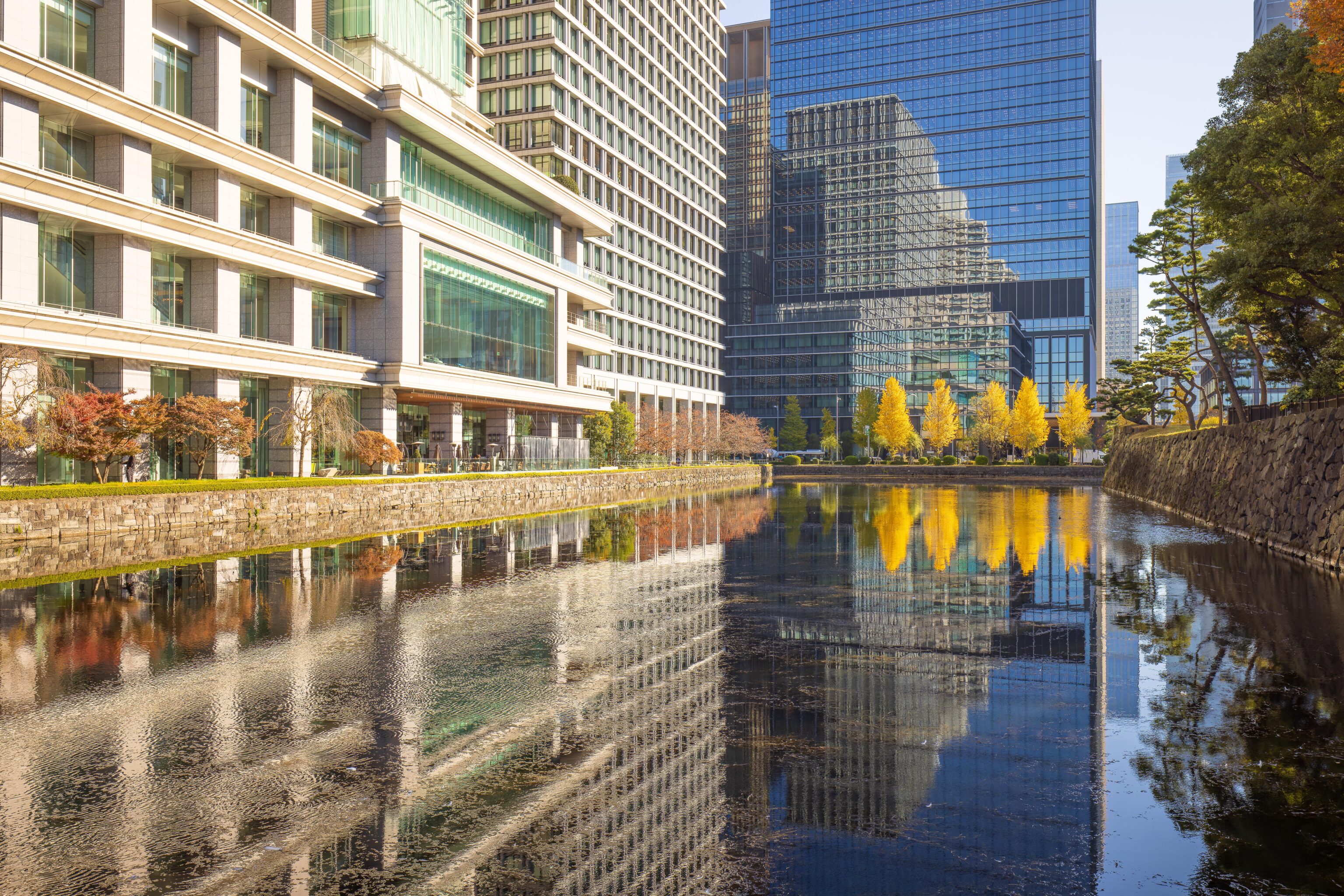
A nice view looking to the east with a row of yellow ginkgo trees as we continued past the fountain park.
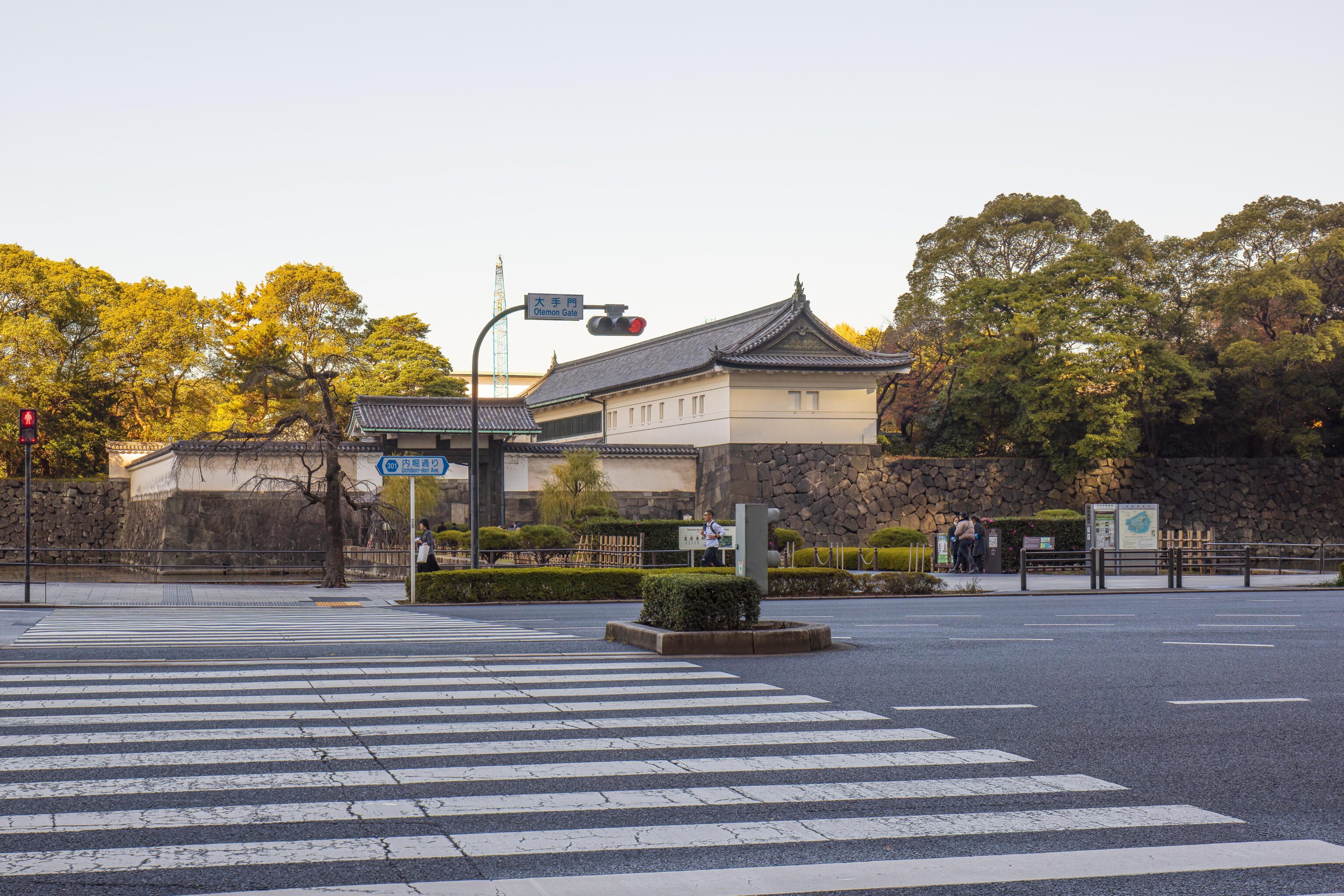
Soon, we saw the entrance to the East Gardens across the street in front of us.
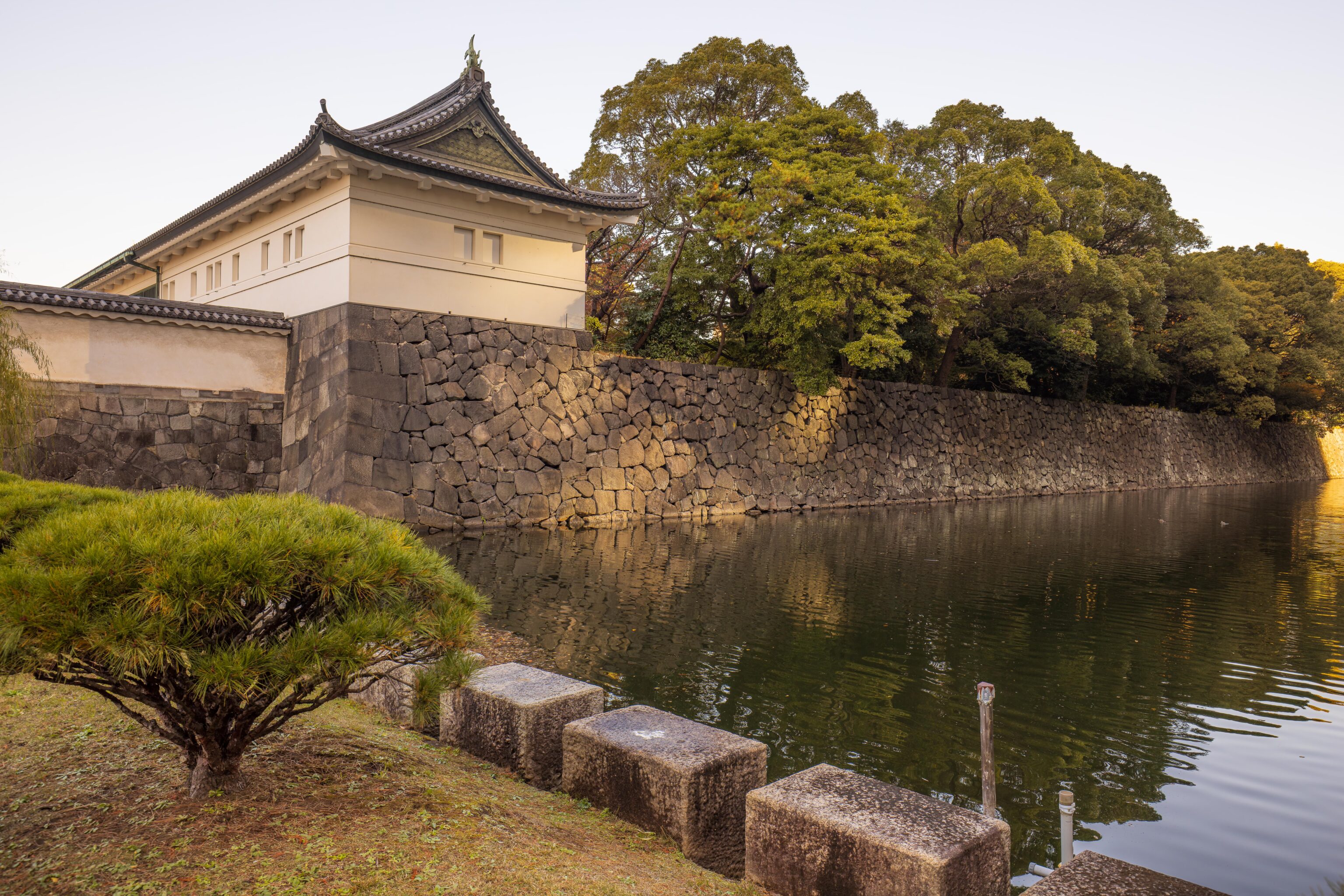
We walked across a bridge to enter the garden grounds. There is a small security check here as the gardens are managed by the Imperial Household Agency and are adjacent to the Imperial Palace.
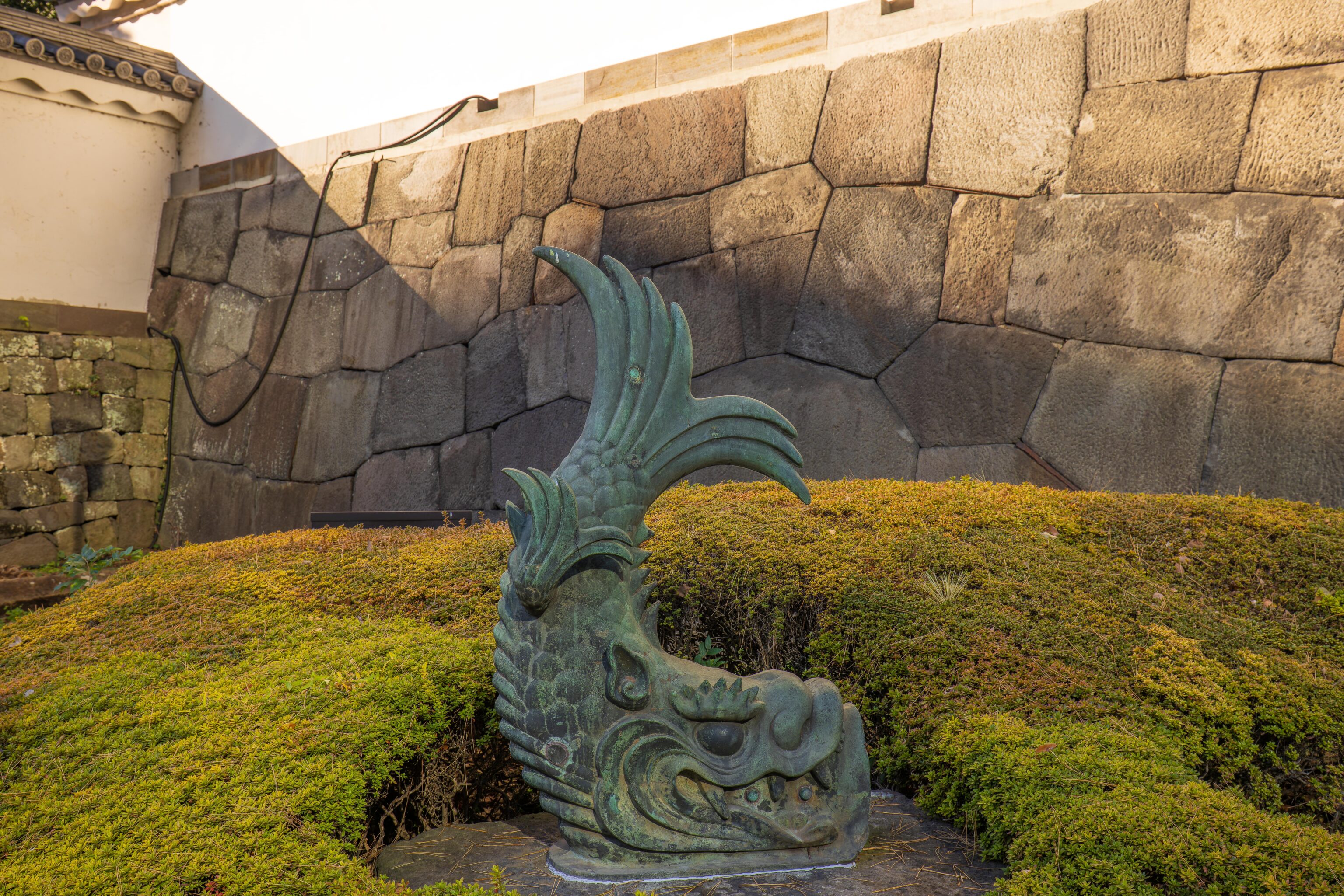
This decorative sculpture dates from 1657. A sign explains in English:
The decorative mythical sea creature beside this panel is from the roof of the original gate, where it acted as a talisman against fire. The date 1657 is inscribed on its head.
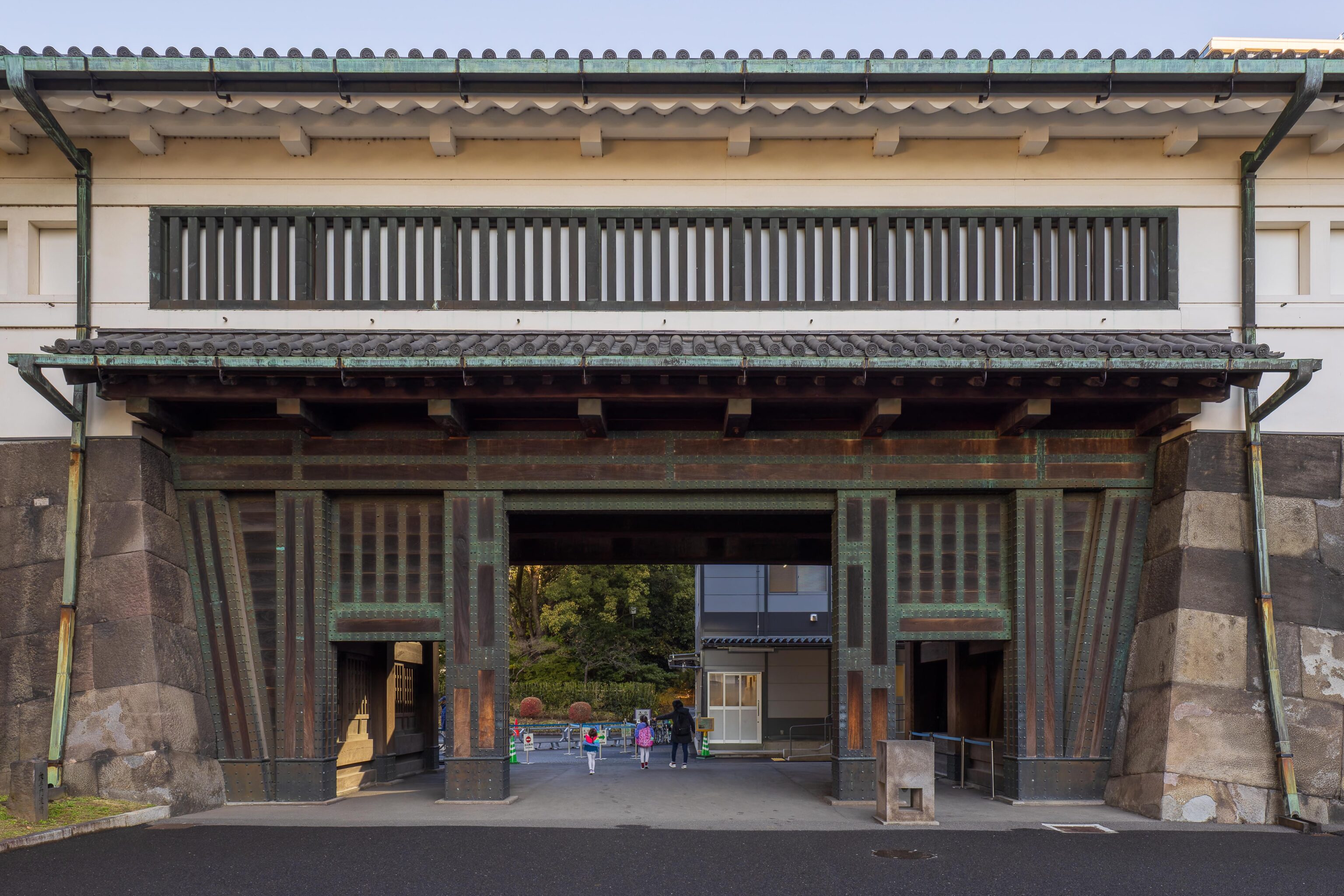
The gate referred to is this one. The same sign reads:
During the Tokugawa Shogunate (1603-1867), the Otemon Gate served as the main gate of Edo Catle, and it was used by the shogun and feudal lords. It consists of two gates, one small and one large, set at right angles. This was a device to slow down the momentum of attackers, and to trap the enemy in an enclosed space where they could be fired on from the larger gate's upper story. The larger gate was rebuilt in 1967 after being destroyed in an air raid during World War II.
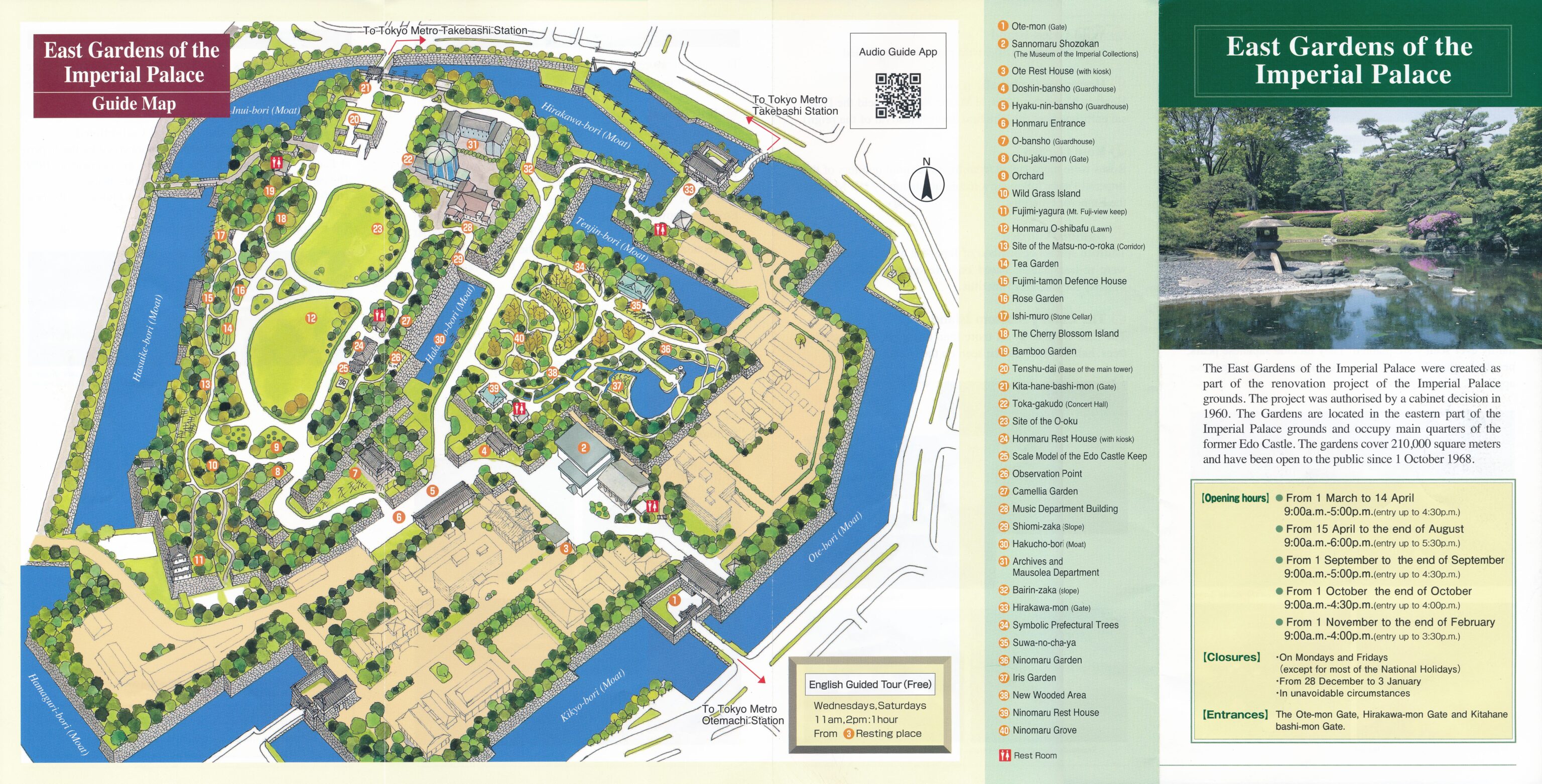
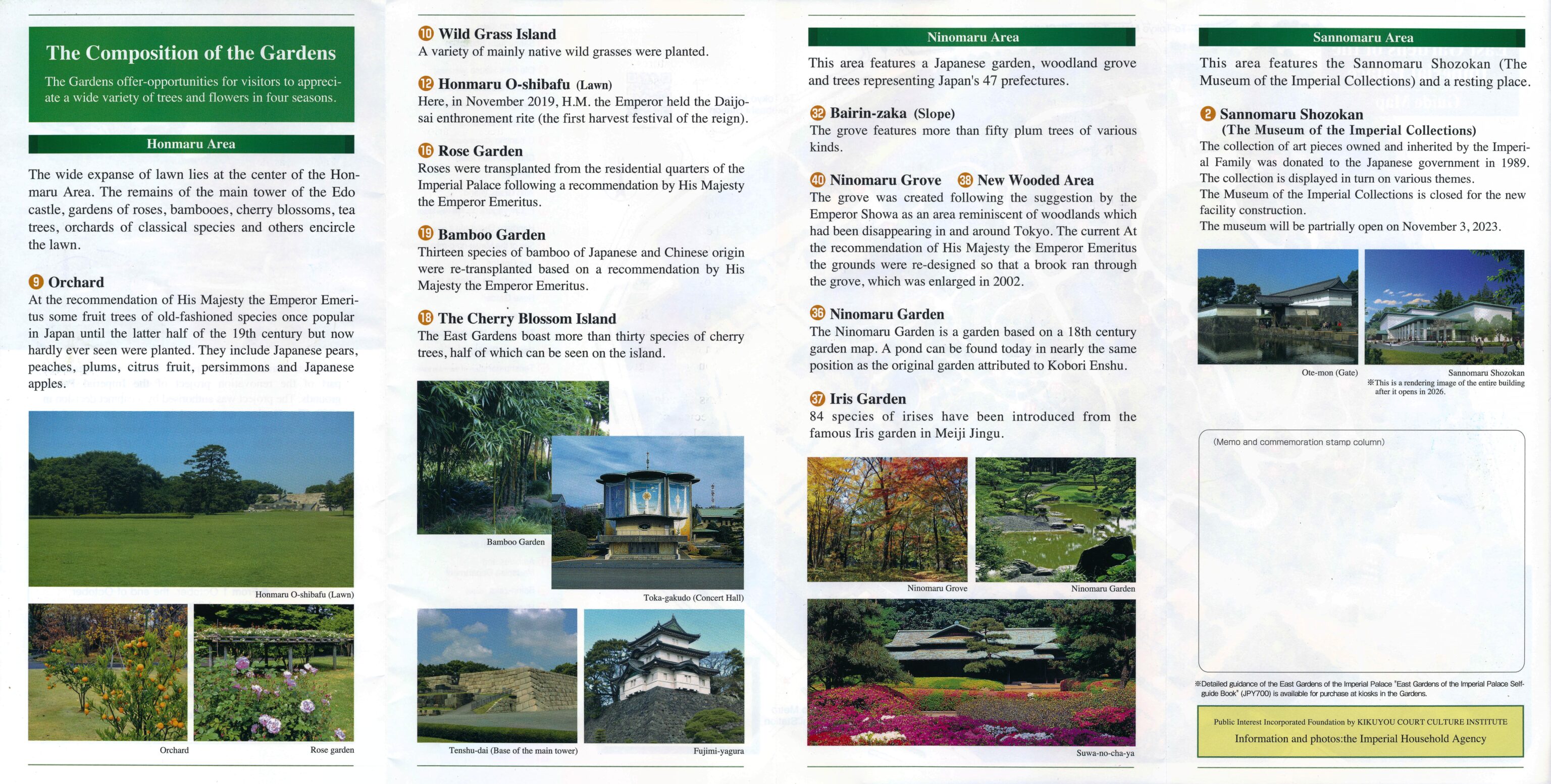
Just beyond the gate, we found an information center where we picked up a pamphlet. The Sannomaru Shozokan, an imperial museum just across the path, was being renovated but seemed to be open. There was a small queue of people outside. We continued on as we had limited time.
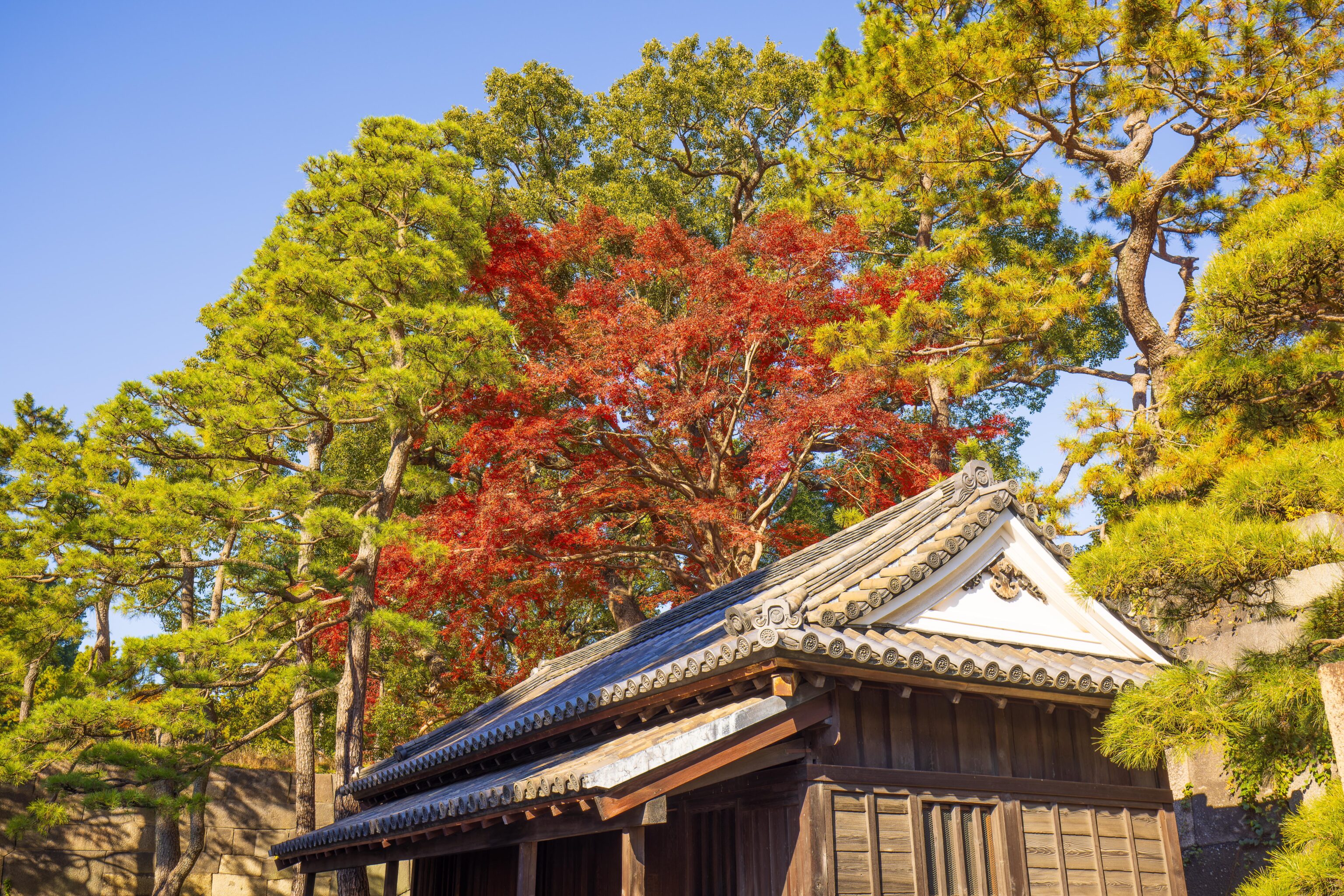
This small building is the Doshin Bansho Guardhouse. A helpful sign provided some information in English:
This guardhouse is one of three that survives from the Tokugawa Shogunate (1603-1867). It was manned by low-ranking samurai known as doshin, or constables, hence its name. Their job was to check visitors to the castle, and to keep watch over the retinues of the feudal lords as they waited for their masters to return from inside the honmaru complex. There are three different types of crests to be seen on the roof tiles. The triple hollyhock design is the family crest of the Tokugawa. In addition, there are Imperial chrysanthemum crests and the whorl of three commas of the mitsudomoe. The mitsudomoe crest dates back to the end of the Heian Period (794-1185), and was also used to ward off fires, since it represents water.
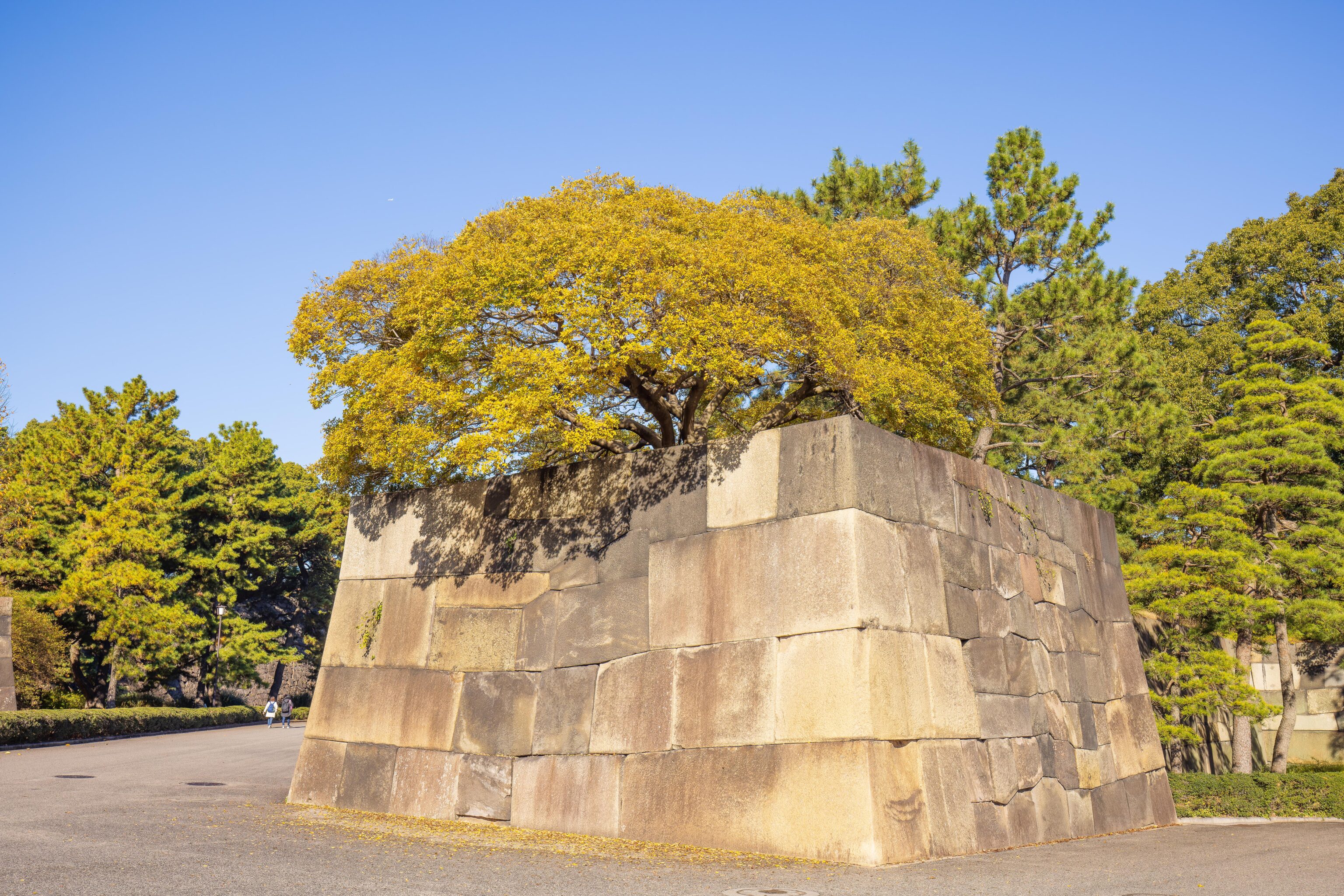
We walked past this large wall section with a yellow leafed tree above.
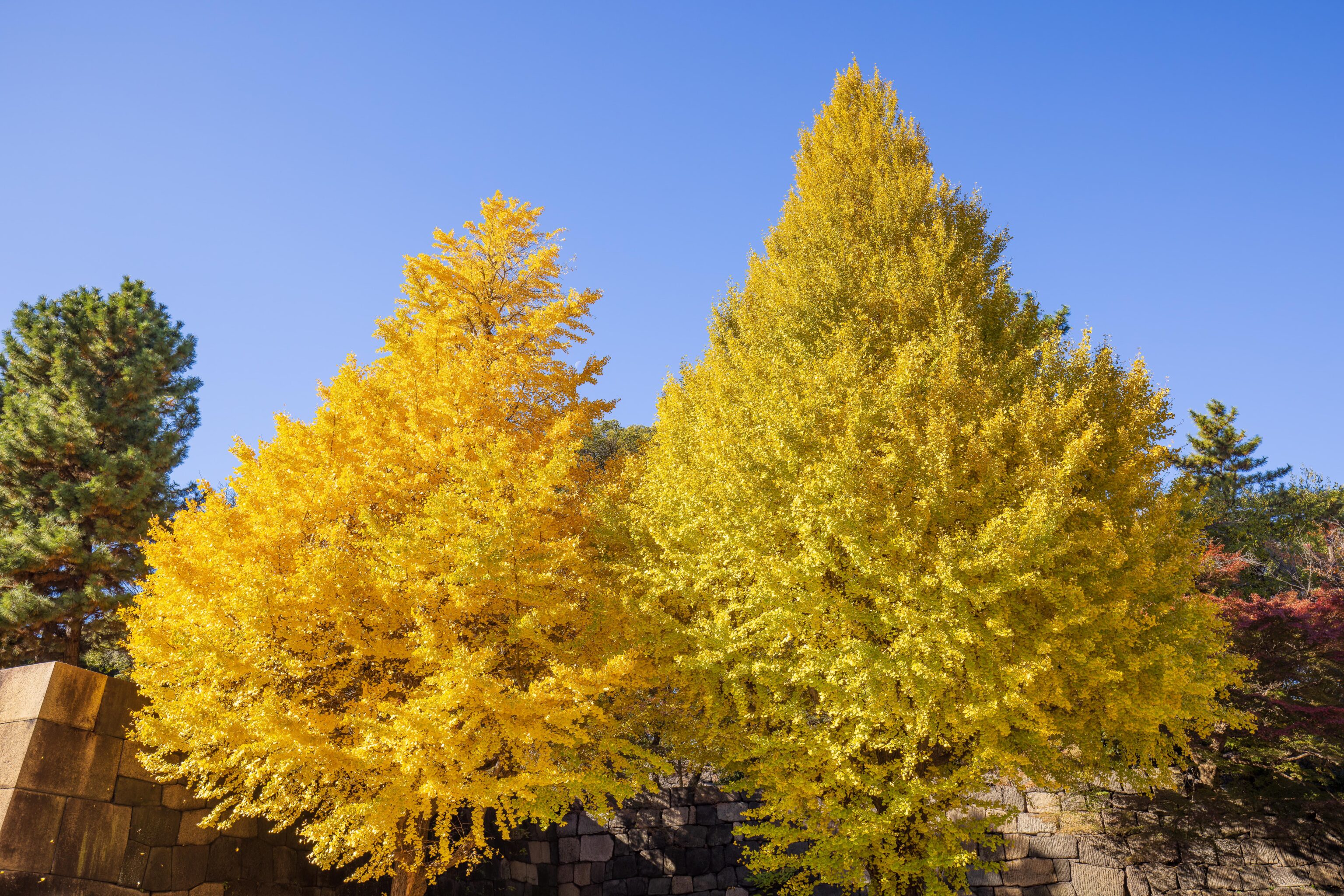
We saw two beautiful ginkgo trees just beyond.
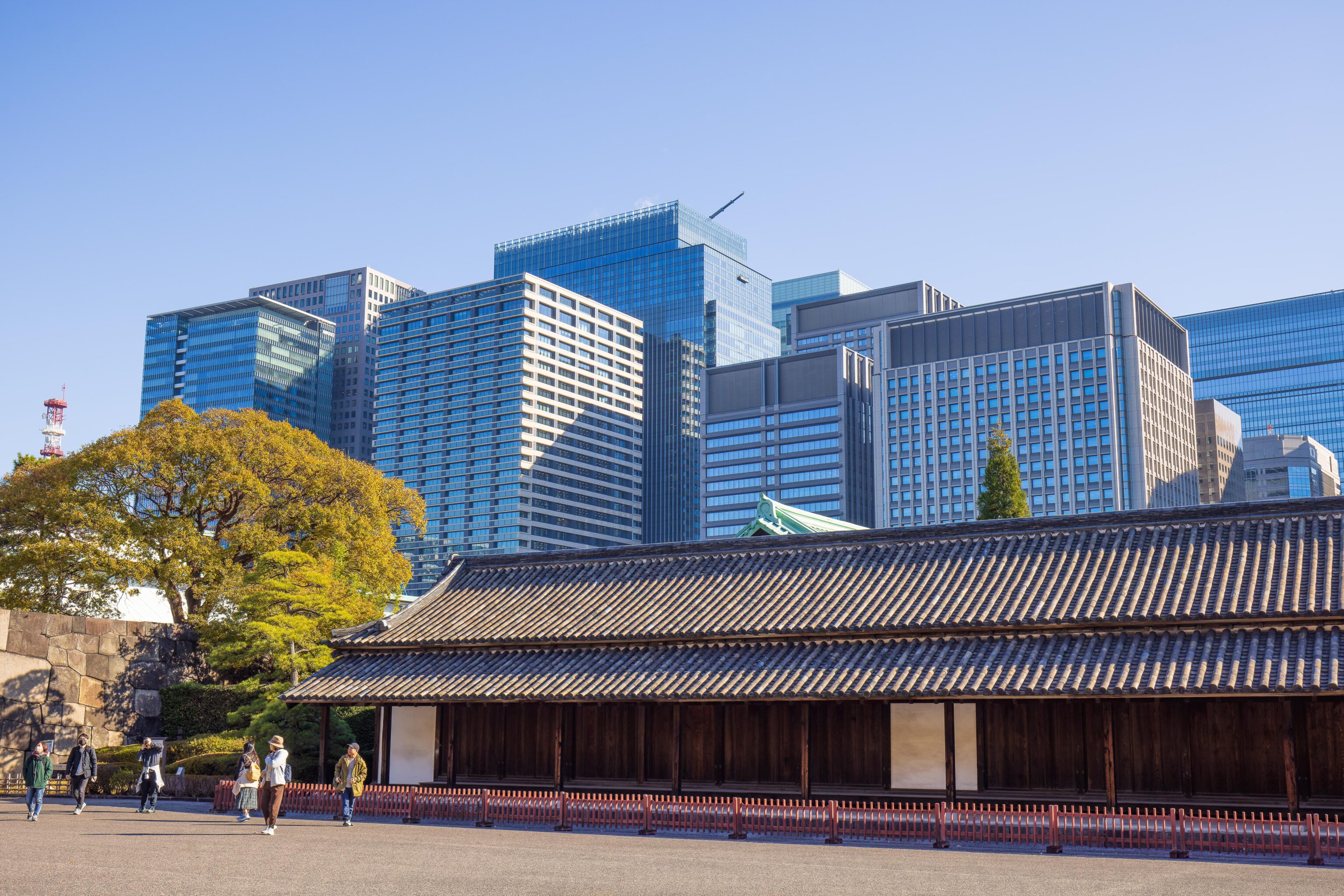
This was the view to the east, with the tall modern buildings of the Marunouchi district in the background. The building in the foreground is identified as the Hyaku Nin Bansho, a guardhouse, on the map.
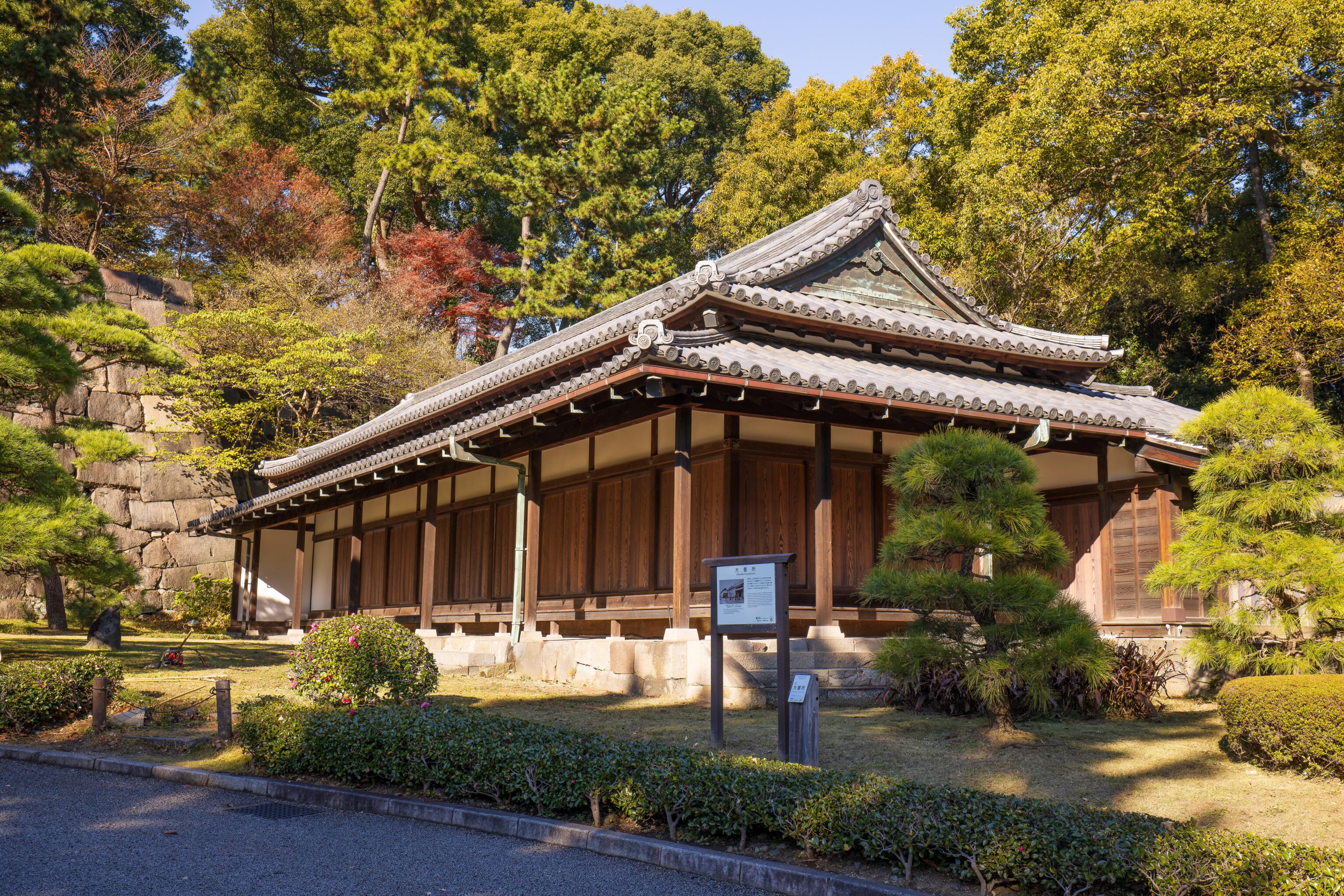
This building is the Obansho Guardhouse. The sign in front of it explains:
Obansho were guardhouses built at the strategically important gates of Edo Castle. This particular Obansho, one of three remaining at Edo Castle, is located near the back of the Naka no Mon, and was the final checkpoint for people going into the honmaru main compound of Edo Castle. Because of its important location, it was garrisoned by samurai of relatively high rank. It was converted into a workshop in the late nineteenth century after the fall of the shogunate, but returned to its original appearance in 1968 when the East Gardens were opened to the public.
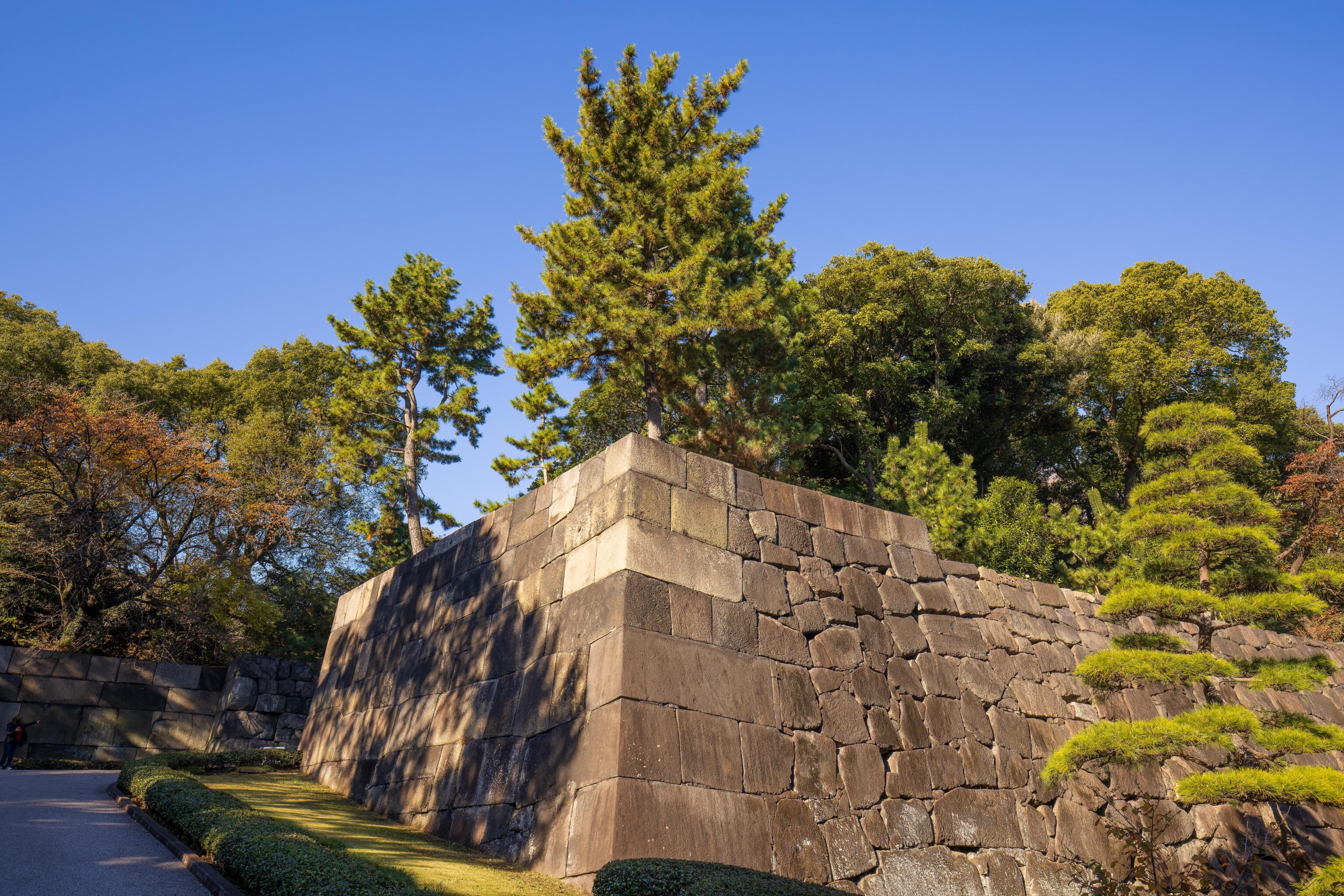
We headed up a slope to the western part of the gardens. This area is elevated and sits atop the former Edo Castle’s walls.
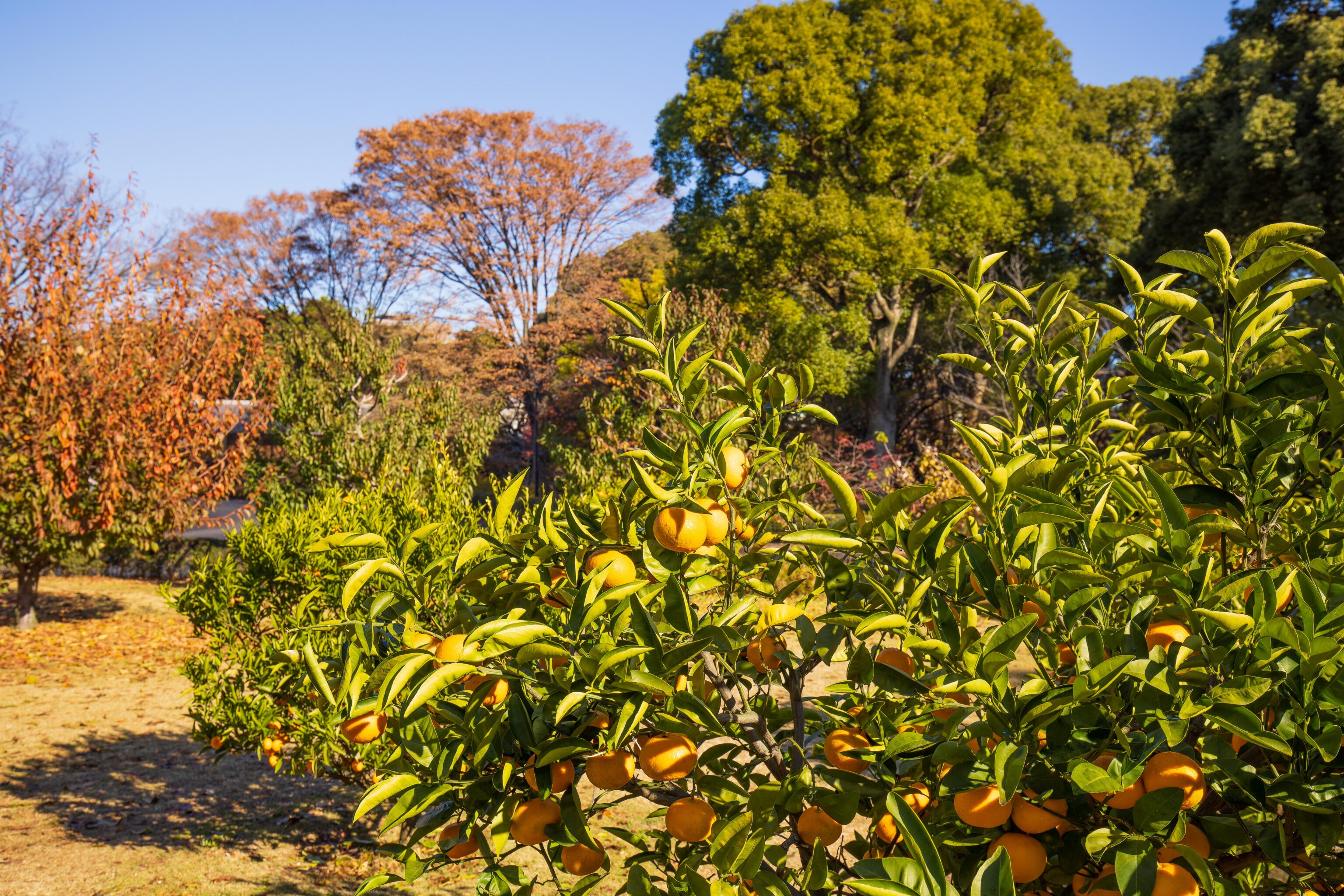
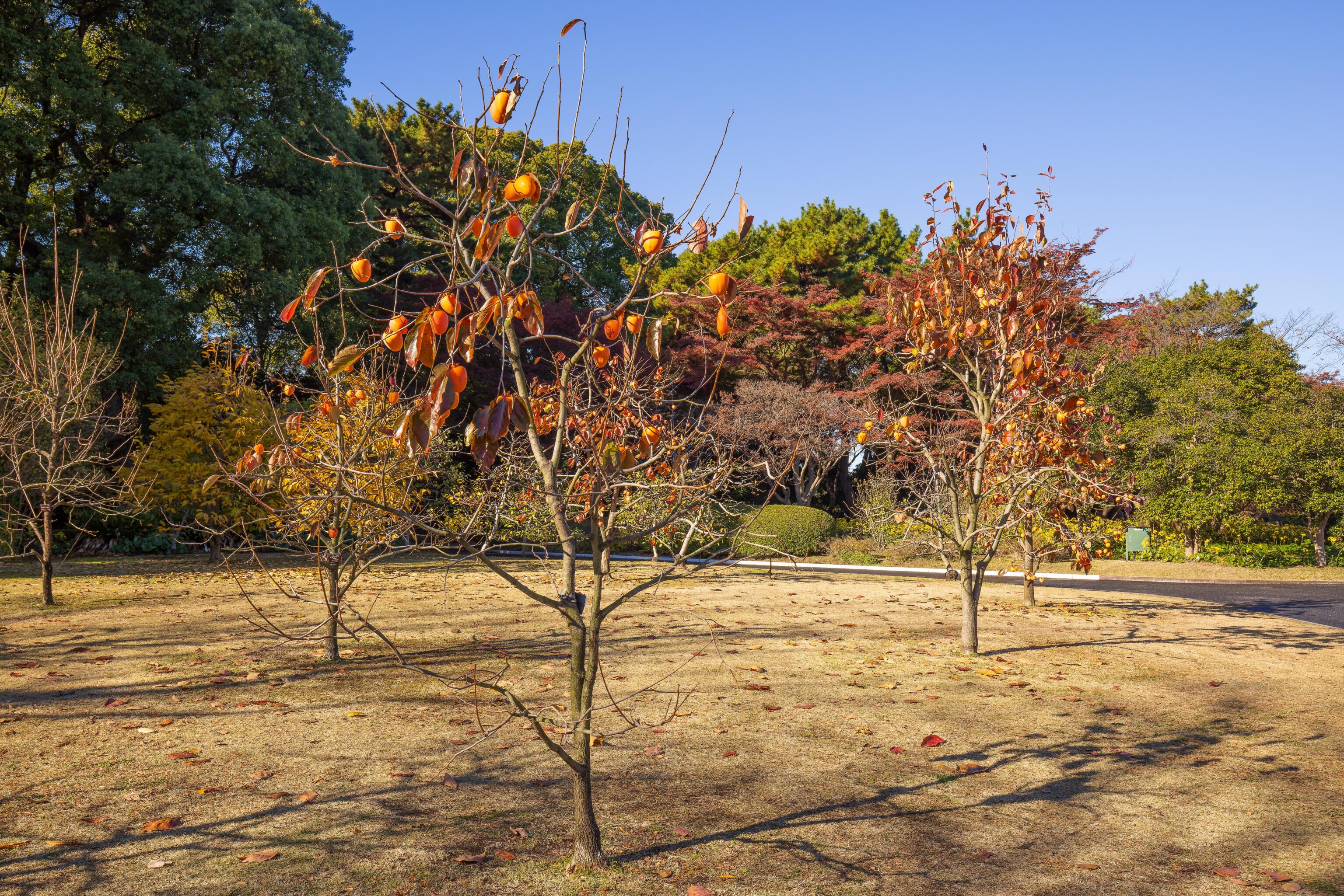
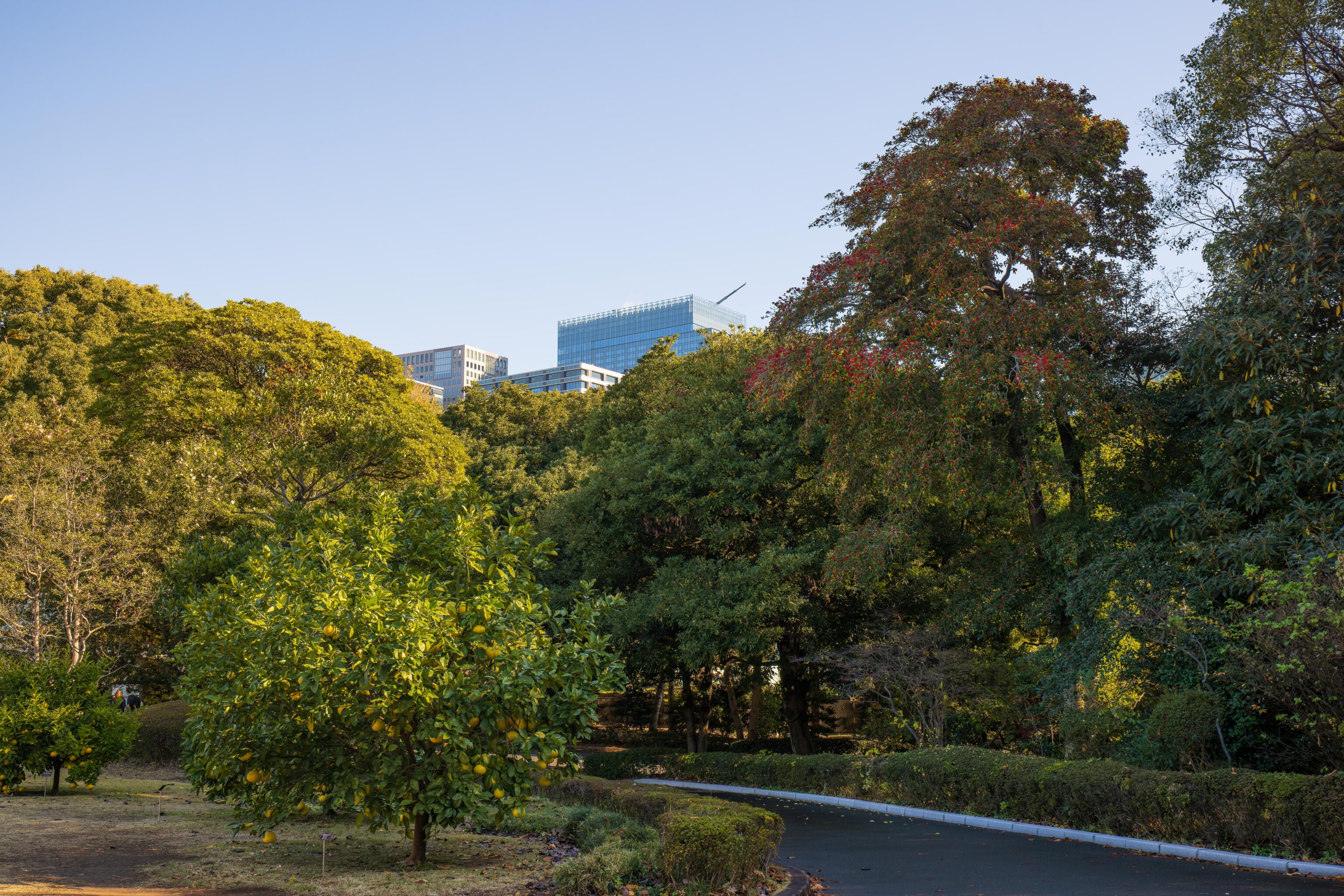
There was a small orchard just above the slope. Some of the trees had dropped most of their leaves but still held onto some fruit.
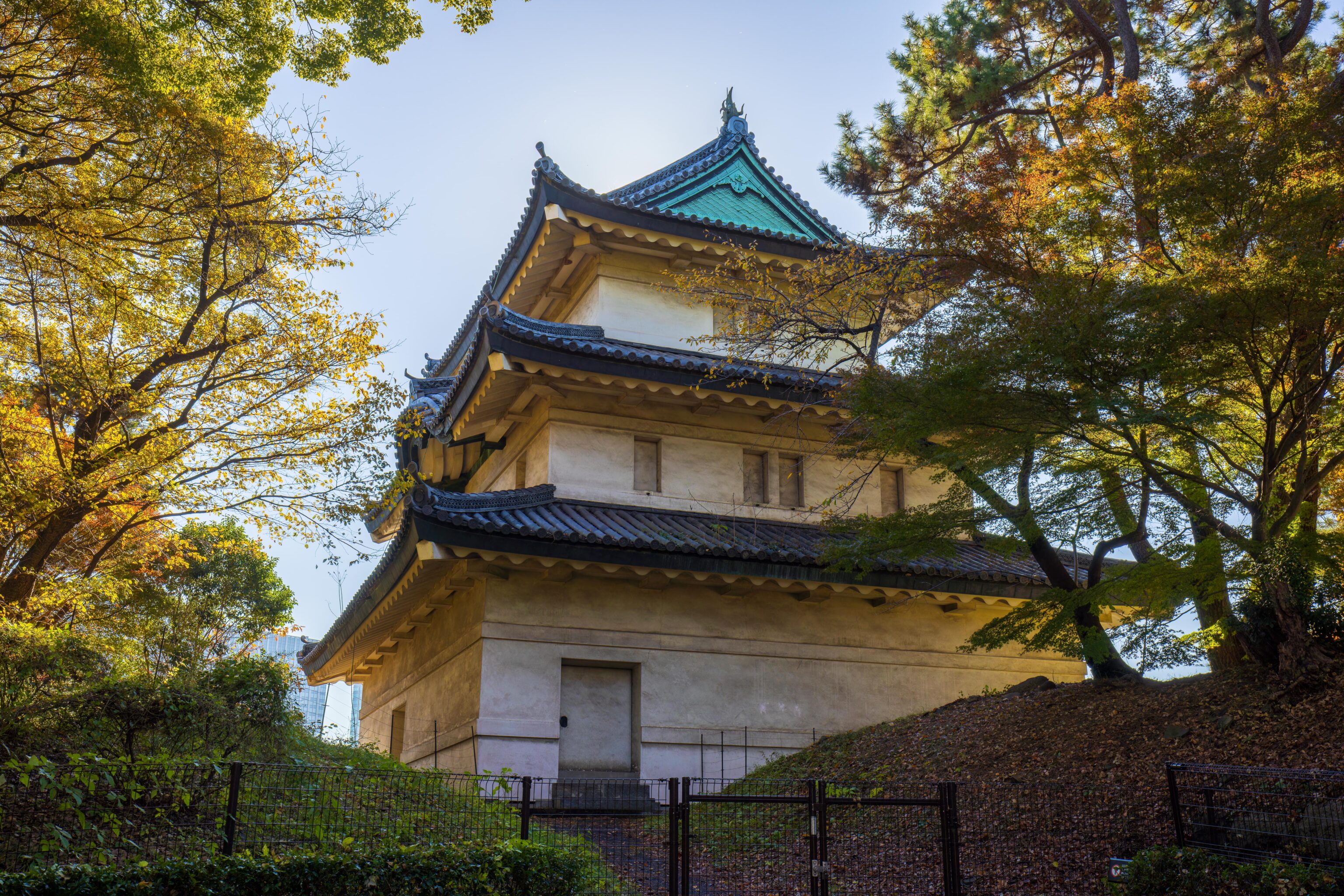
From the orchard, we walked to the south to reach this inaccessible castle turret. This particular turret is the Fujimi Yagura, at the southern corner of Edo Castle. Once again, a helpful sign was present:
Yagura turrets were built at strategic corners of the castle for the wide firing arcs they provided. Yagura served as defensive turrets in wartime and as weapon stores in peacetime. Edo Castle once had many yagura towers. The Fujimi Yagura is located on the southern corner of the honmaru main compound of Edo Castle, and probably dates from 1659, after the 1657 Great Fire of Meireki destroyed much of Edo, including the castle. Towering 16 metres above a 15-metre-high rampart, it became the symbol of Edo Castle after the loss of the main keep tower. The name "Fujimi" derives from the view of Mount Fuji, 100 kilometres away, which was once enjoyed from this yagura.
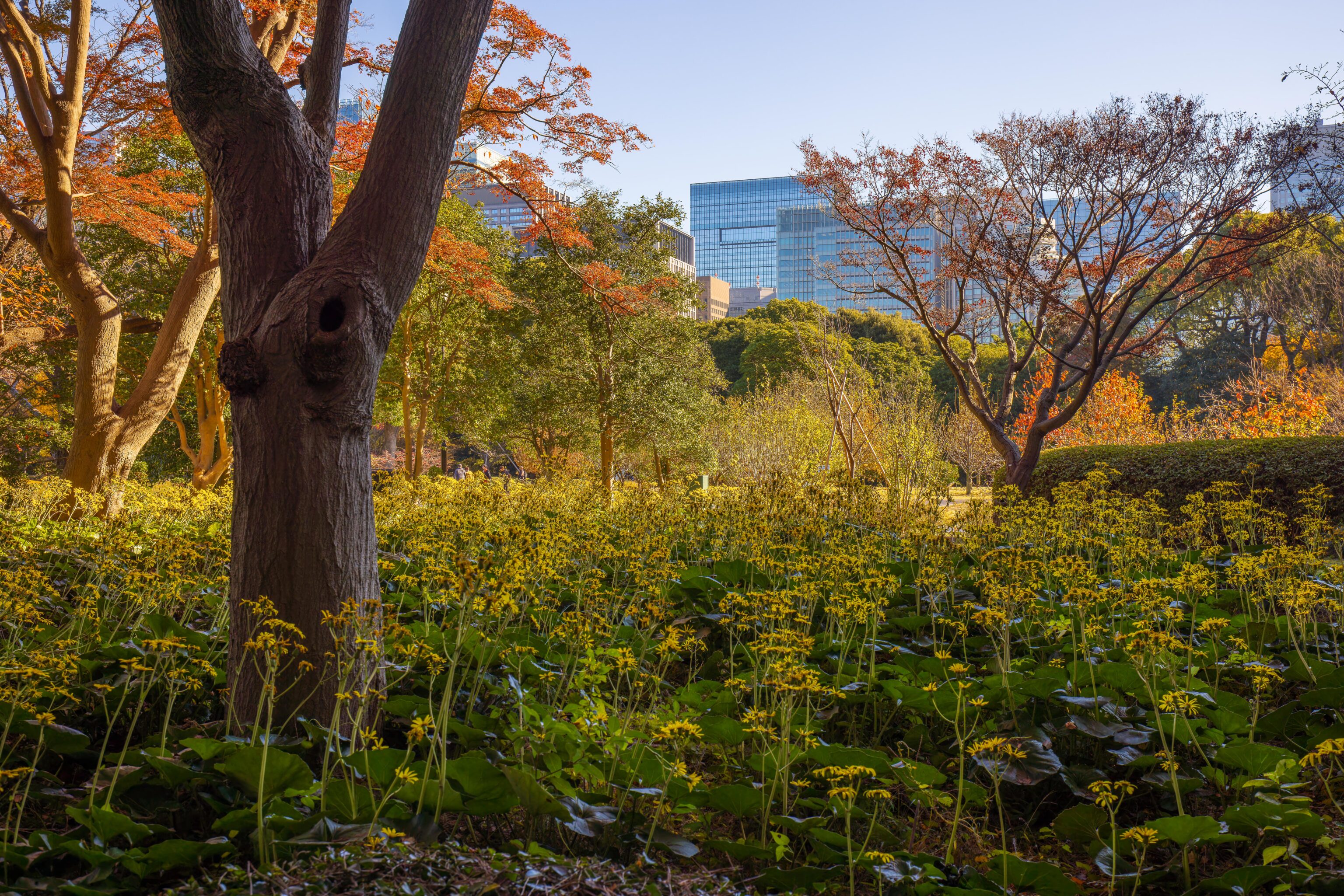
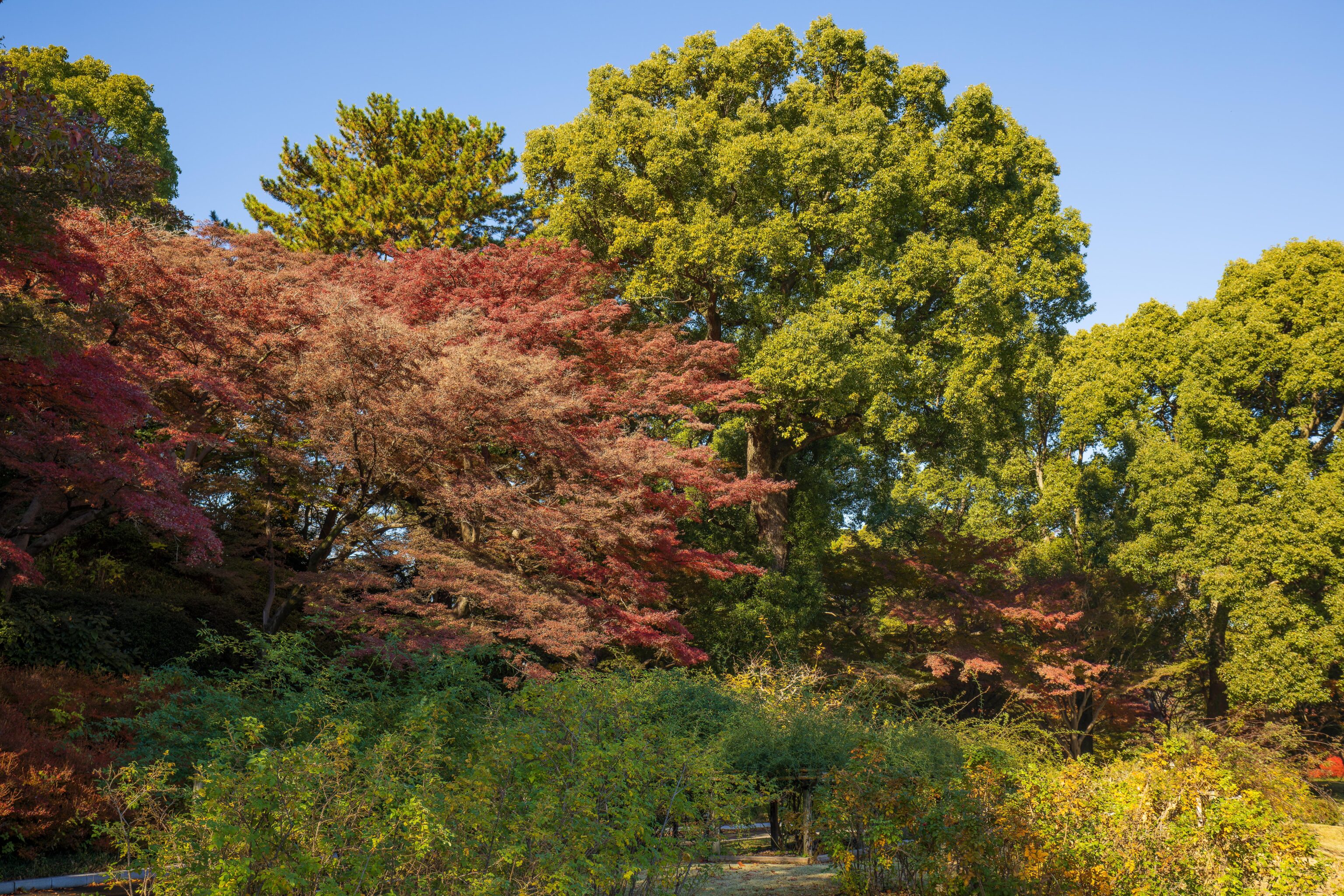
From the turret, we walked to the north along the western edge of the garden.
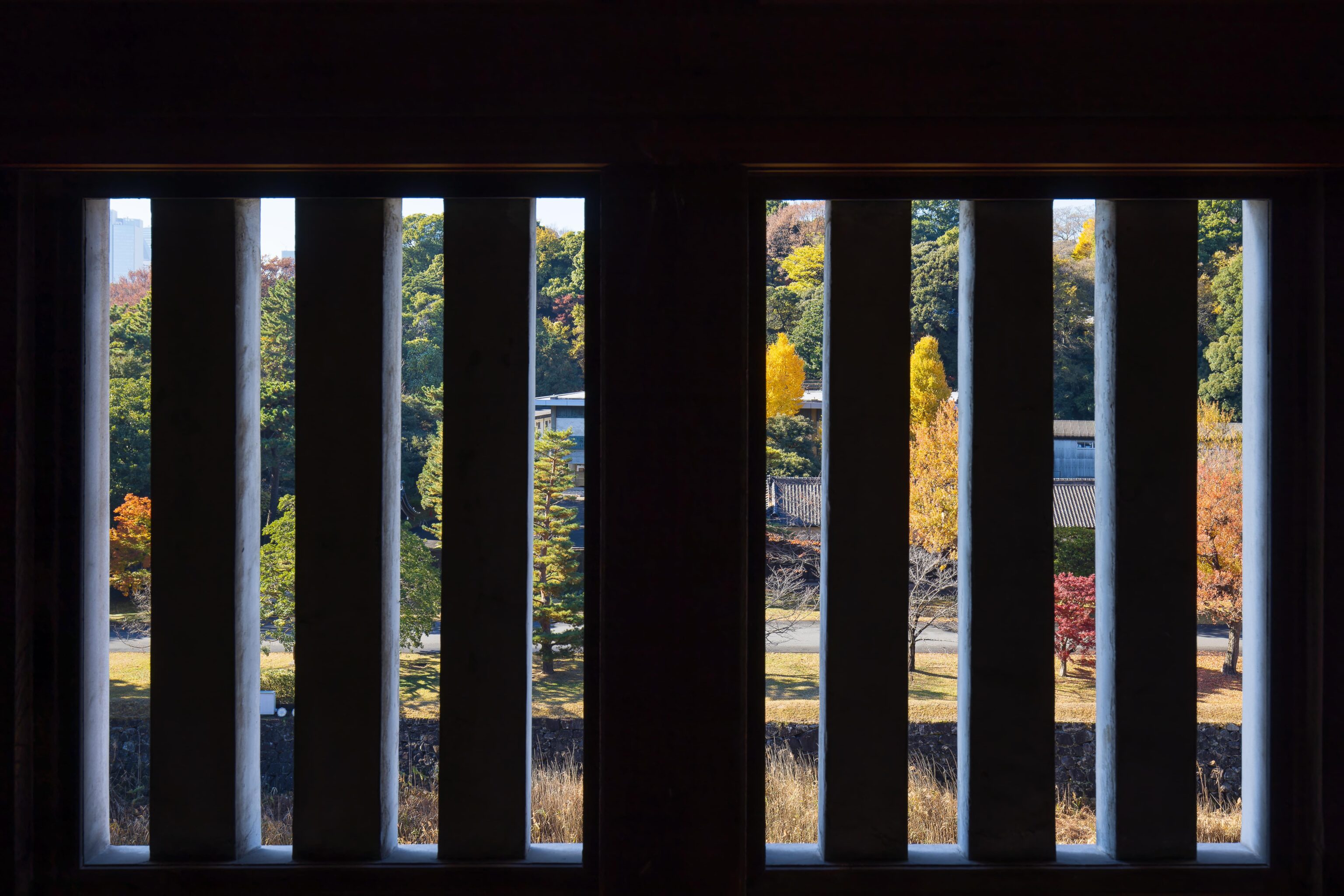
We briefly stopped at the Fujimi Tamon Defence House. It is one of the few buildings that can be entered. A sign provides some information:
A tamon generally refers to a single-storey gallery-like building that was built on the ramparts of a castle compound. It would be used for firing on attackers in wartime, and for the storing of weapons in peacetime. Believed to date from 1659, this tamon is the only one of the tamon in this area of the castle that survives. The Fujimi Tamon was so named because you could once see Mount Fuji from here. It was also called the "Gokyusoku Tamon," because of its proximity to the shogun's daytime quarters (Gokyusoku), and might have served a special purpose.
Although this building overlooks the eastern edge of the Imperial Palace, it isn’t really possible to see anything of interest.
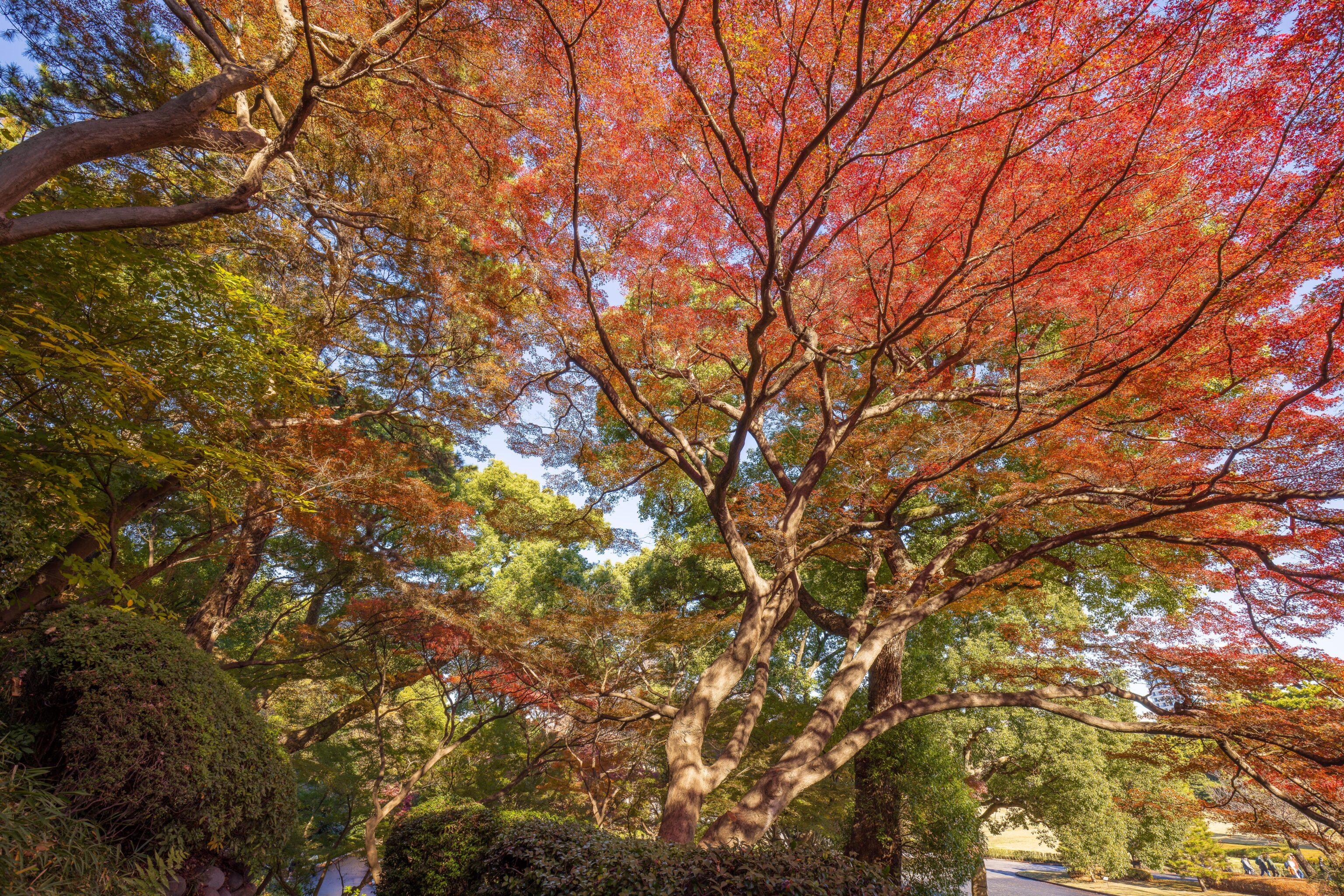
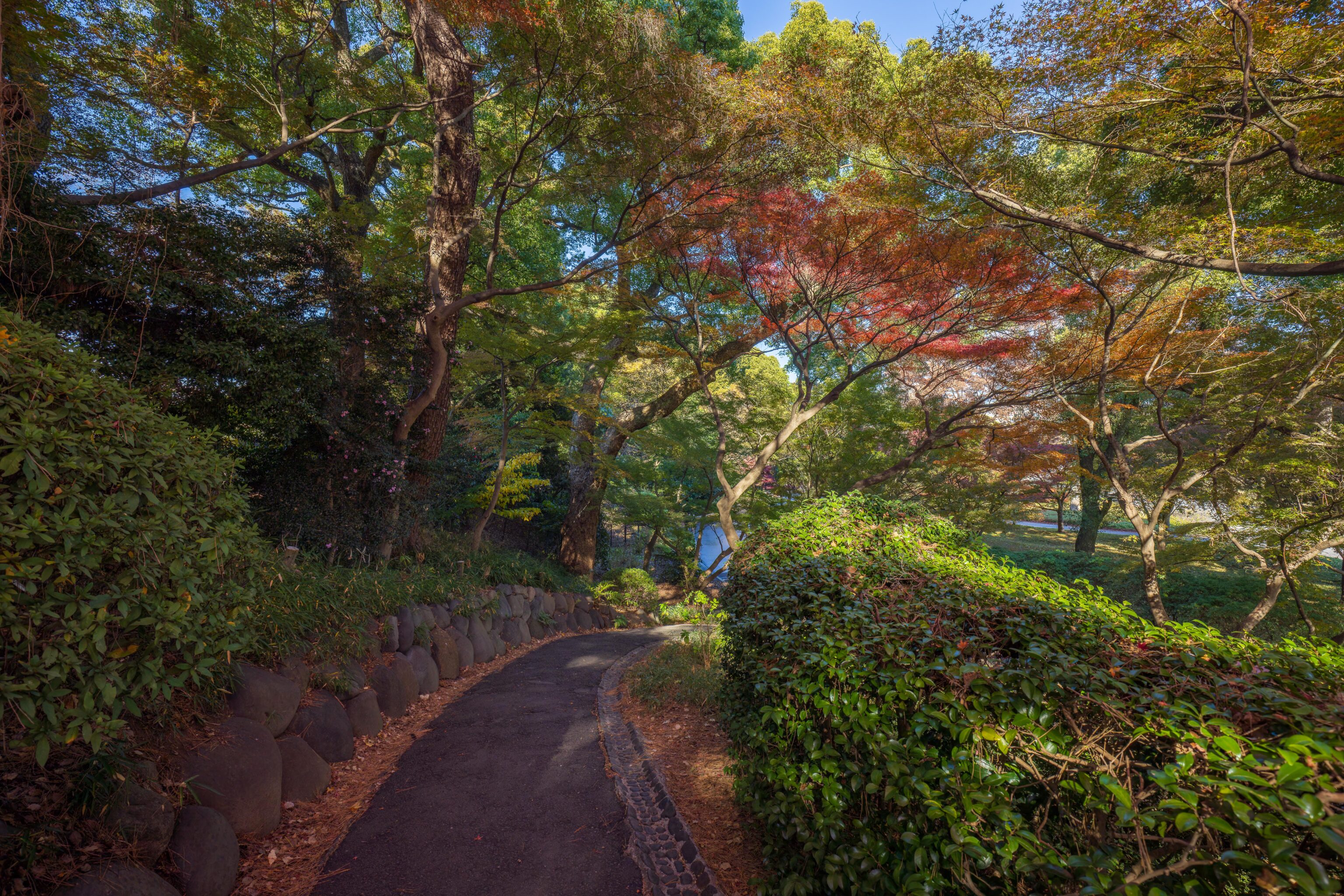
We continued walking to the north.
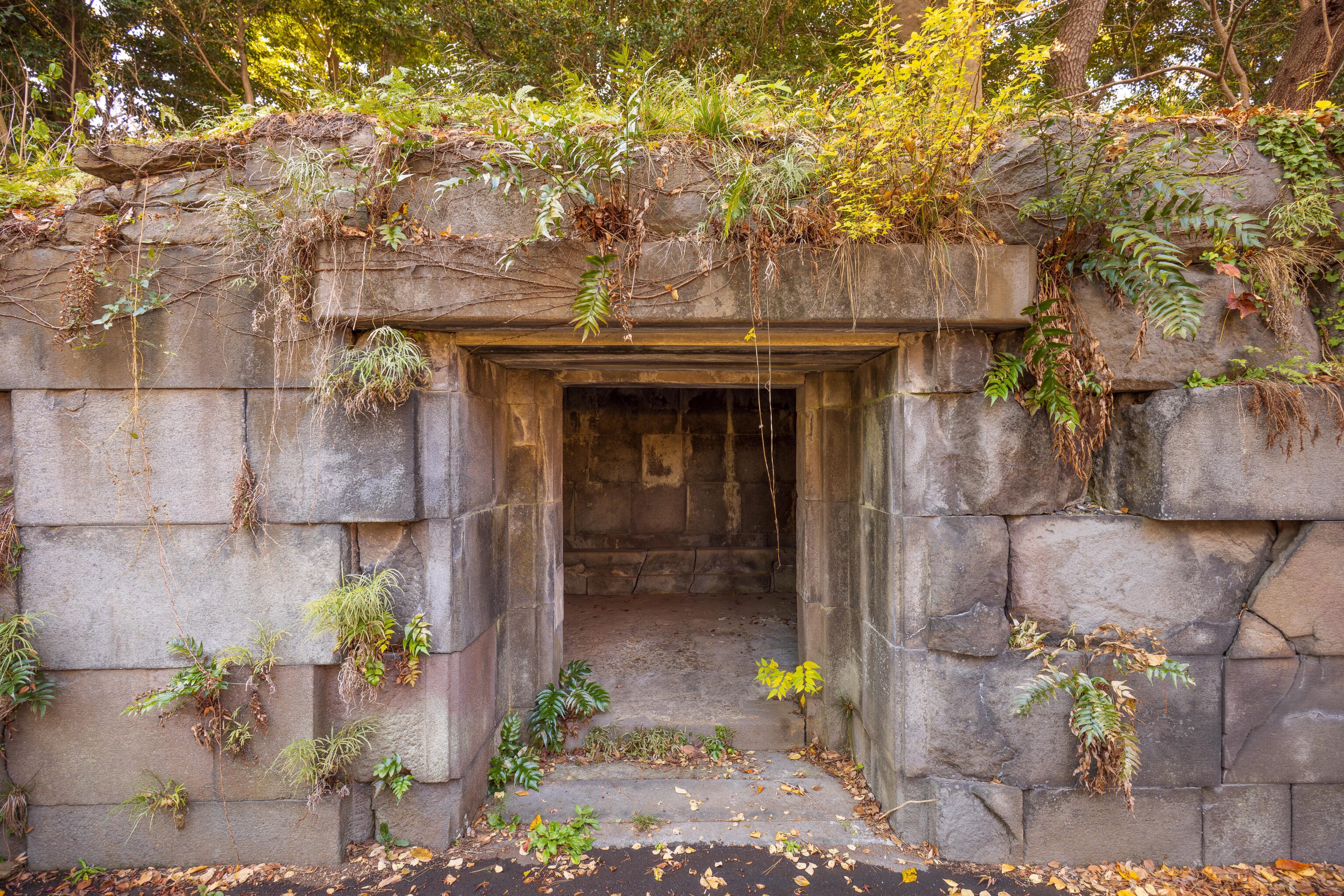
We passed by this underground stone room. A sign explained:
The exact purpose of this 20-square-metre stone cellar is not known. It is thought to have been a secret escape route for when the castle came under attack, or perhaps was used to protect valuable articles and documents from frequent fires. Located close to the site of the women's living quarters in the Edo Castle palace complex, it is possible that the shogun's consort and concubines used this cellar during fires.
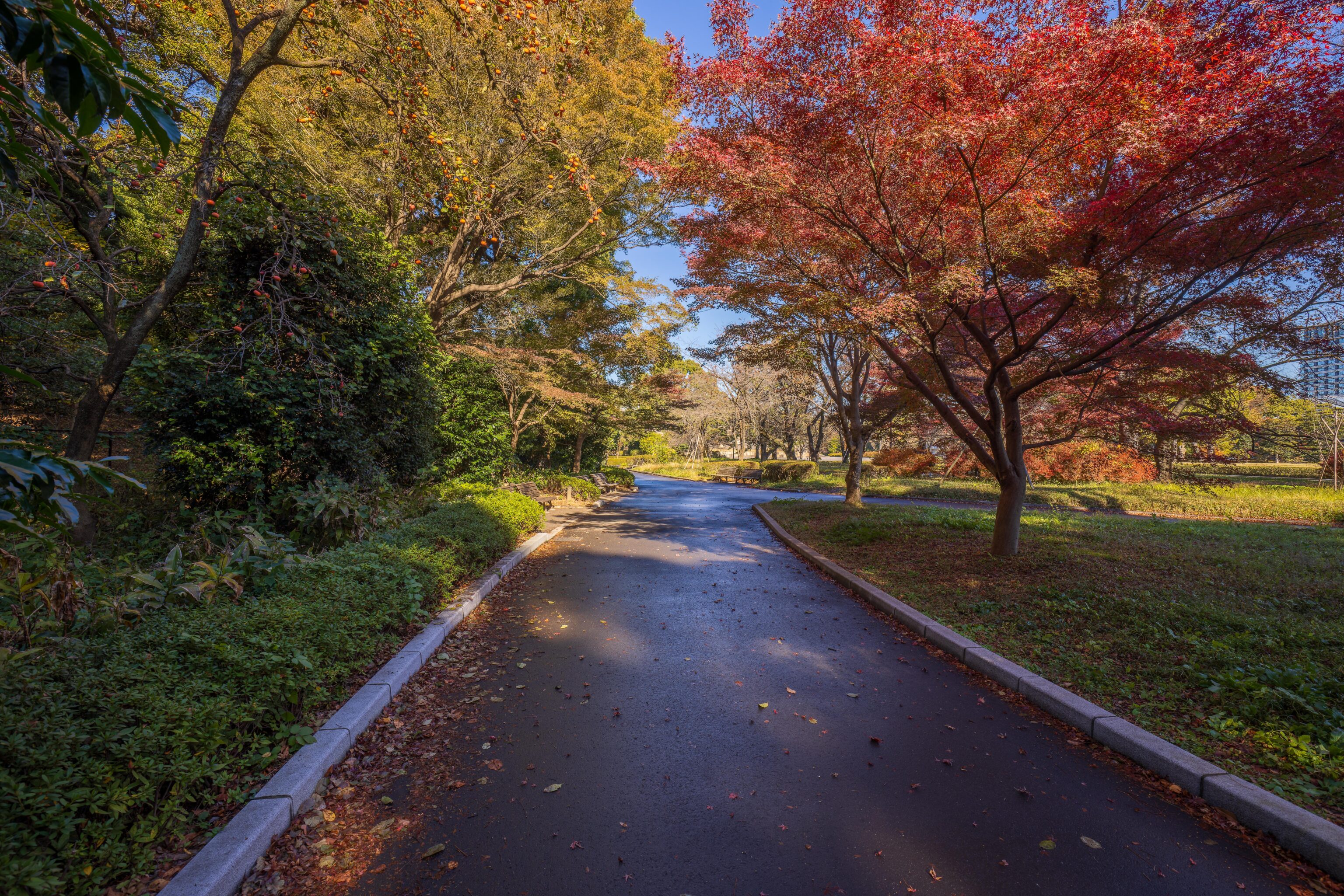
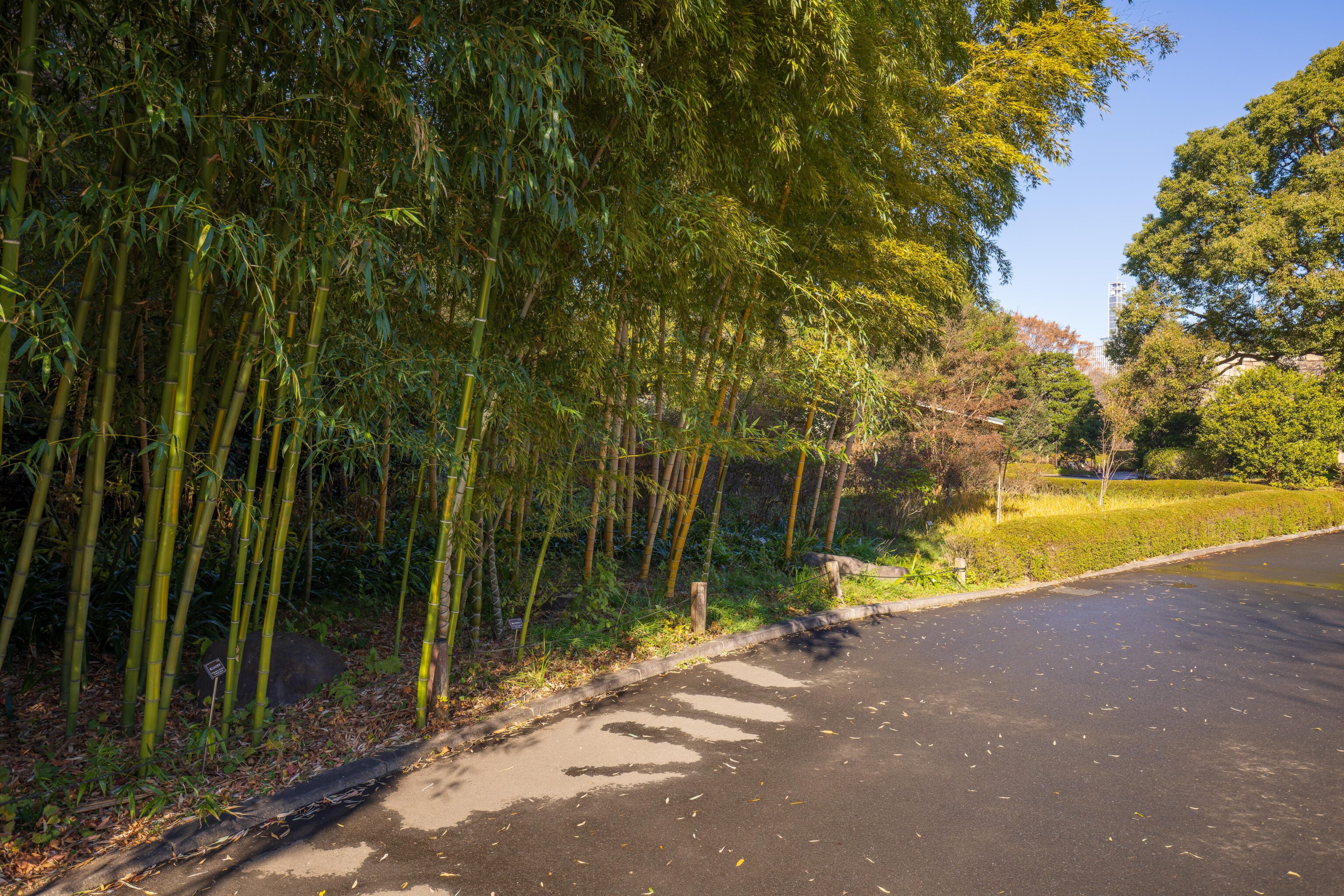
We again continued walking to the north.
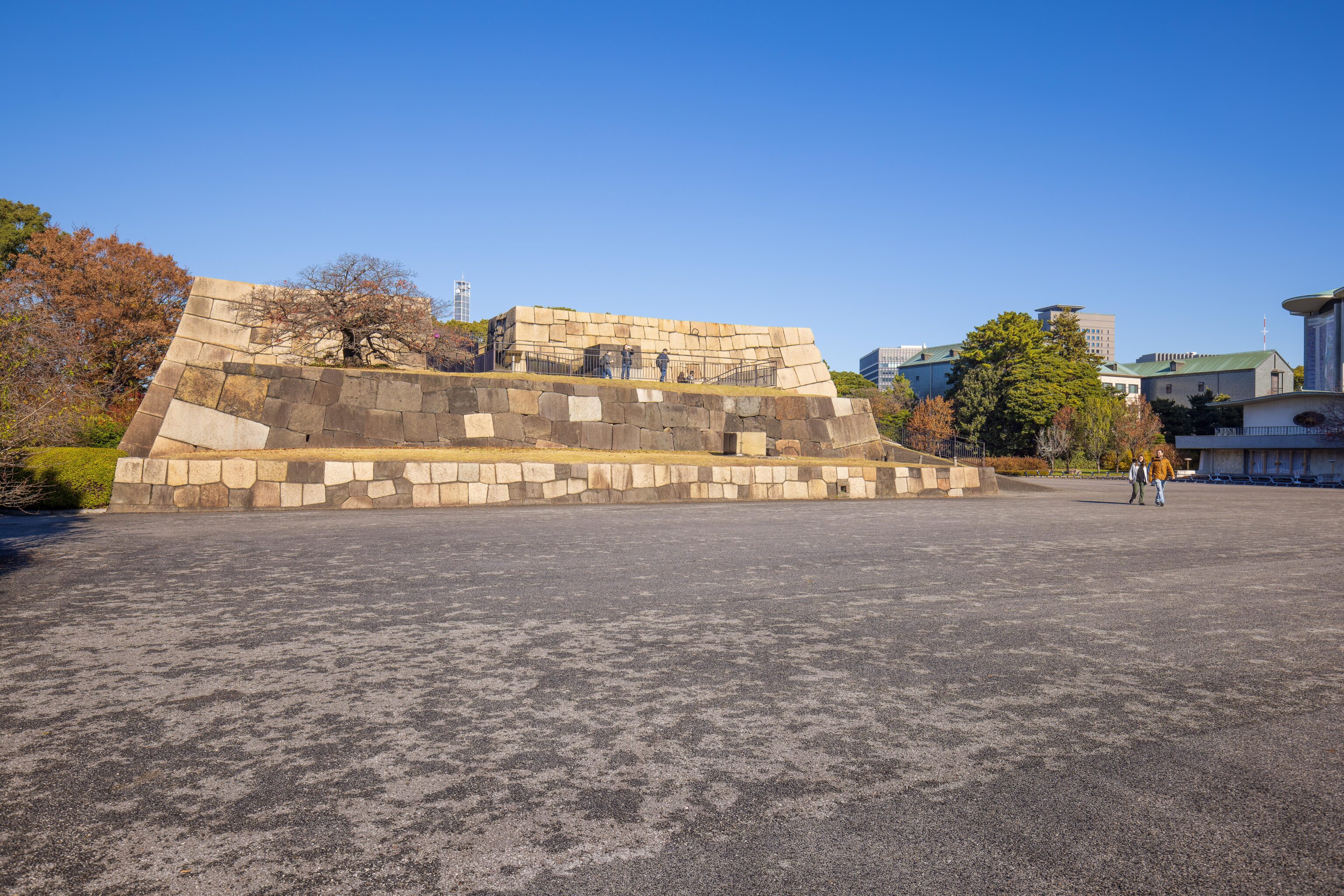
We finally reached the remains of Edo Castle’s keep. As usual, there was a helpful sign:
This was the site of the keep of Edo Castle. The keep tower was the tallest ever built in Japan. After the 1657 Great Fire of Meireki destroyed the third tower to stand on this site, the fourth shogun Tokugawa Ietsuna (1641-1680) immediately began work on a replacement, completing this foundation by 1658. Construction of the keep itself was abandoned when Ietsuna's uncle pointed out that a stable and peaceful Japan no longer needed such an enormous, awe-inspiring structure. The foundation for the unbuilt tower consists of two rectangles. The larger one-measuring 46 metres north to south, 42 metres east to west, and 10 metres tall-was for the tower itself, while the smaller one was for the entrance slope.
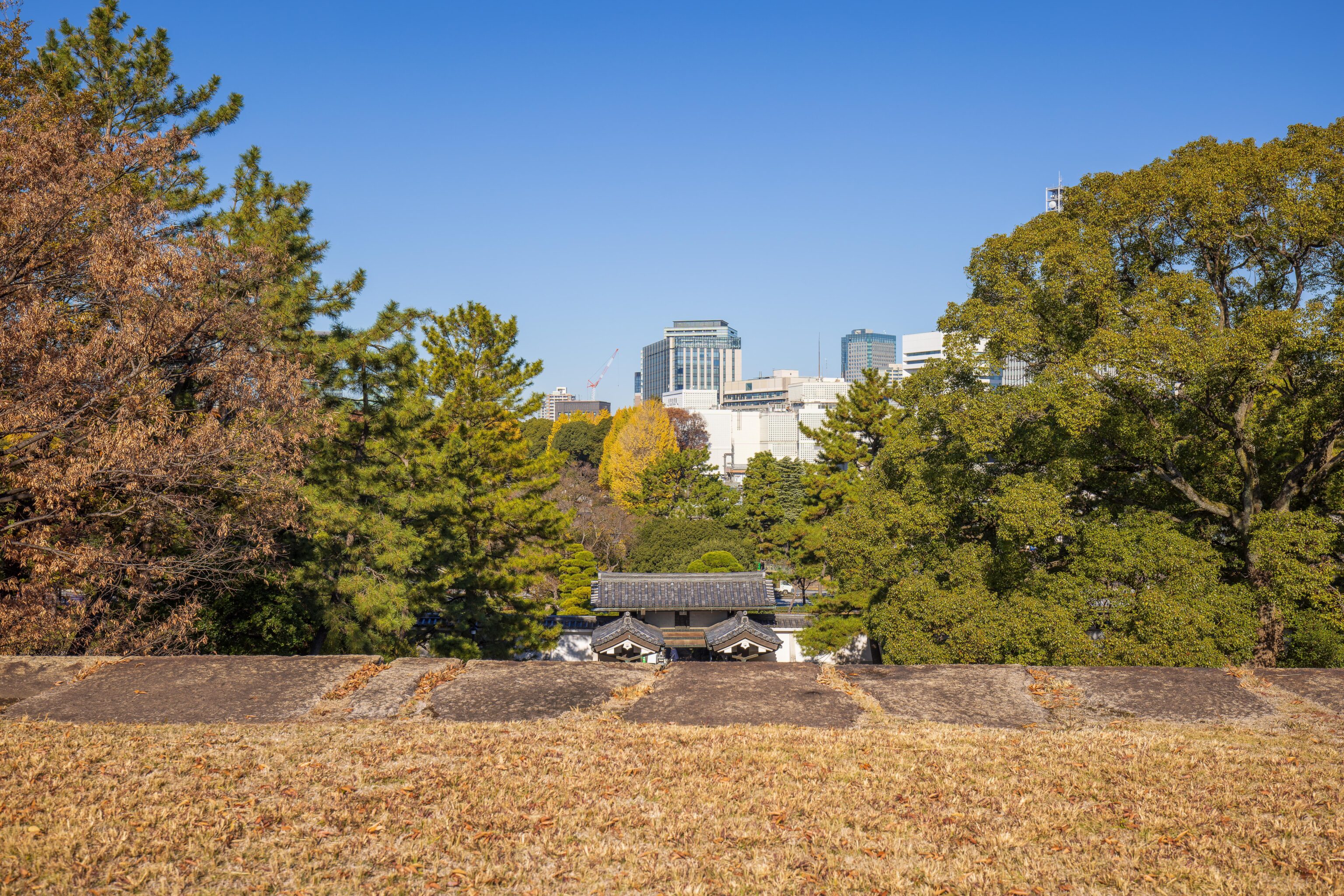
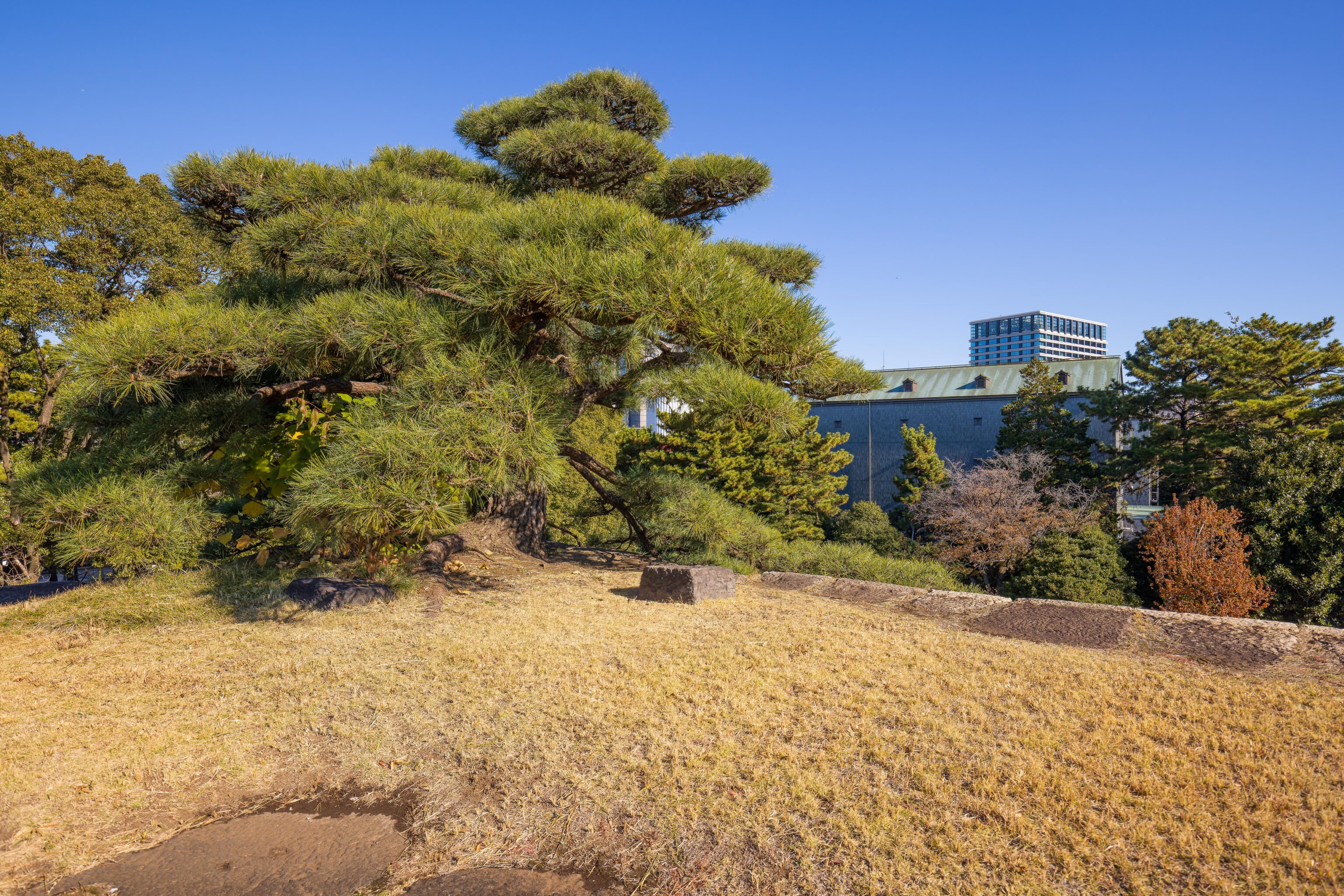
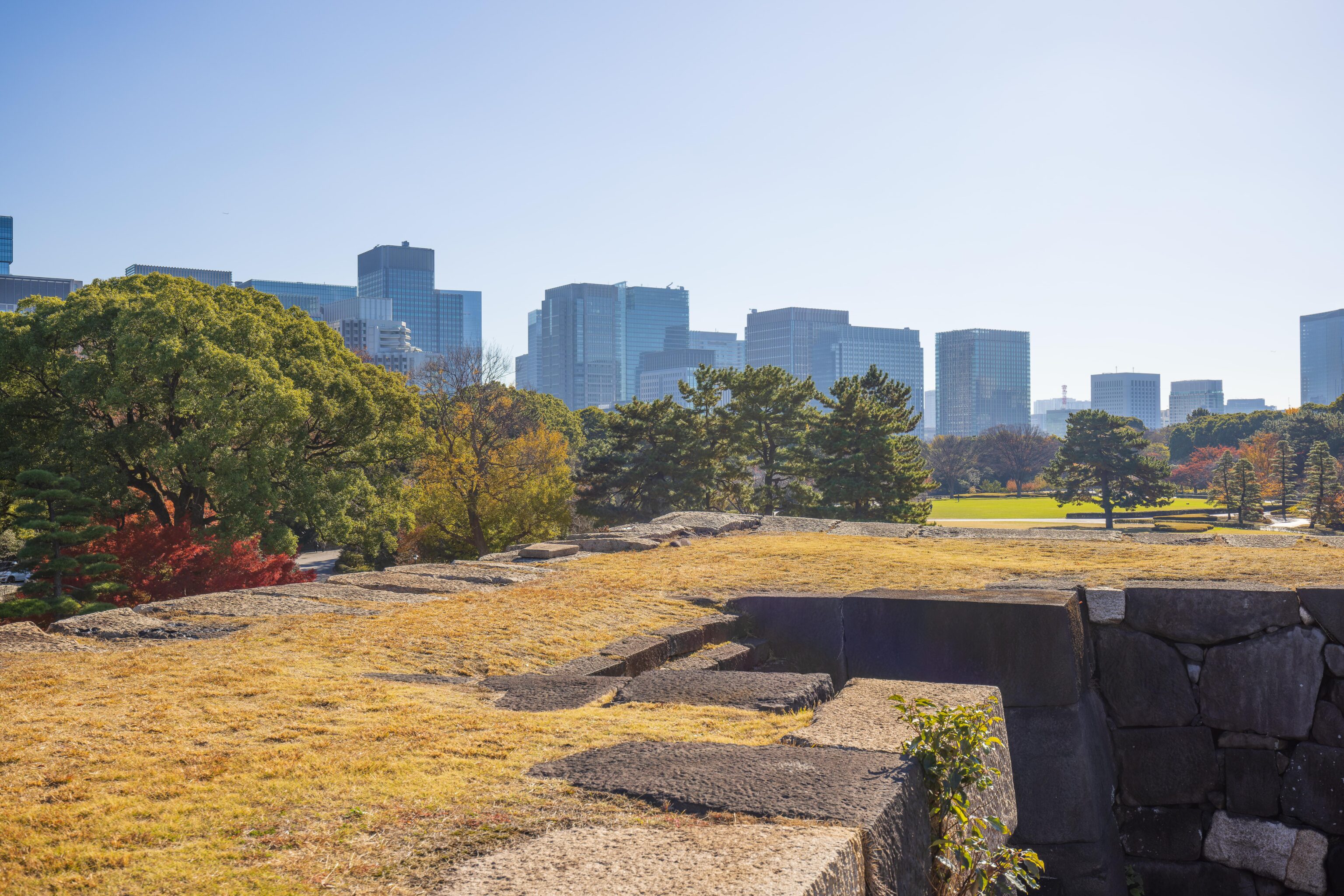
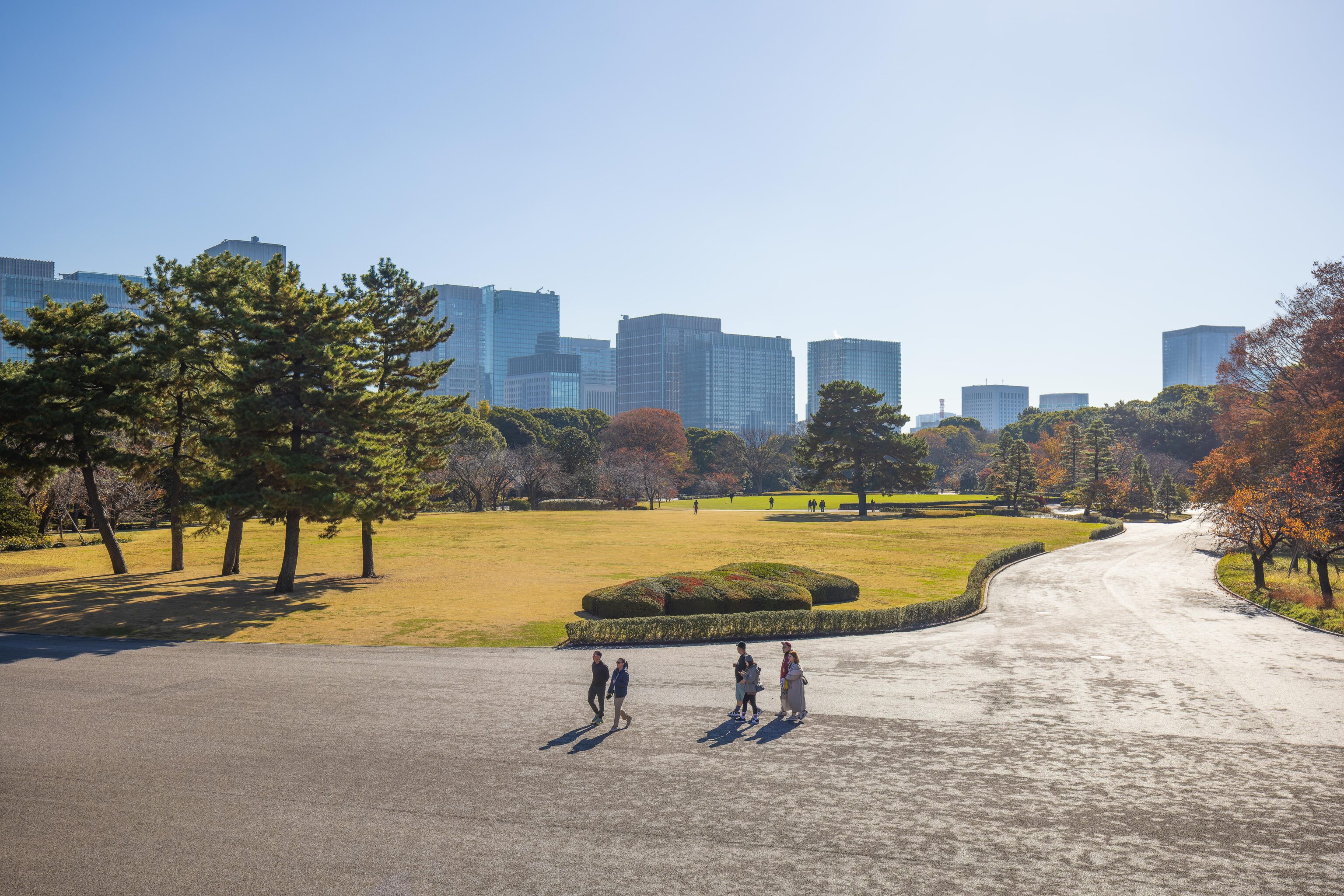
The top of the keep offers views of the surrounding area, though the trees limit what can be seen.
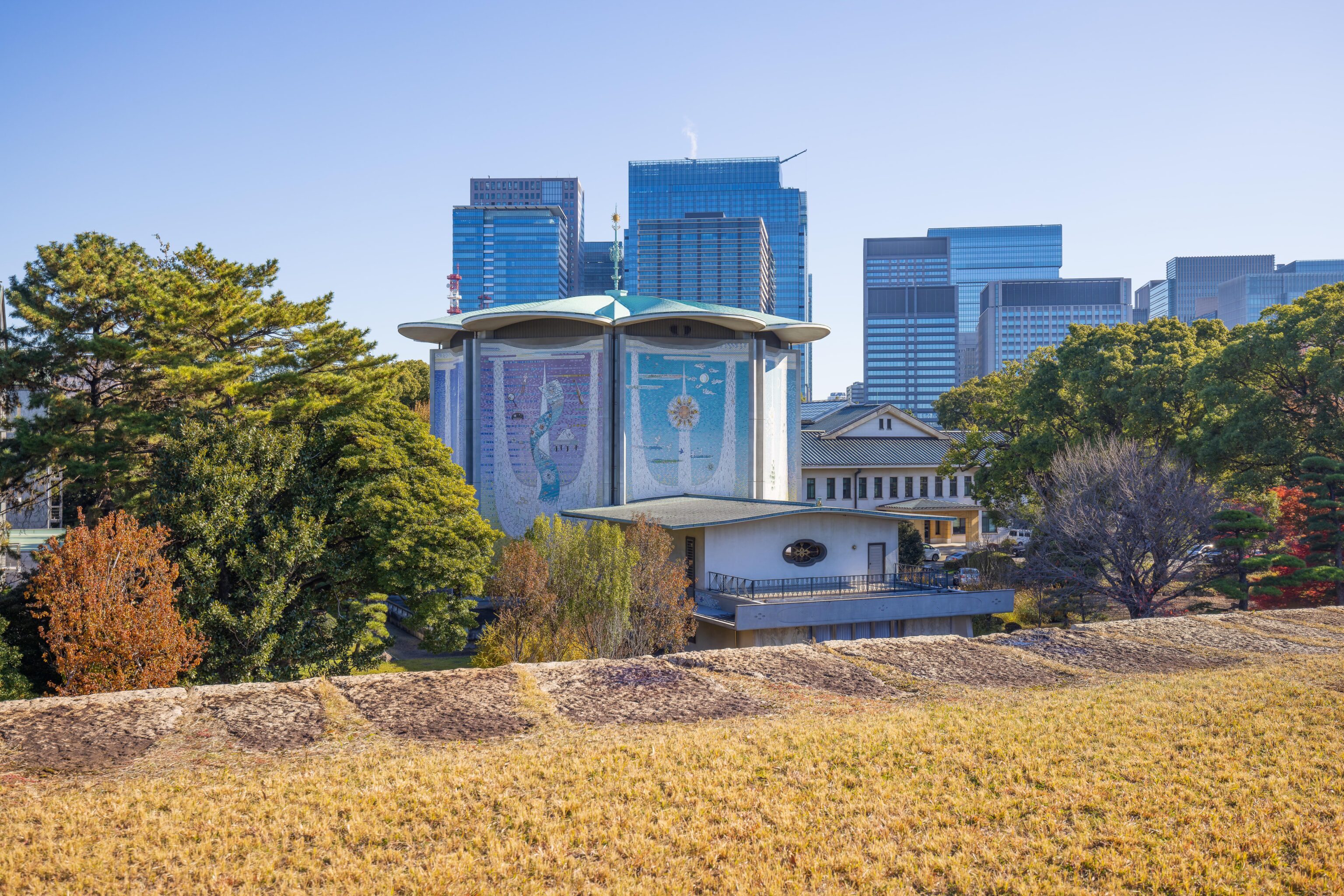
This colorful building doesn’t really fit in. It is the Tokagakudo, a concert hall, constructed for Empress Kojun’s 60th birthday1.
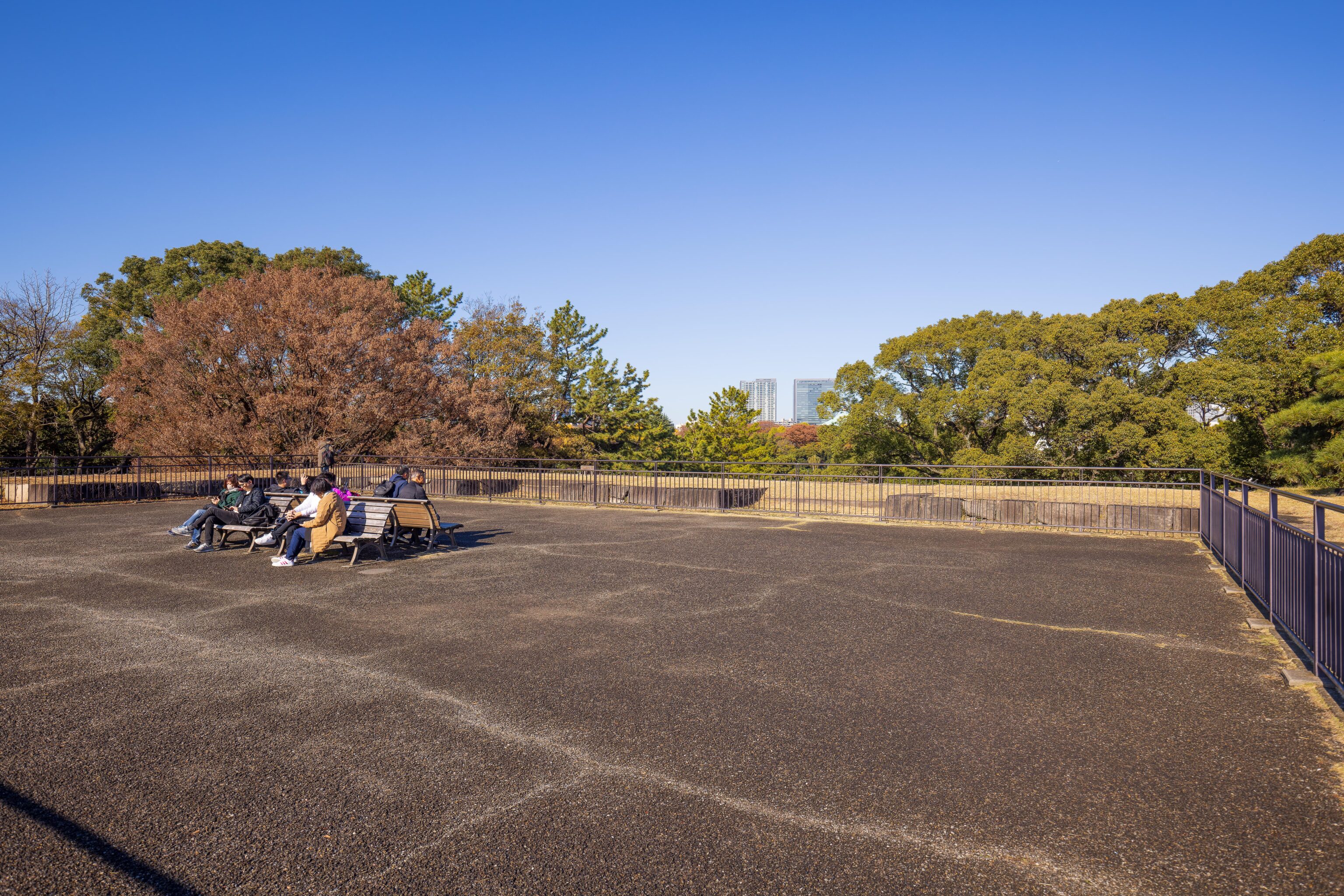
There are a few benches atop the castle keep’s foundation, but otherwise it is just a large paved open space.
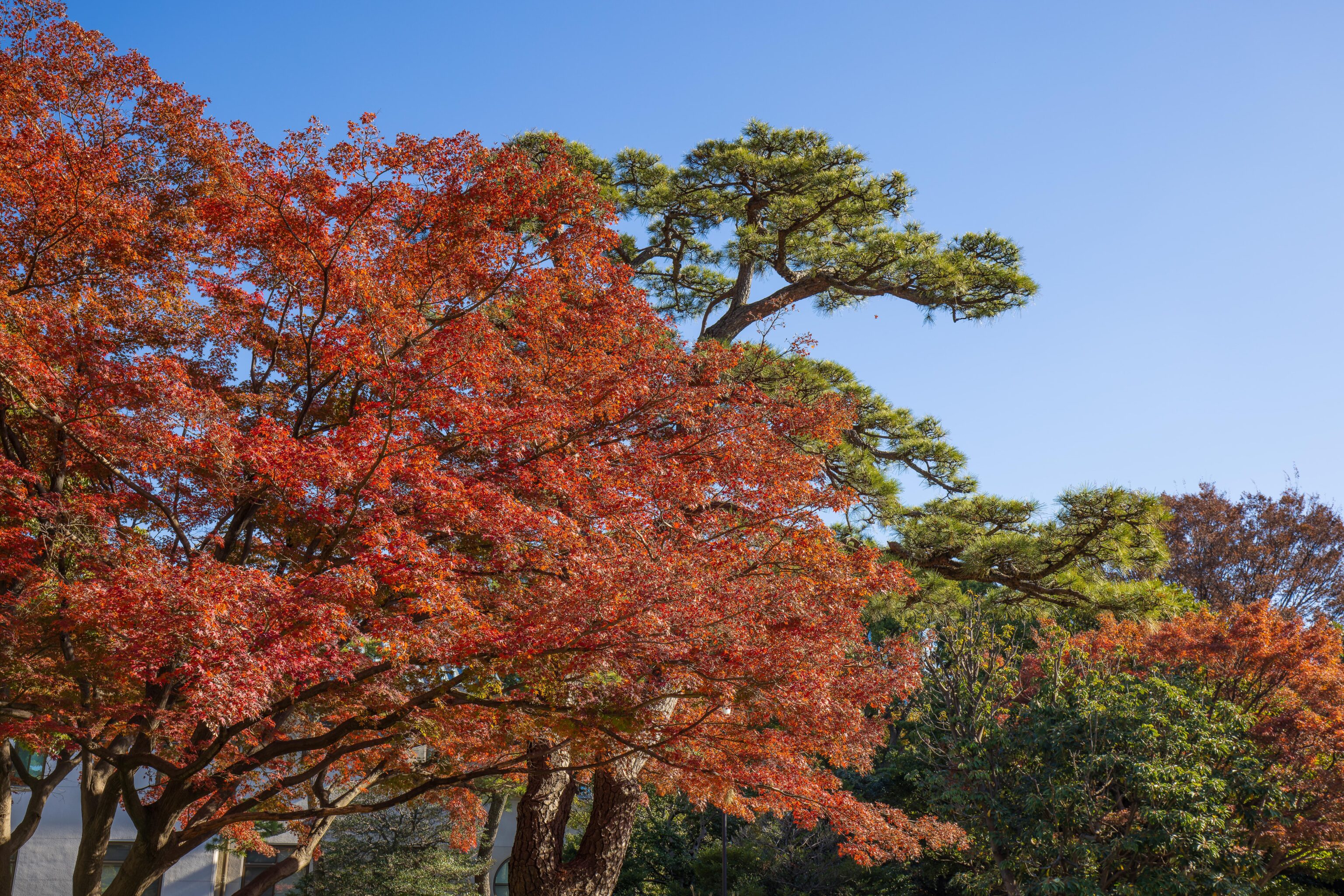
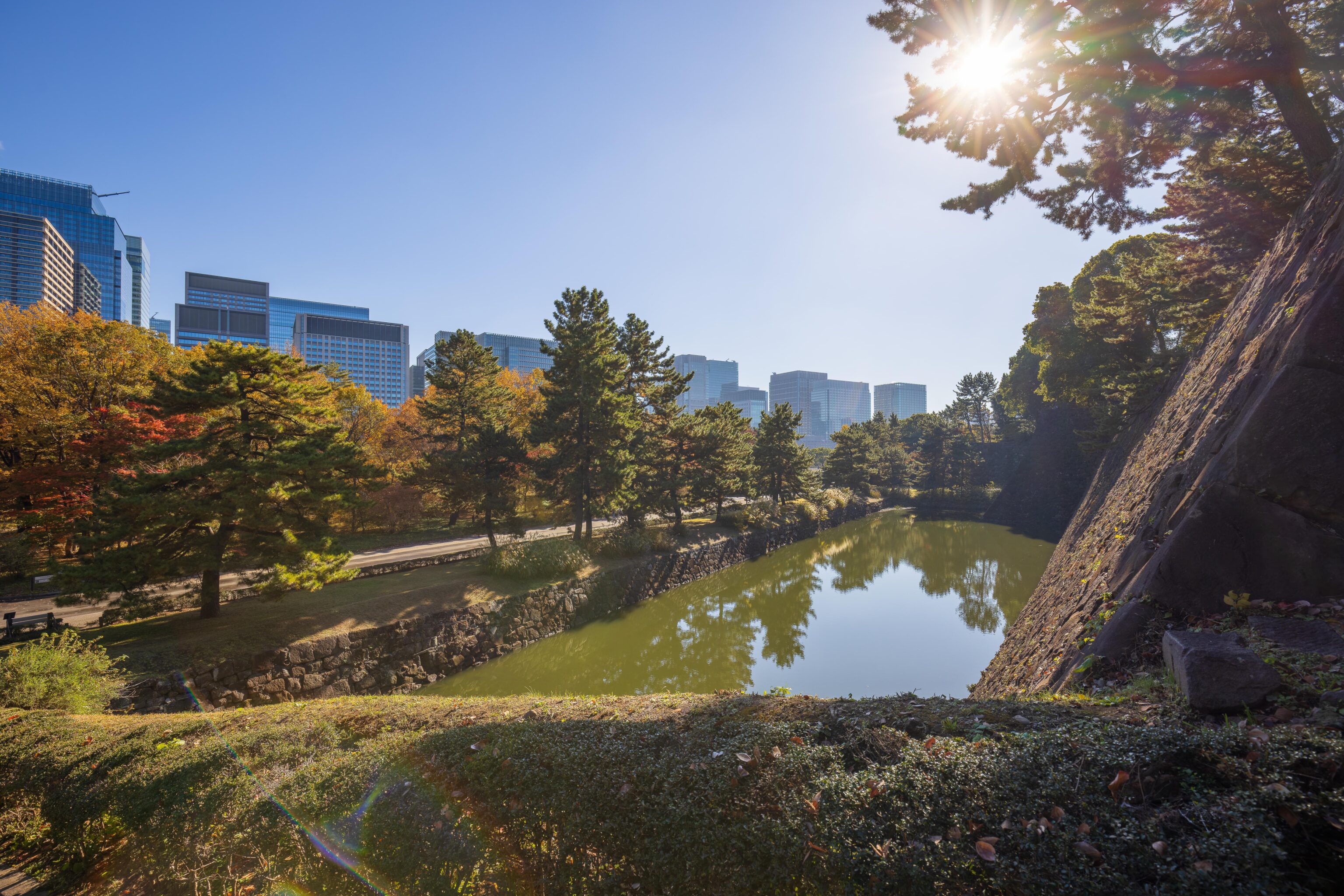
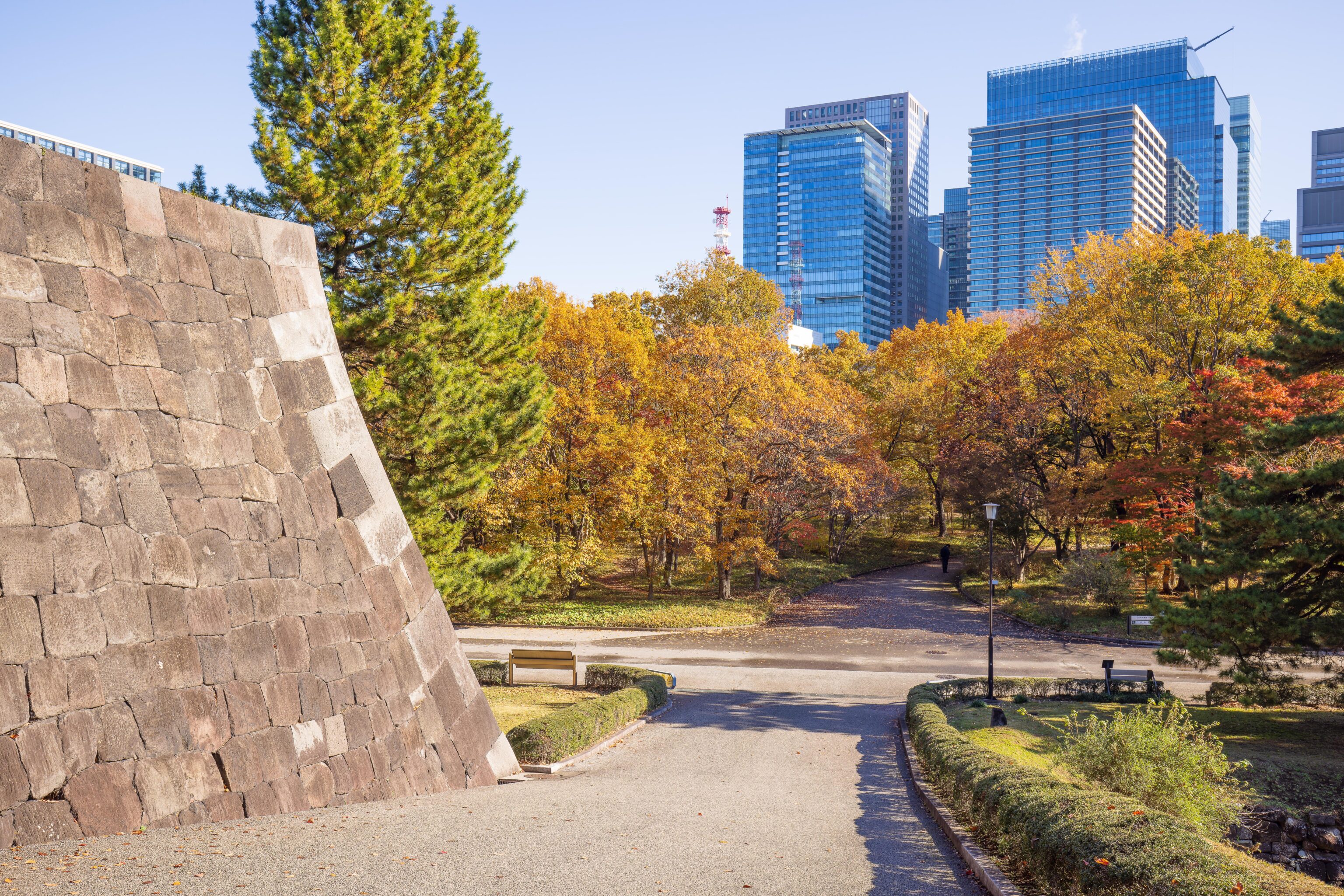
From the keep, we headed to the east, descending back down to ground level via the Shiomizaka Slope. A sign provides some information:
This slope was built to connect the ninomaru second and honmaru main compounds of Edo Castle. It led up to the Shiomizakamon Gate. Shiomizaka means "Slope Overlooking the Sea", since when the castle was built it fronted onto the sea. Now, the area from the front of the palace past Tokyo Station and out to Tokyo Bay is all reclaimed land. Beyond the area where Tokyo Station and Yurakucho Station now stand was a low peninsula called Mae-Jima.
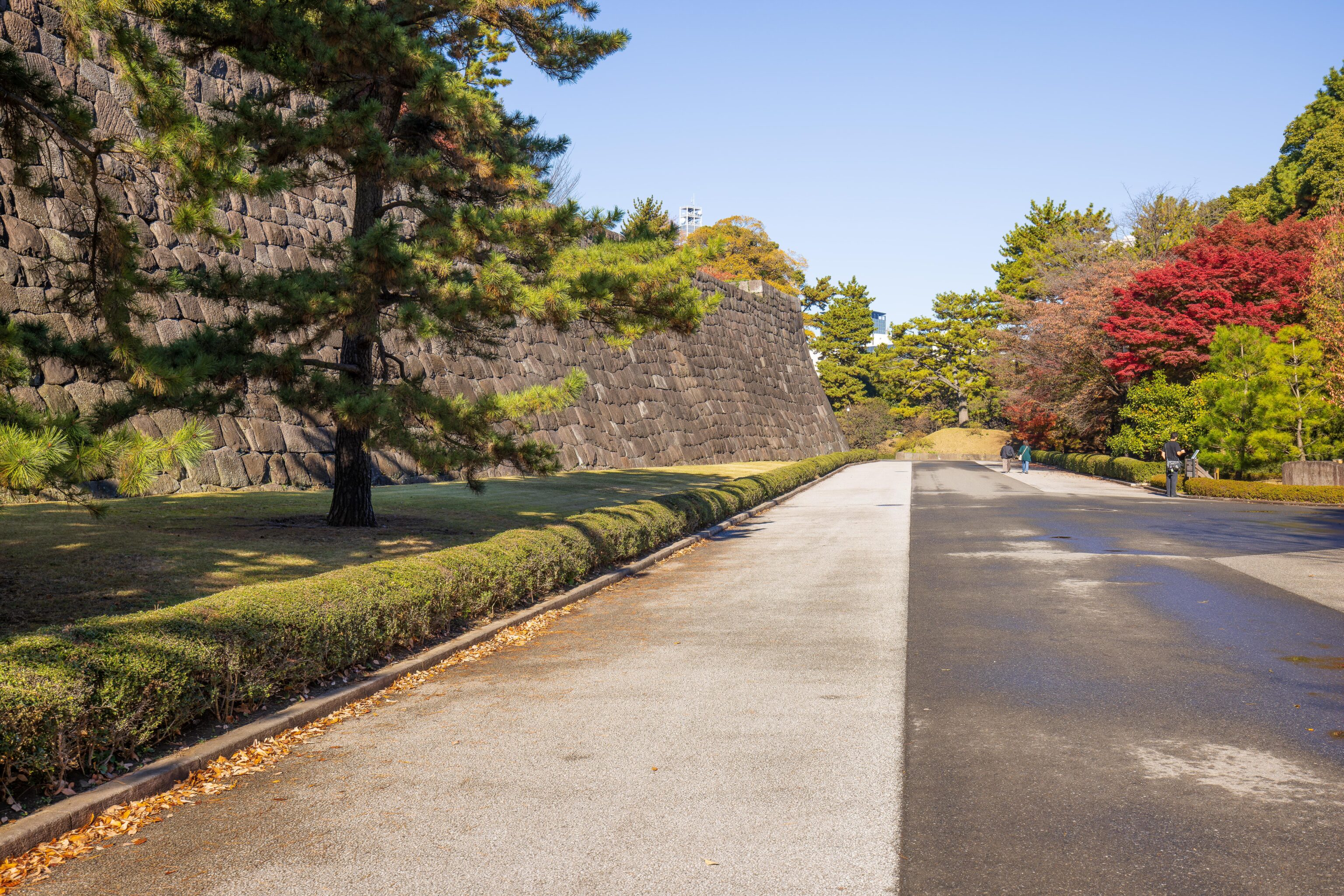
The view to the north after we descended the slope. We headed to the right.
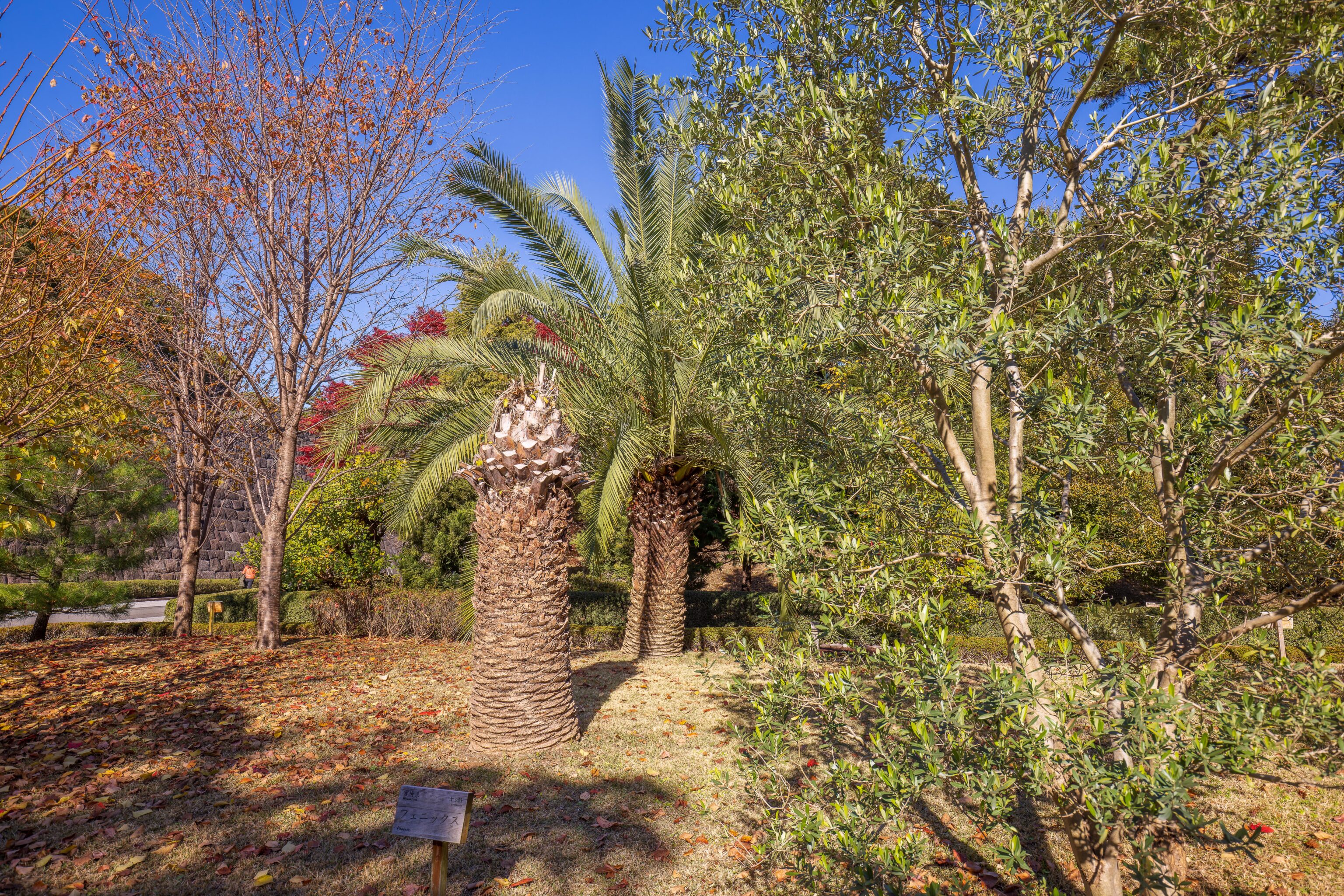
This section of the garden contains trees from Japan’s various prefectures. These palm trees are from the Miyazaki Prefecture. More specifically, they seem to be date palms.
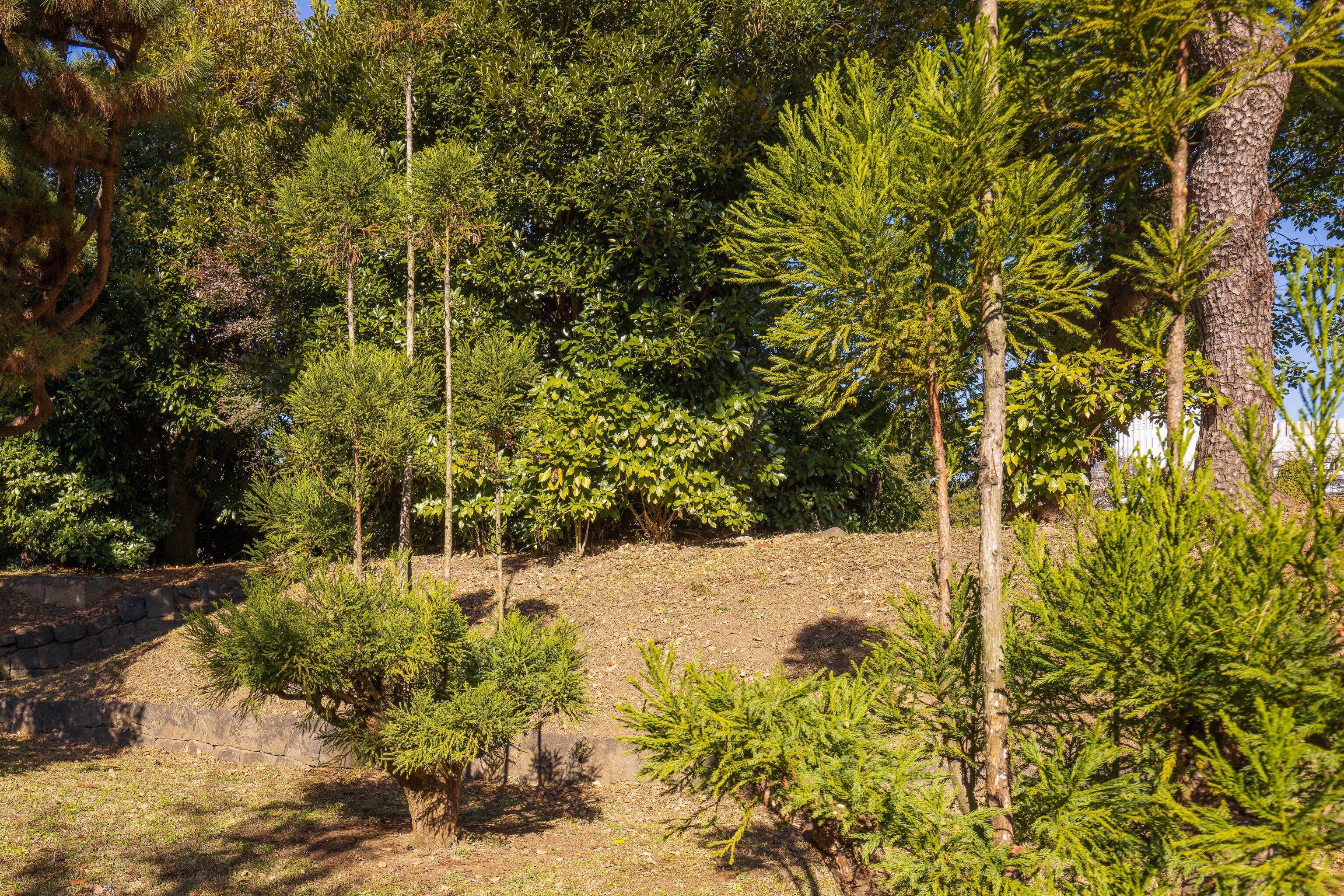
These tall trees with narrow trunks are native to Kyoto Prefecture, where we just spent 10 nights. This speices, Cryptomeria Japonica, is called Sugi in Japan and is also referred to as Japanese Cedar and Japanese Redwood2.
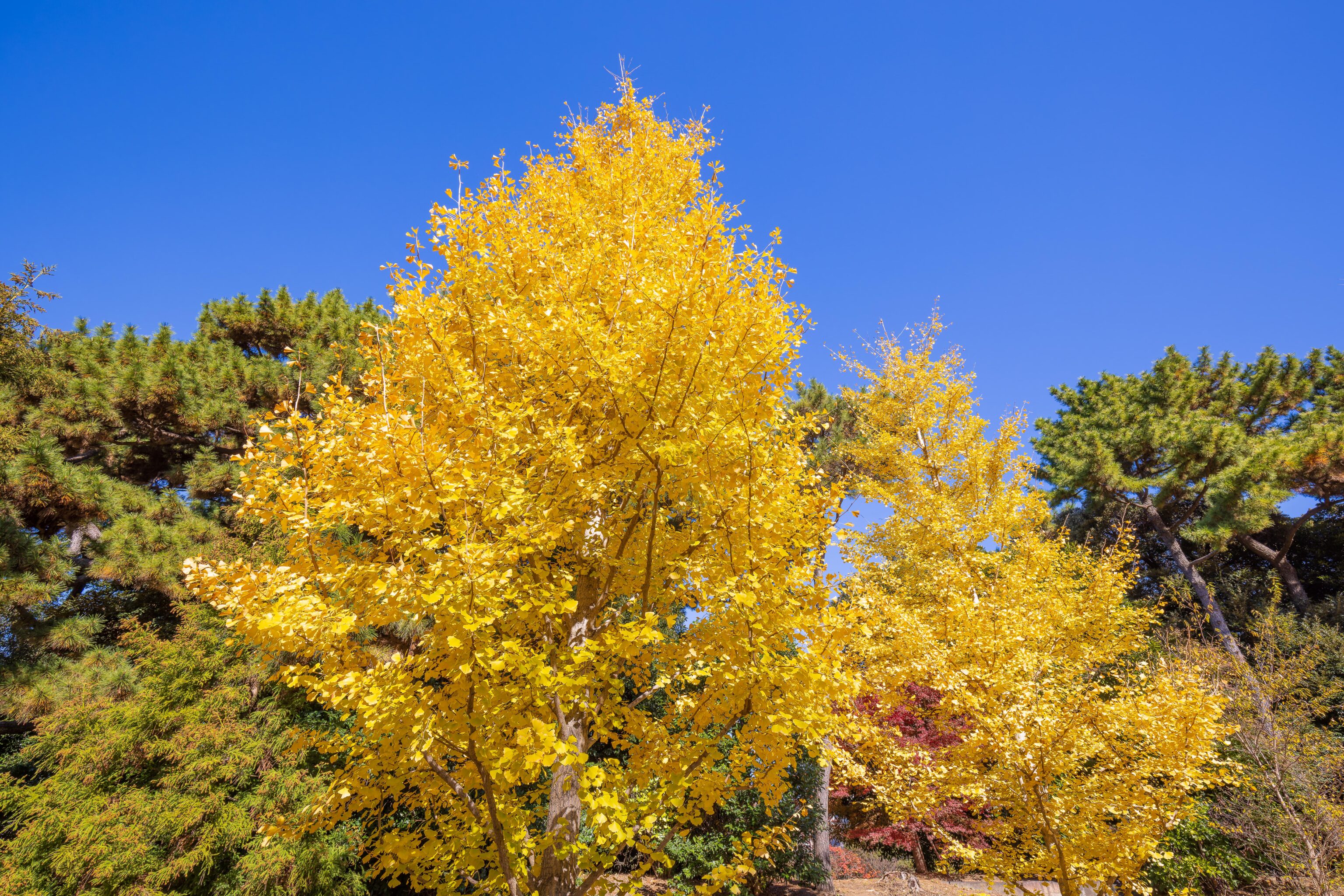
We passed by a pair of yellow ginkgo trees.
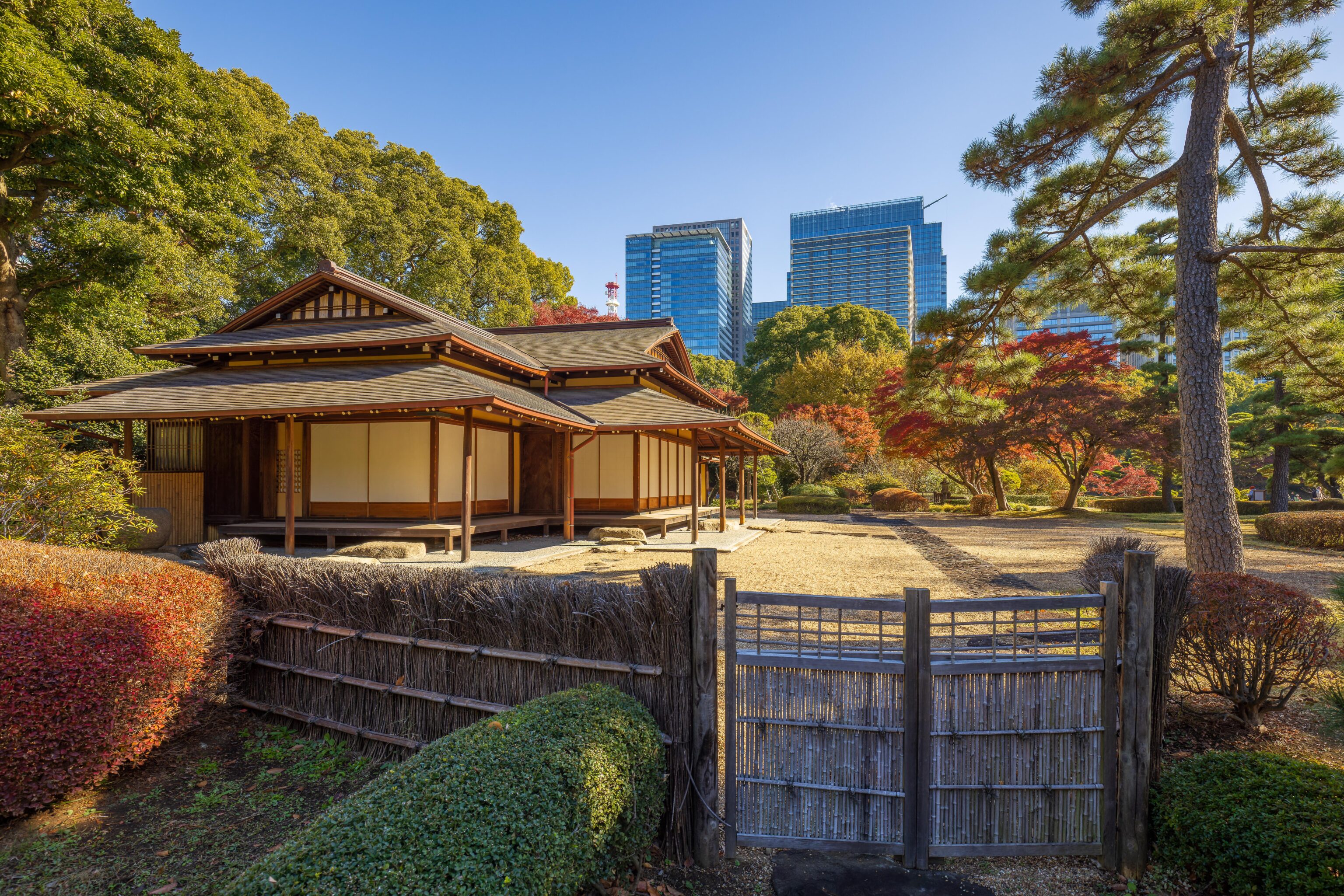
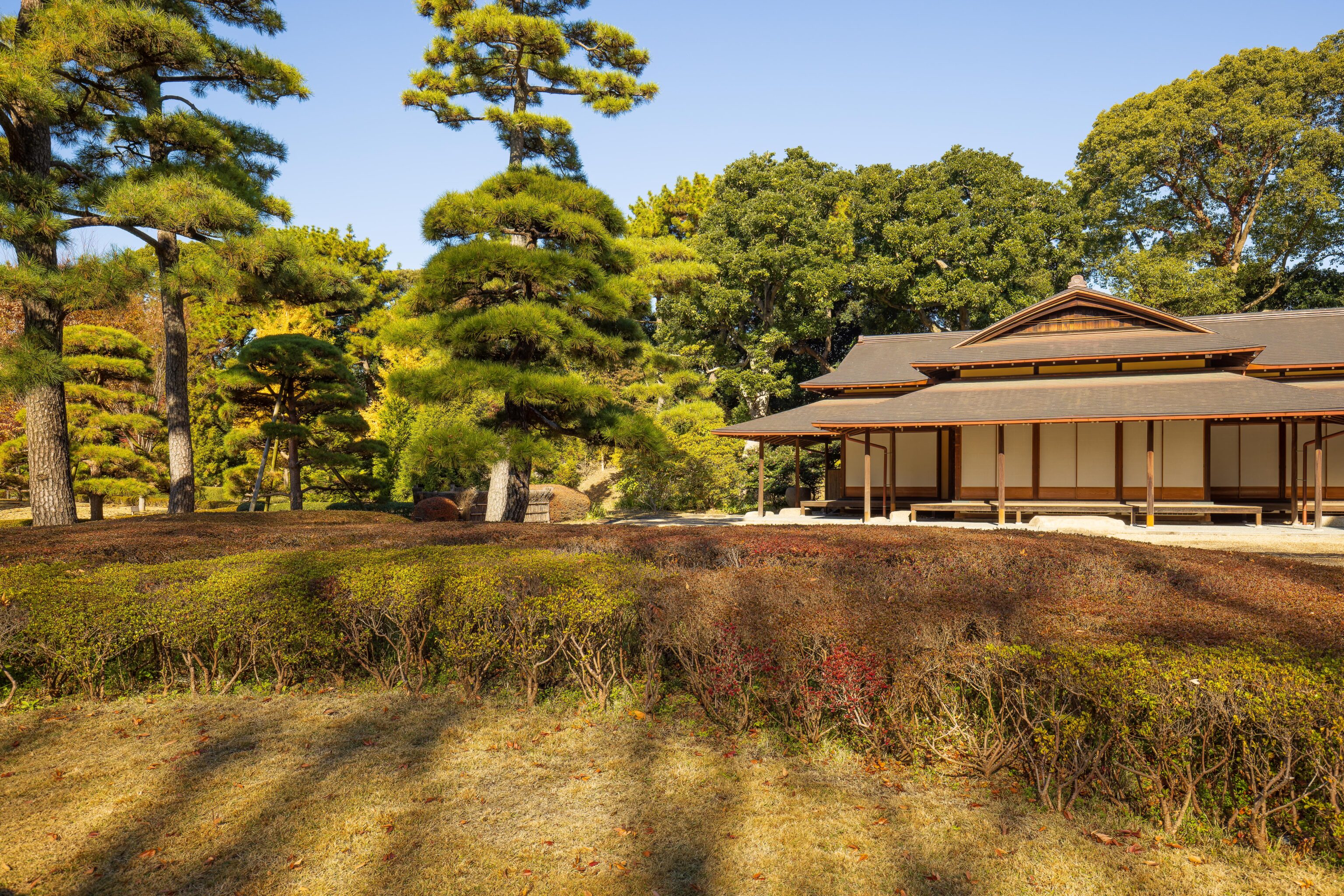
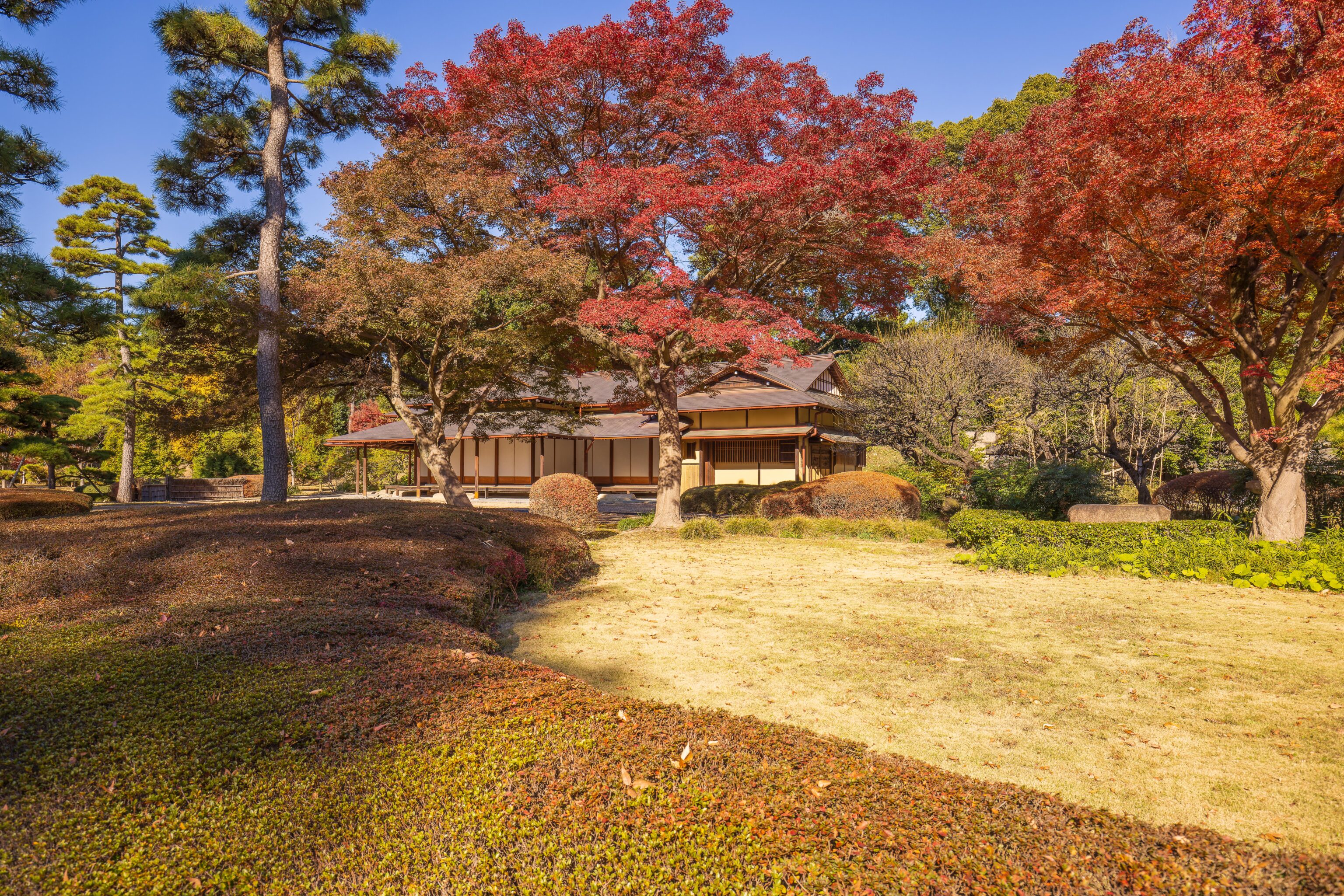
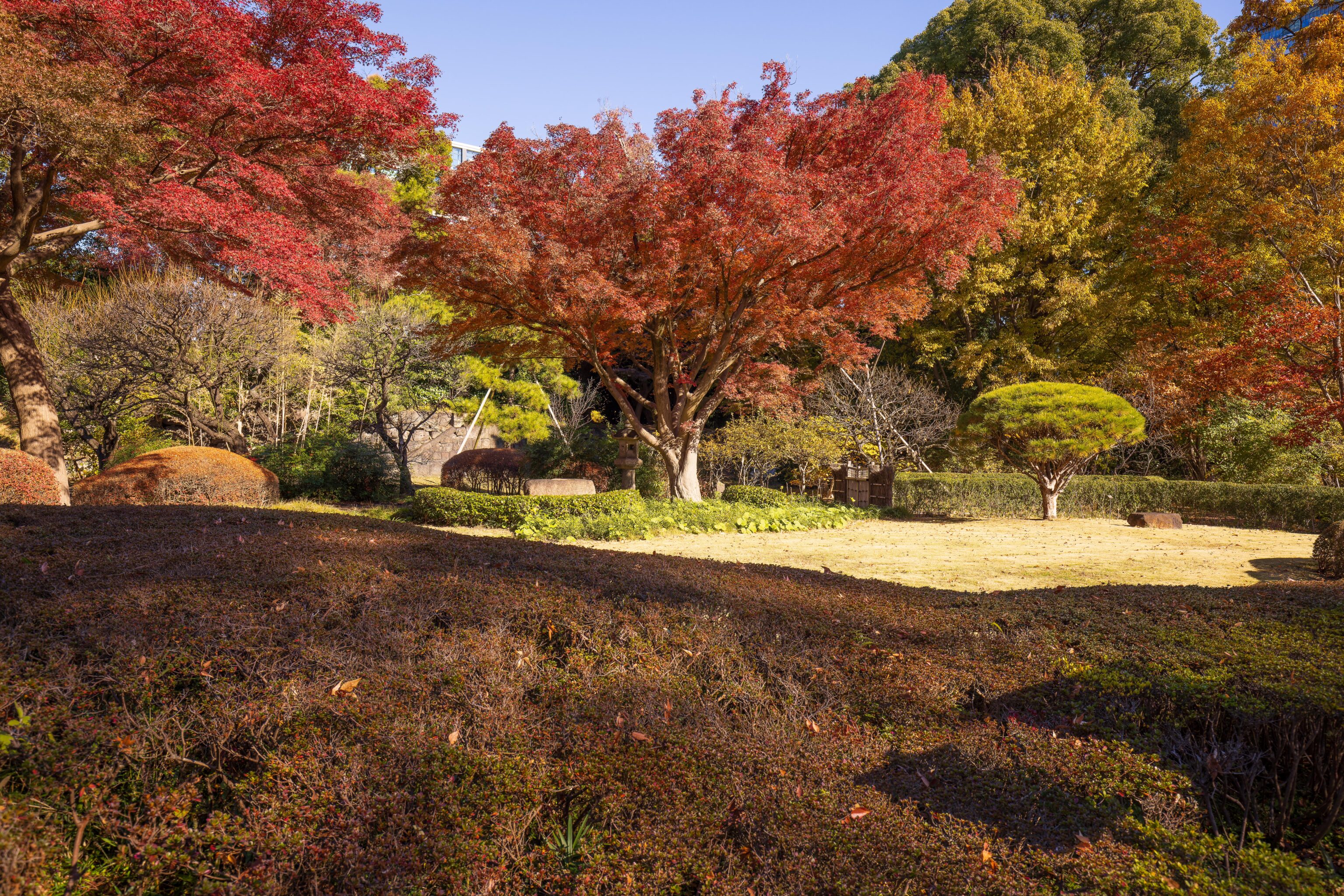
Just beyond, we reached an inaccessible building, the Suwa no Chaya Teahouse. A sign provides some history:
This teahouse was built by order of Emperor Meiji (1852-1912) in 1912, in the Fukiage Gardens in the western part of the Imperial Palace grounds. The teahouse was moved here to the Ninomaru Garden in 1968 to add a note of elegance to the East Gardens when they were opened to the public. The name Suwa Teahouse refers to the Shinto deity Suwa, to whom there was a small shrine near the teahouse's original location.
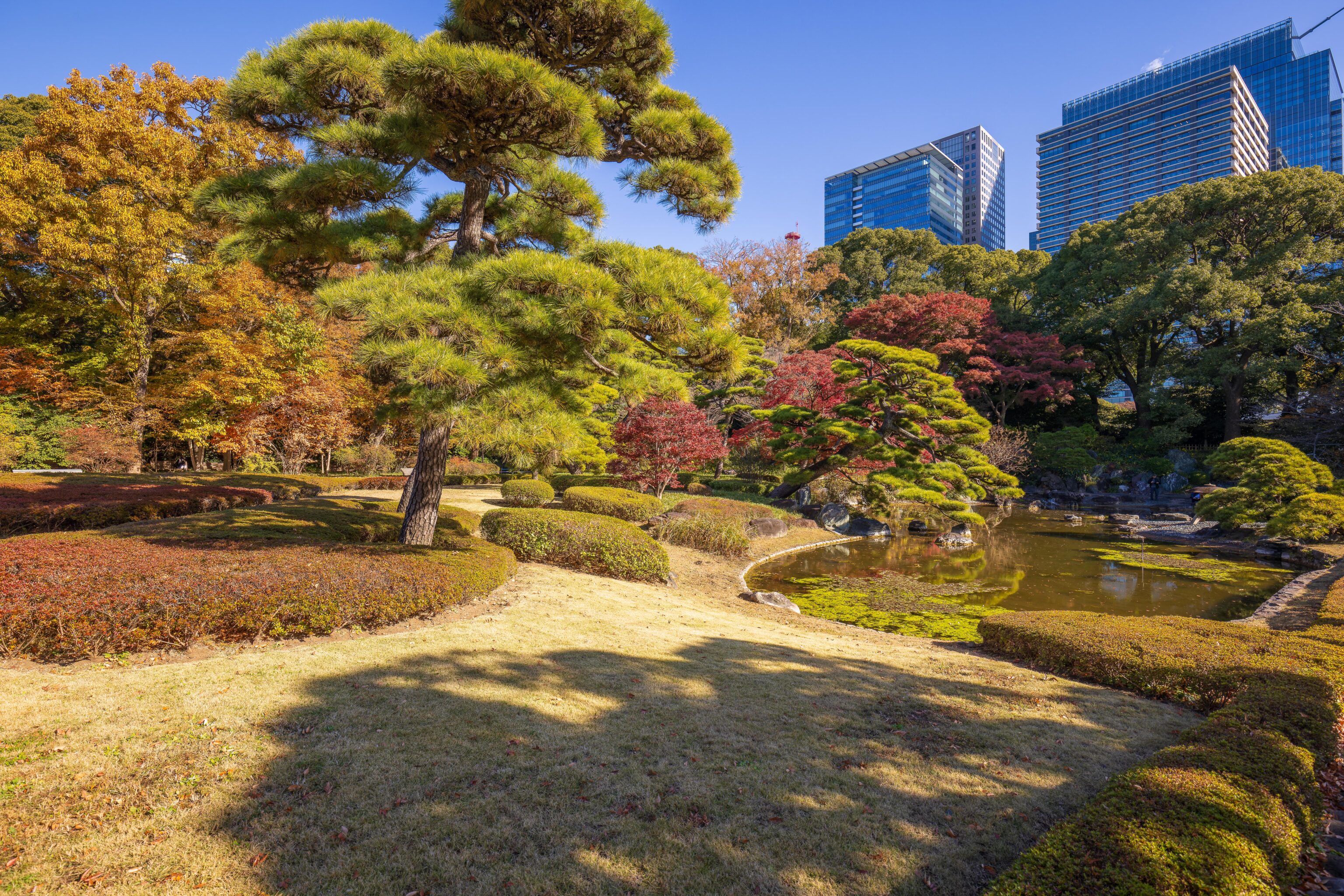
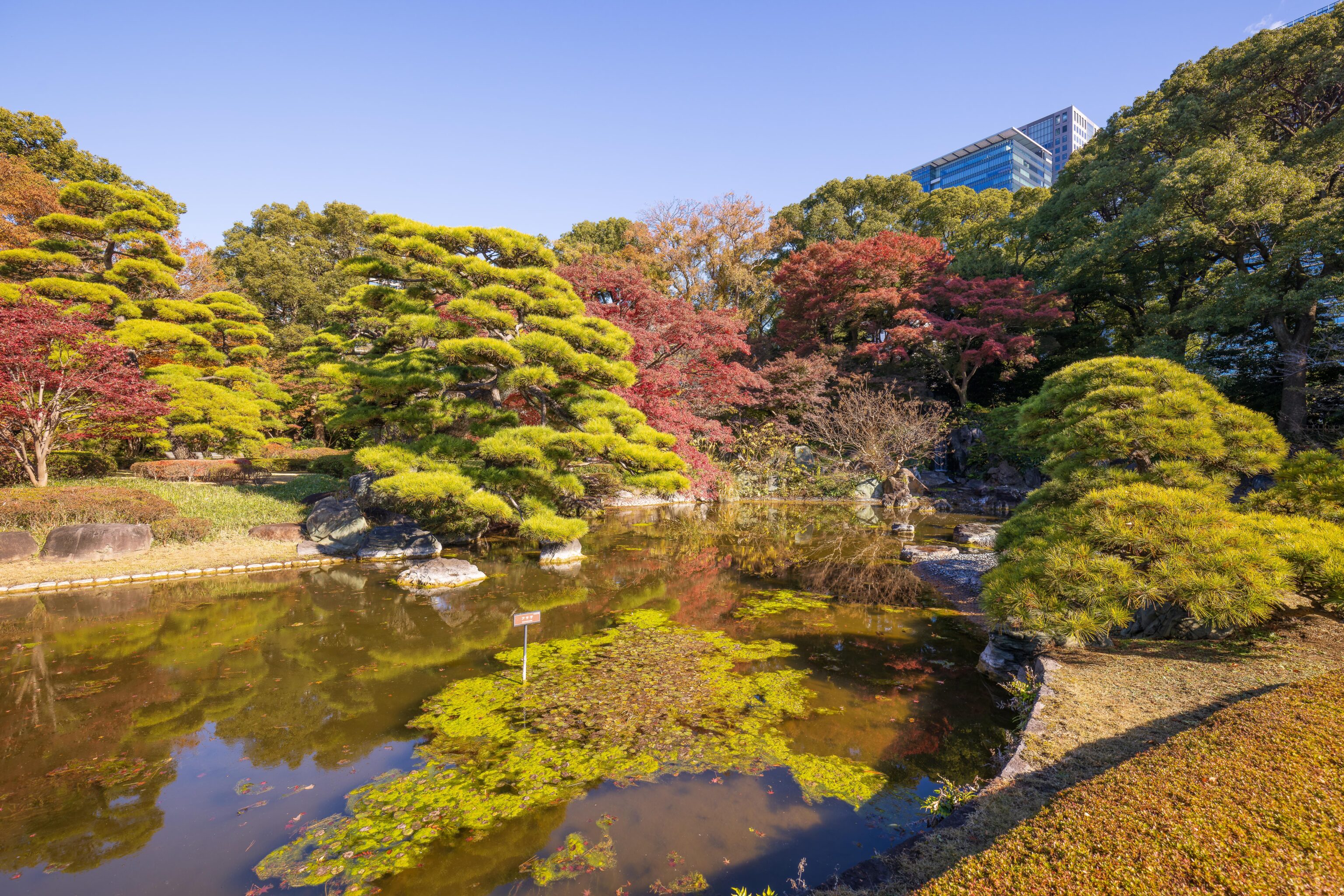
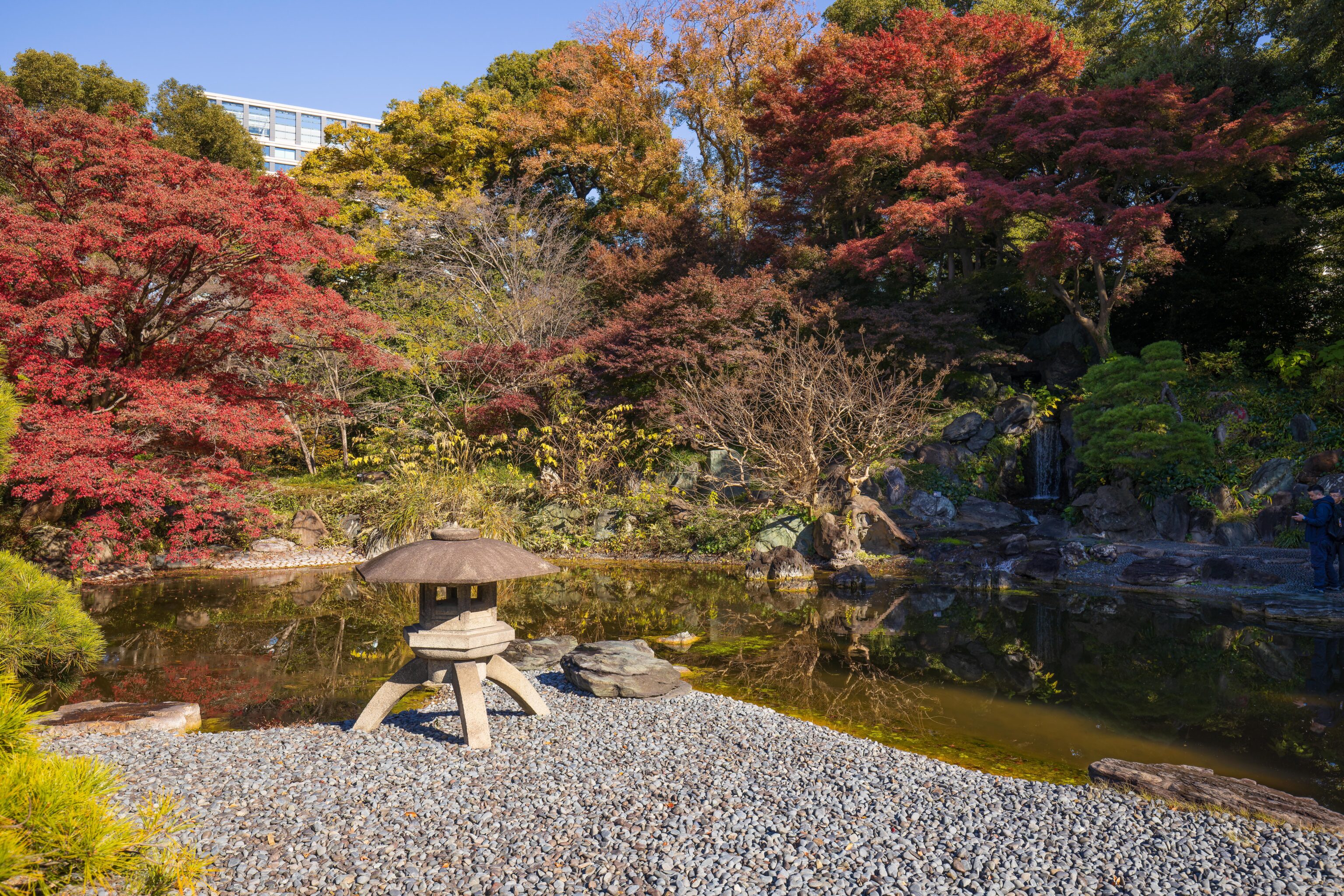
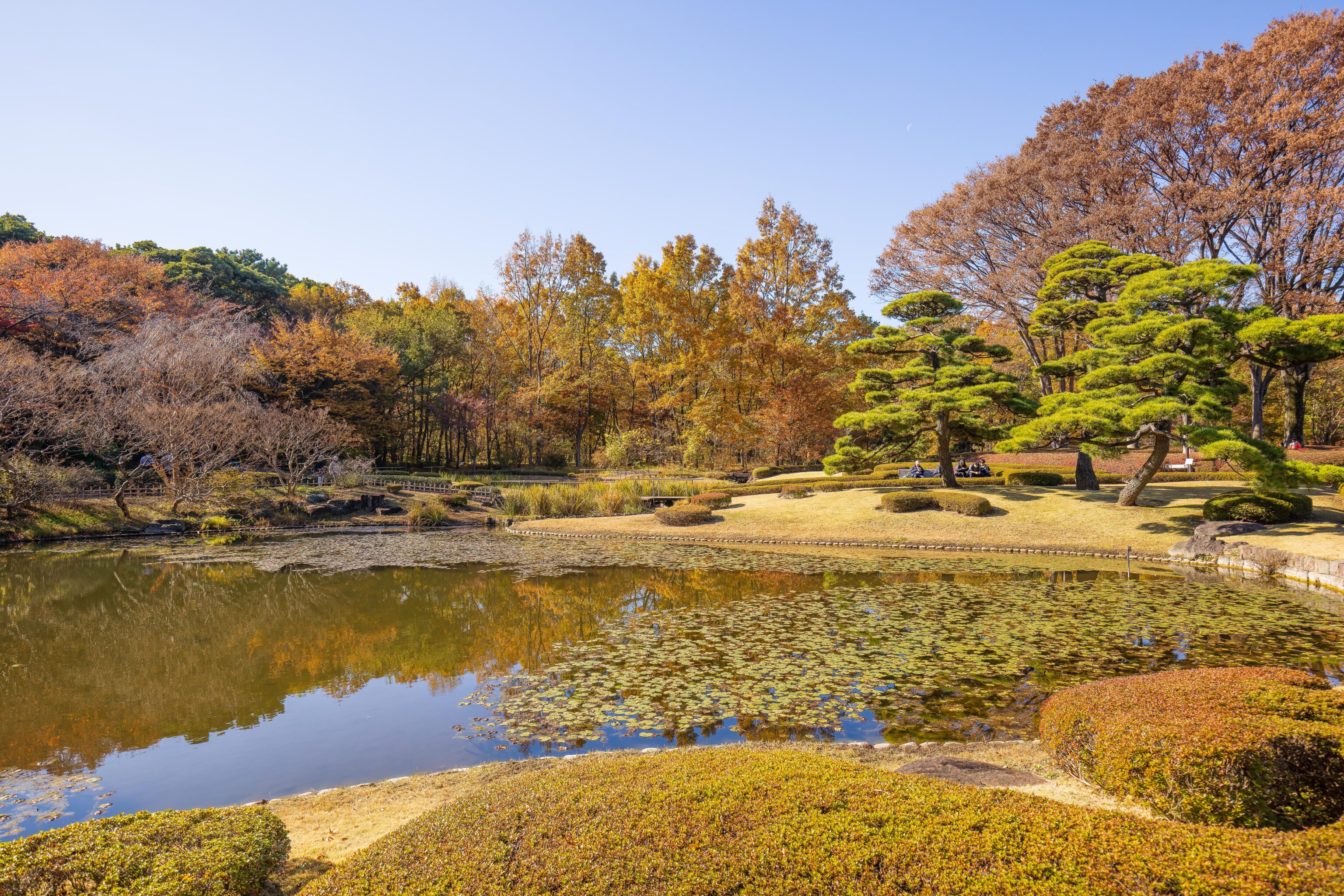
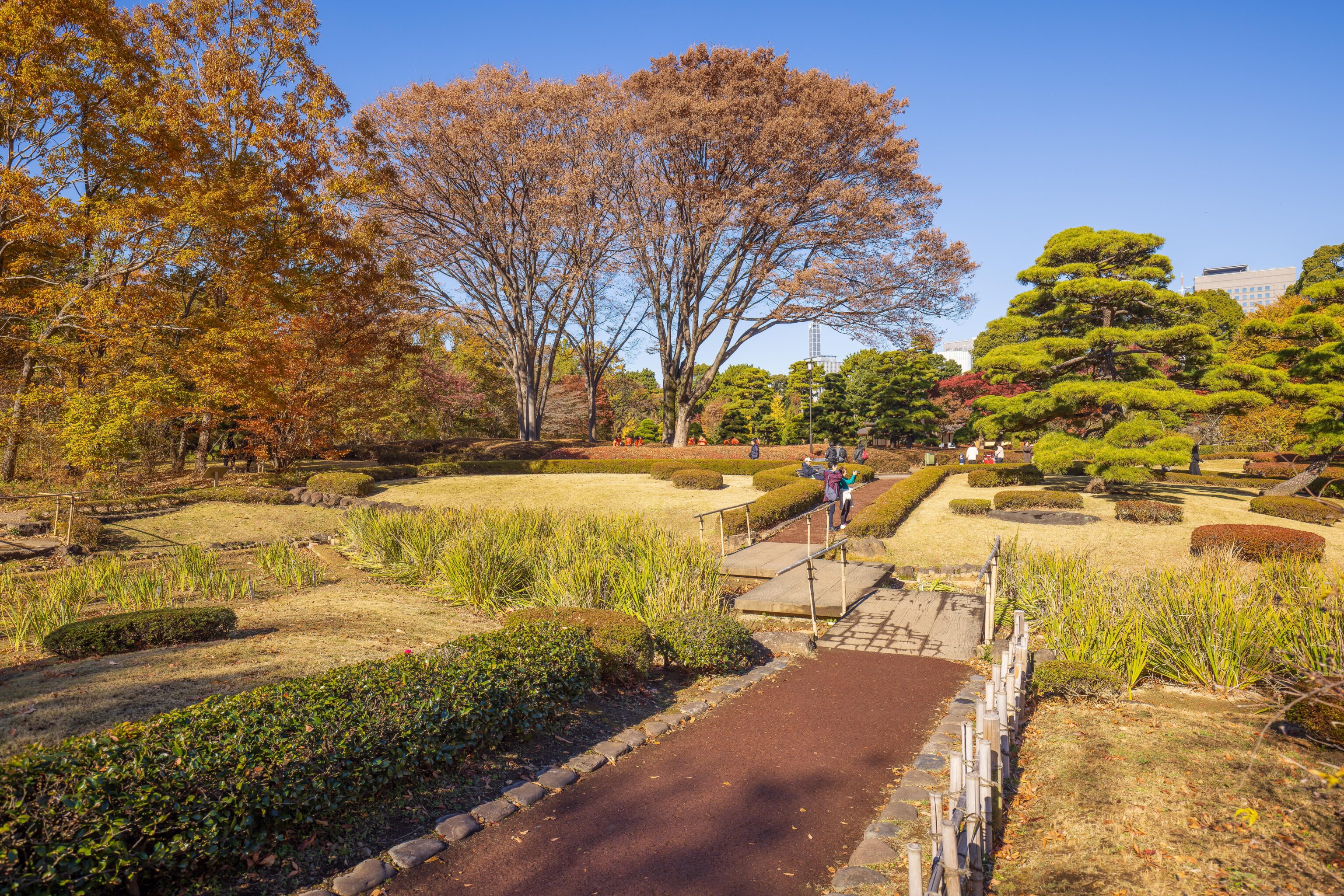
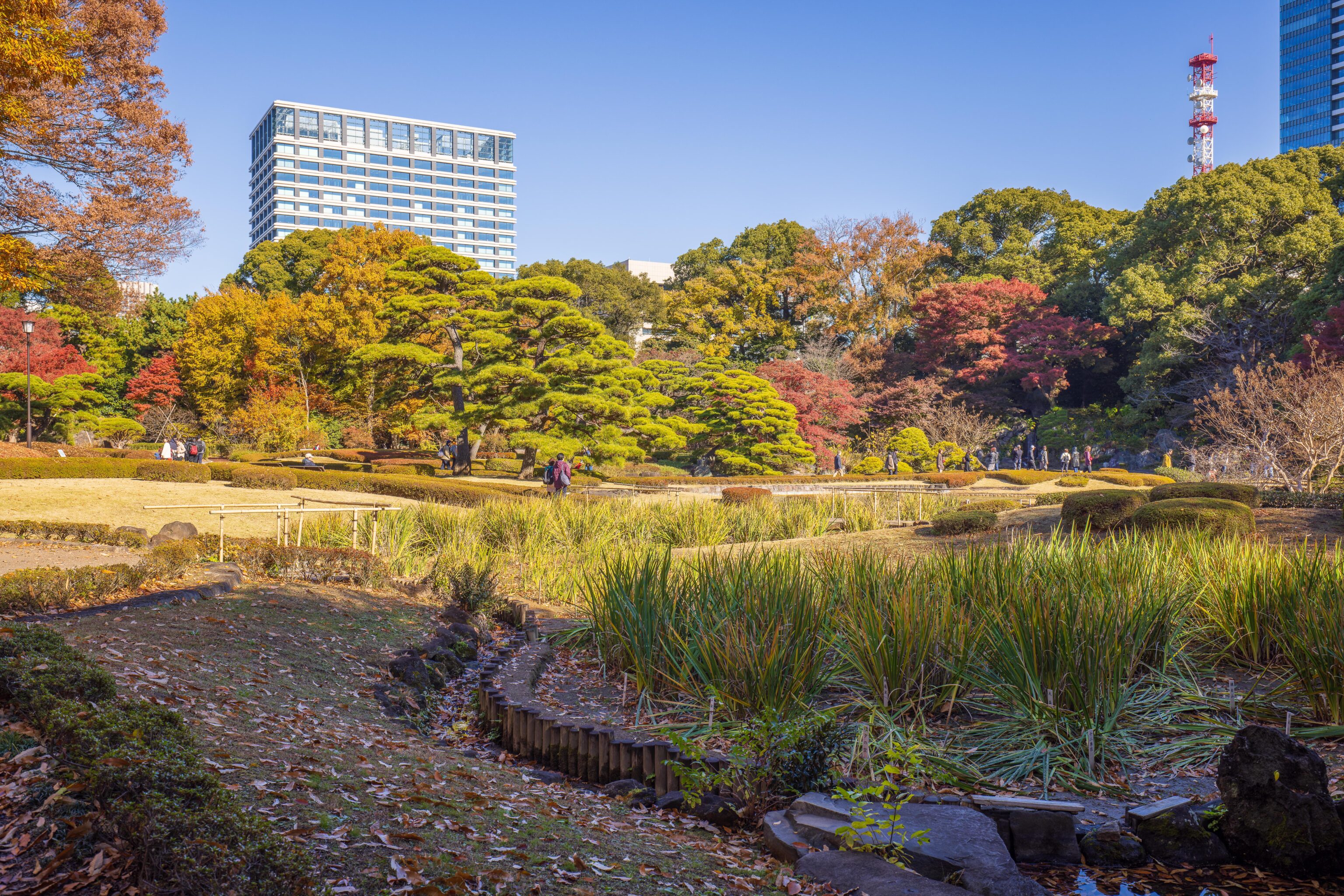
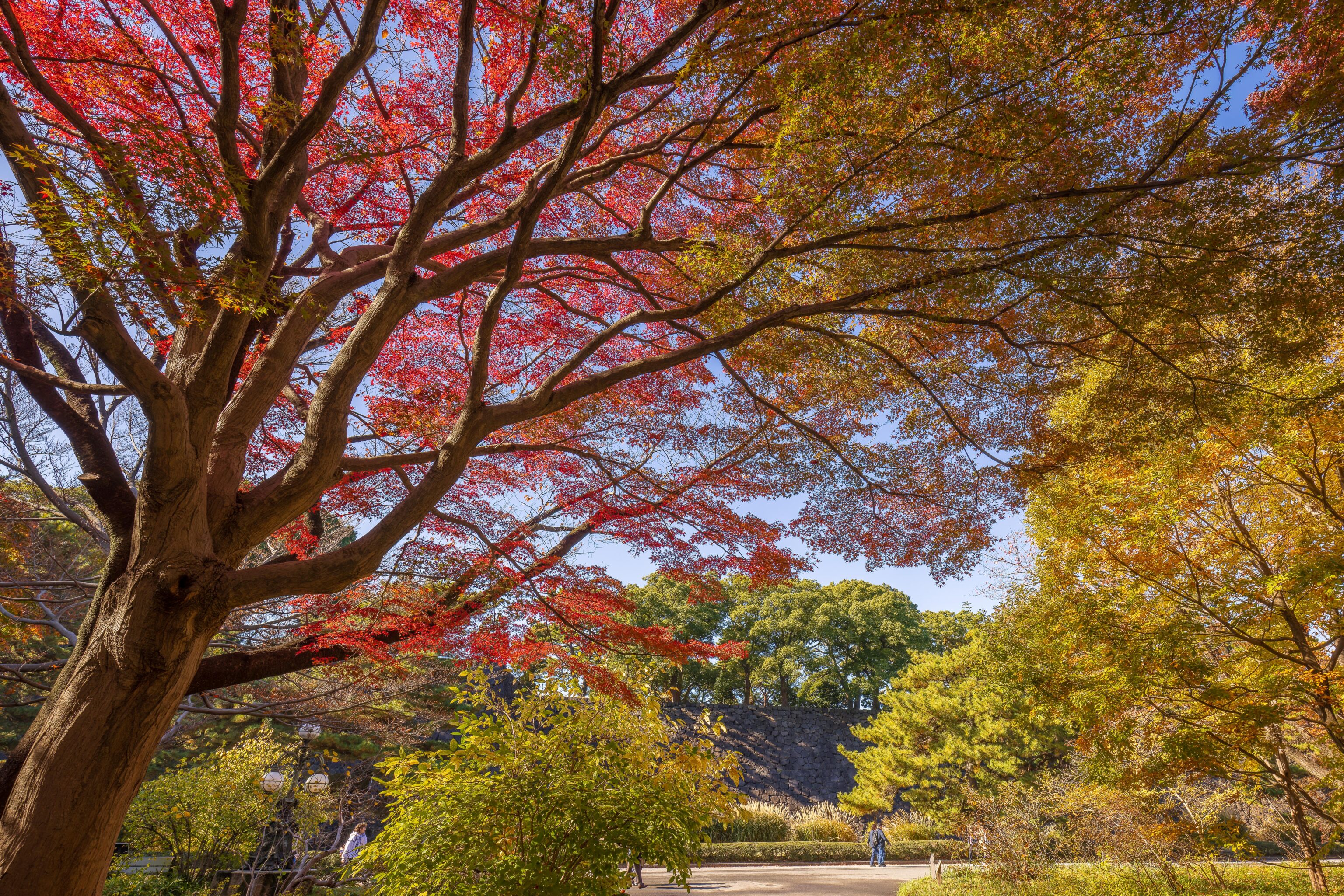
Just beyond the teahouse, we walked through the Ninomaru Garden. We walked through this area quickly as it was nearly 11am and we were pretty hungry as we only had a few onigiri to eat on the Shinkansen earlier today. We did pass by a sign that provided a tiny bit of information about this area:
The Ninomaru Garden is part of the ninomaru second compound of Edo Castle. This area was once the location of the palace for the shogun's heir. The current garden was created in 1964, modeled after a garden from the mid-eighteenth century. It is a chisen kaiyu garden, a stroll garden centered around a pond.
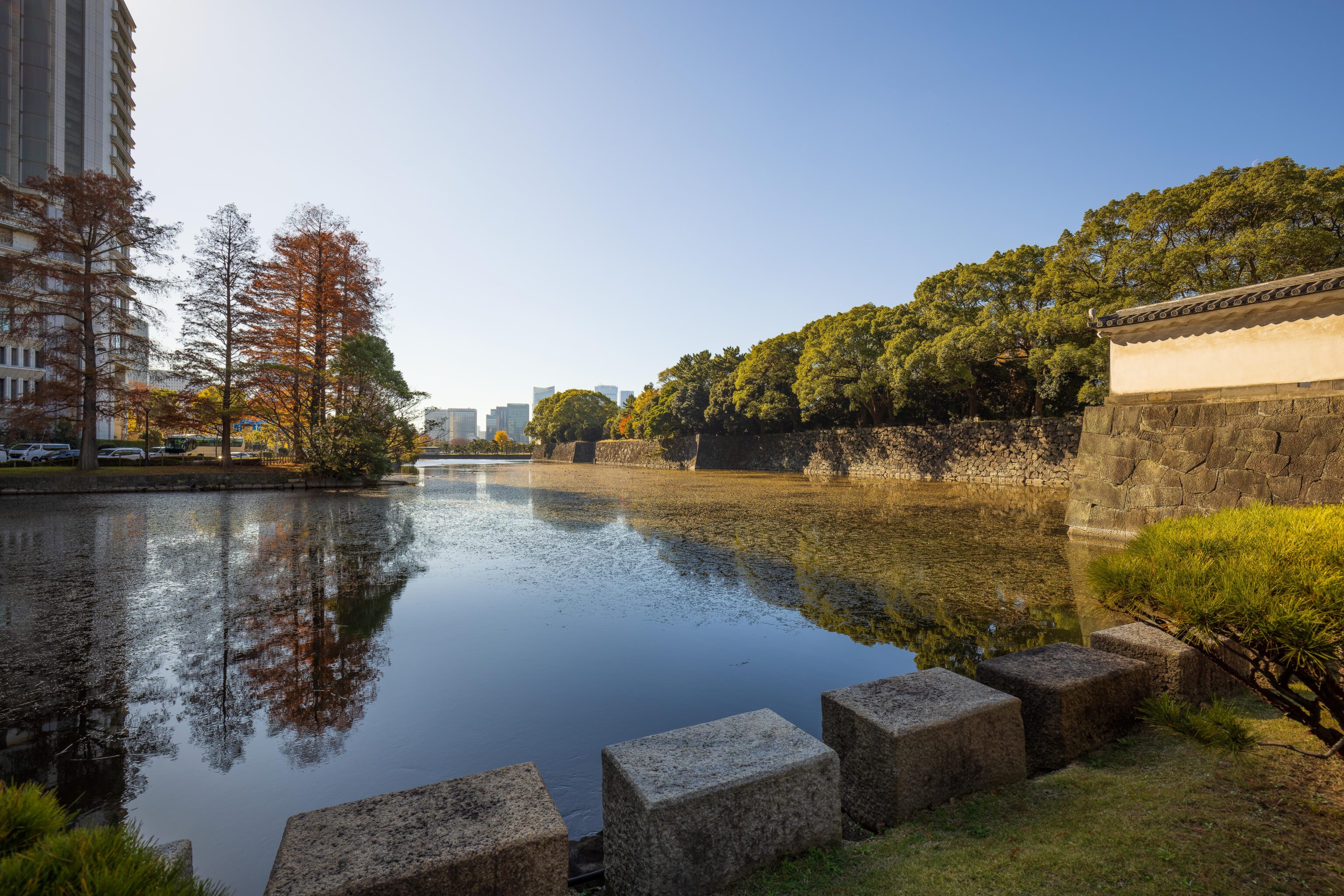
We exited the East Gardens via the same path that we took on the way in.
Lunch
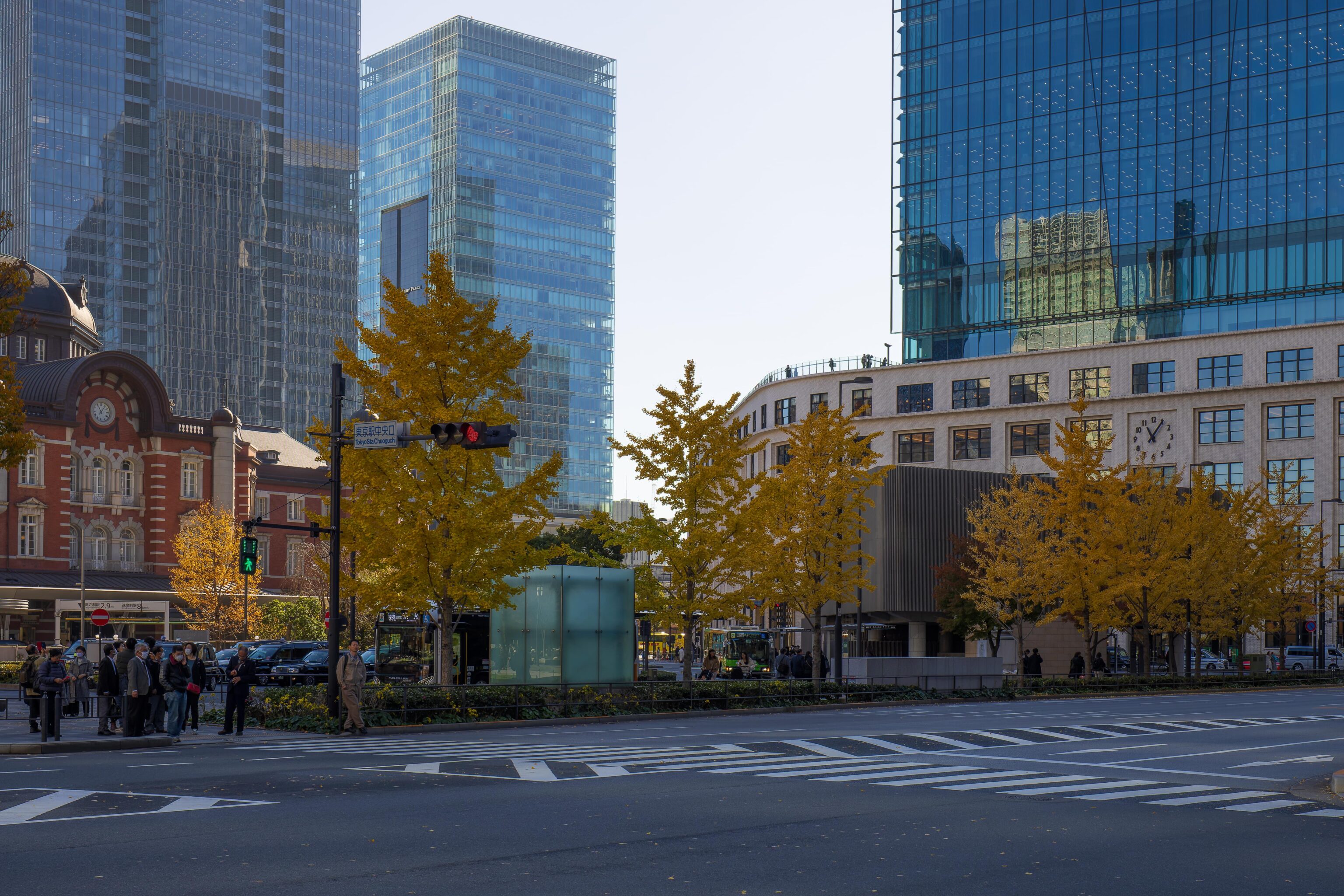
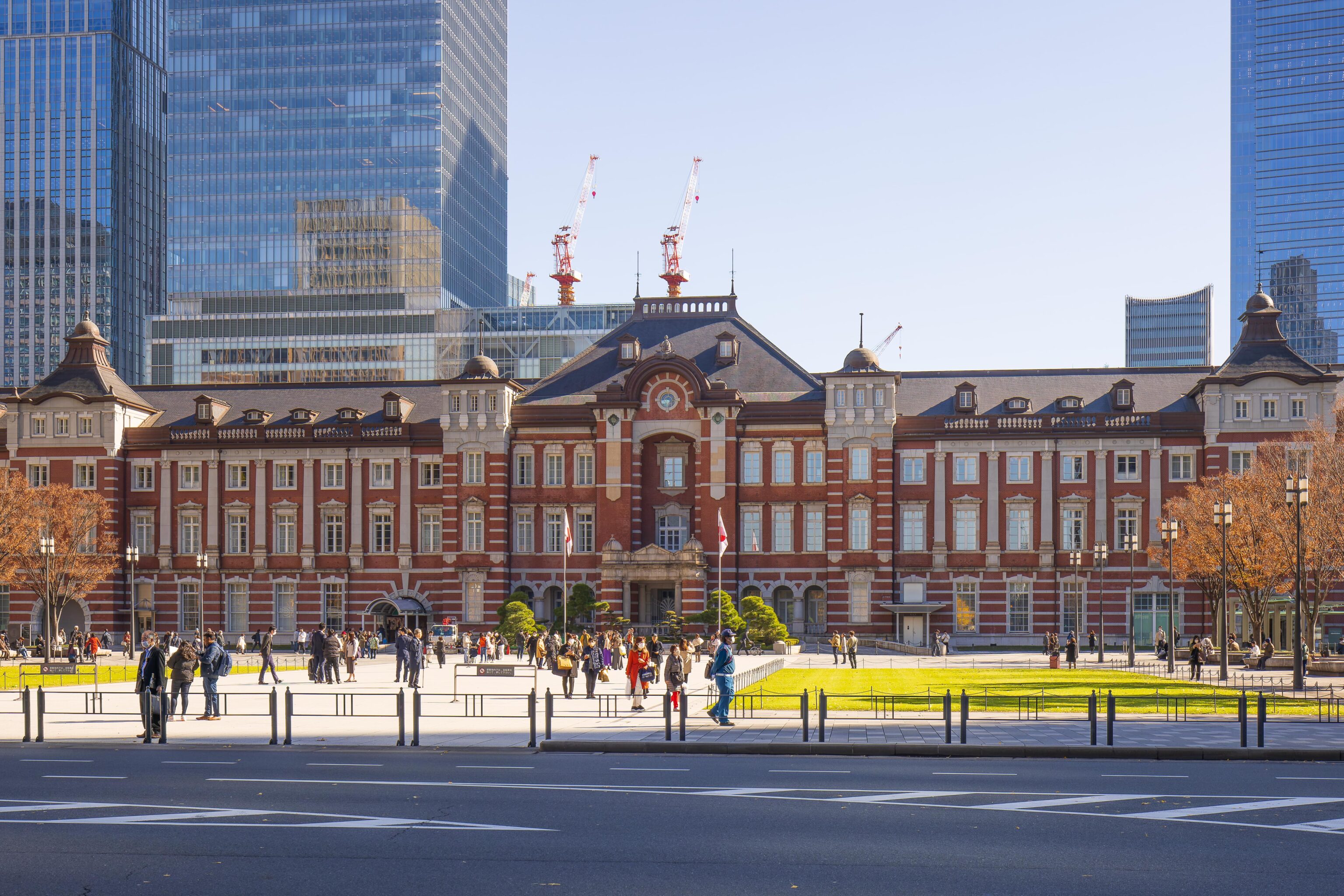
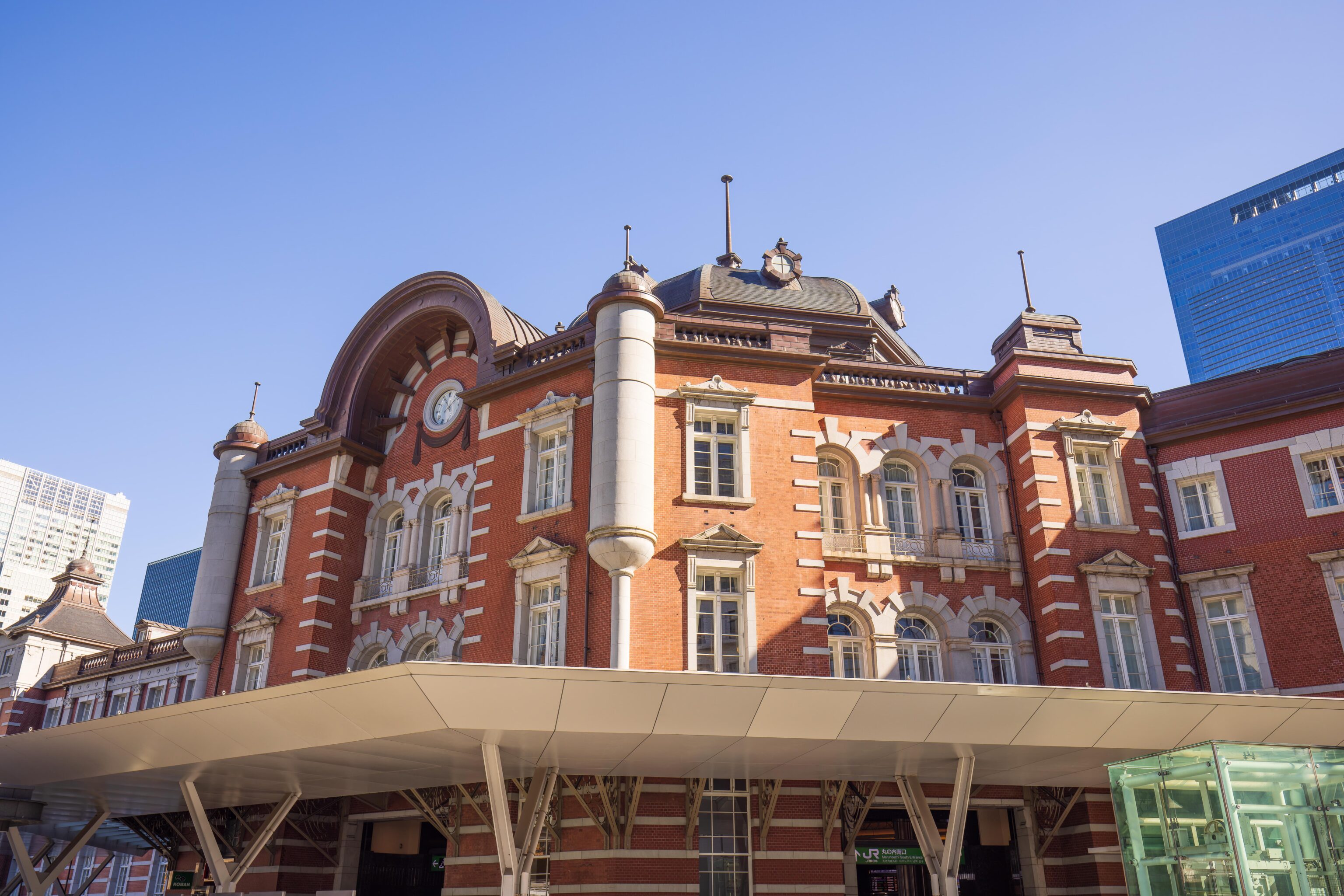
We headed back to Tokyo Station. From there, we decided to go to the nearby KITTE Marunouchi to visit Nemuro Hanamaru, a kaiten sushi restaurant that we like. We tried to eat at this location on our first evening in Tokyo on this trip but we had arrived too late to secure a spot in the queue. Unfortunately, there was already a huge mass of people waiting out front. Given our limited time, we decided to eat somewhere else. We ended up going into the basement level of the building to see what food options were available down there.
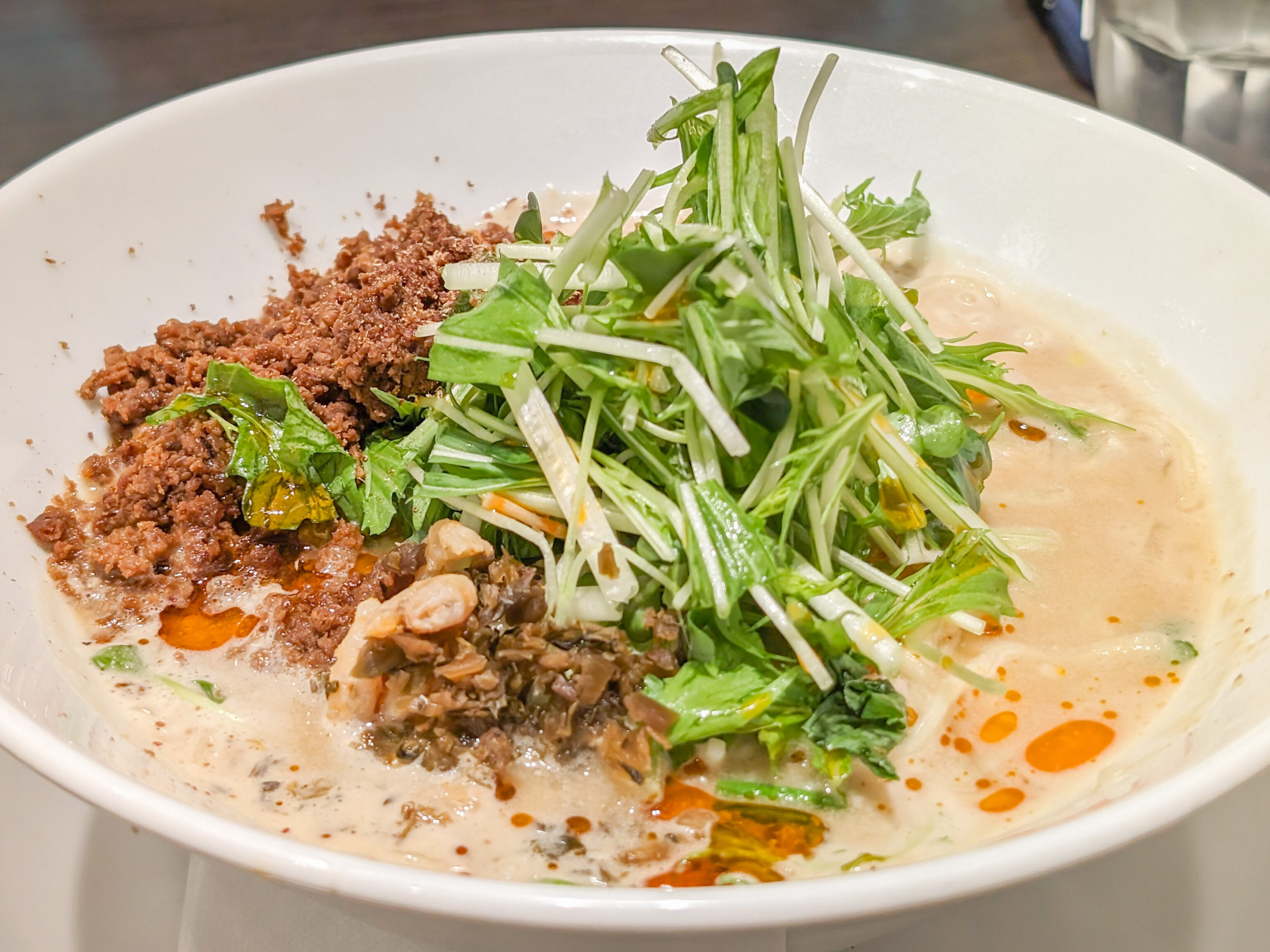
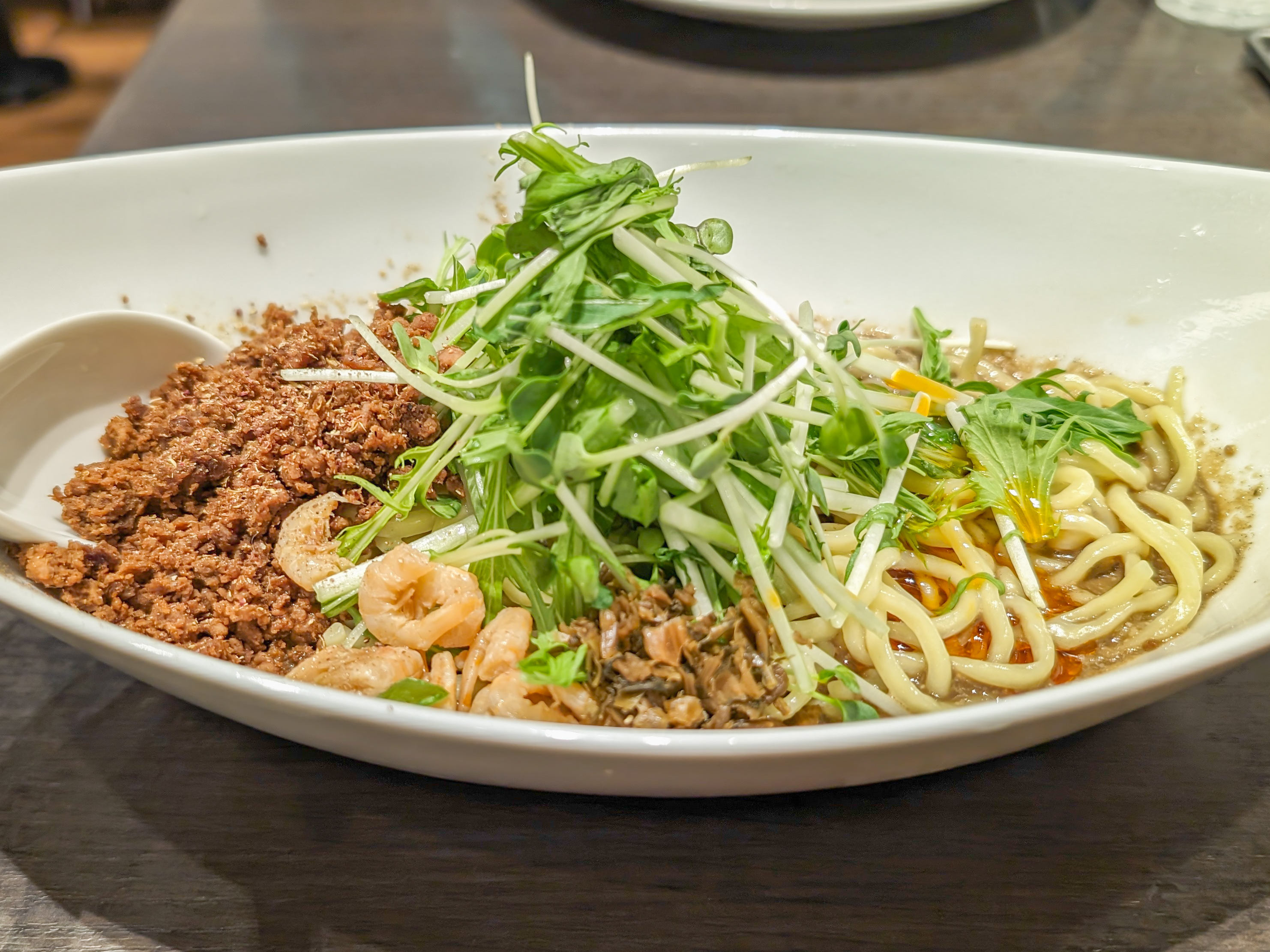
We ended up going to 四川坦々麺 阿吽, a dan dan noodles restaurant, so basically Japanese Chinese. We got one with broth and one dry. Both were good but dry was better!
Haneda Airport
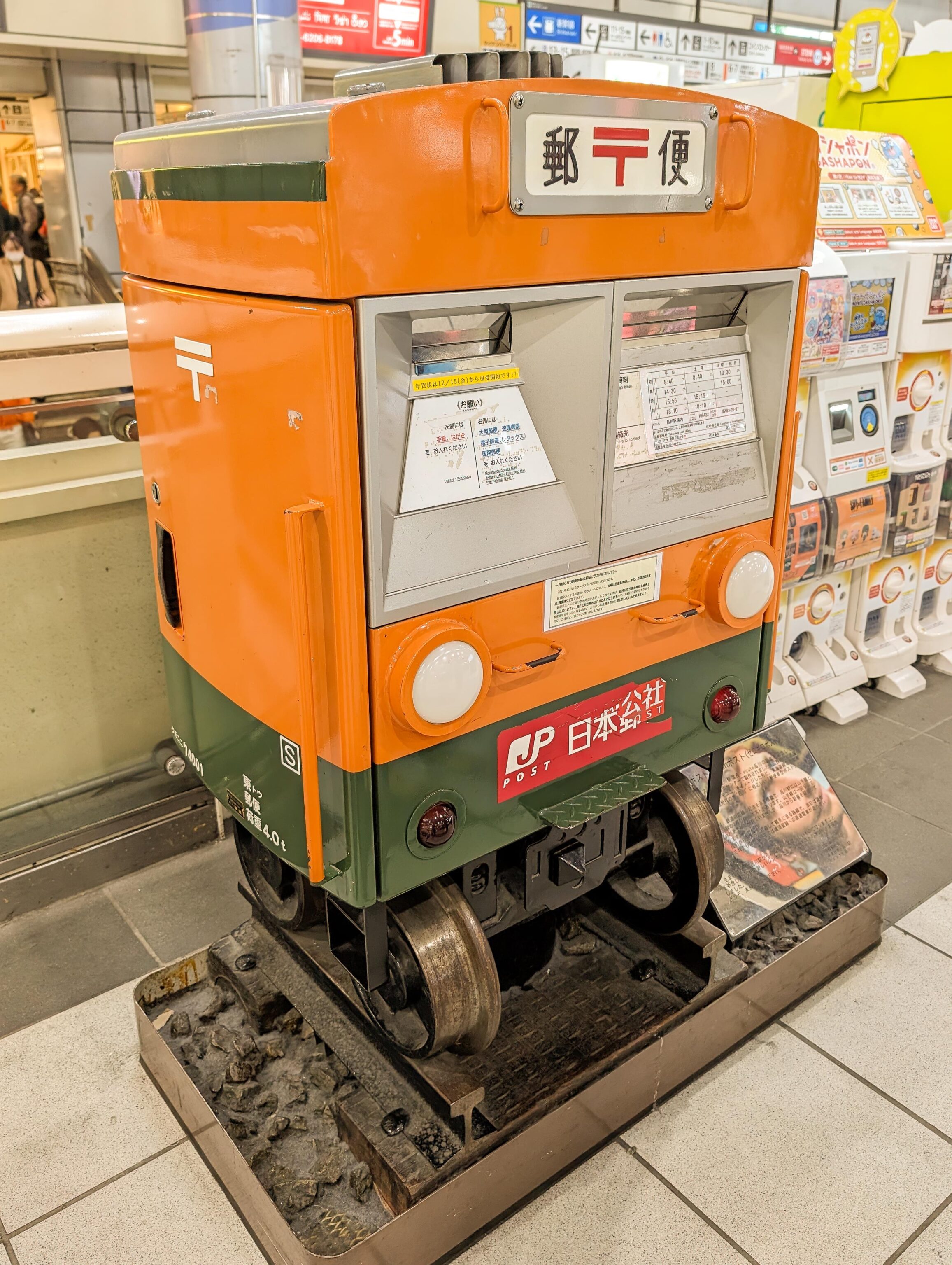
We returned to Shinagawa via JR and walked around the various shops inside the station for a bit. We noticed this little train postbox, something that we’ve never noticed before despite having gone through this station many times over the years. We finally exited and picked up our bags from the storage locker before taking Keikyu’s limited express train non-stop to Haneda Airport, a trip that takes just 13 minutes.
We arrived before United‘s check-in area had been configured and things were a bit disorderly, by Japanese standards at least, until they figured out what they were doing.
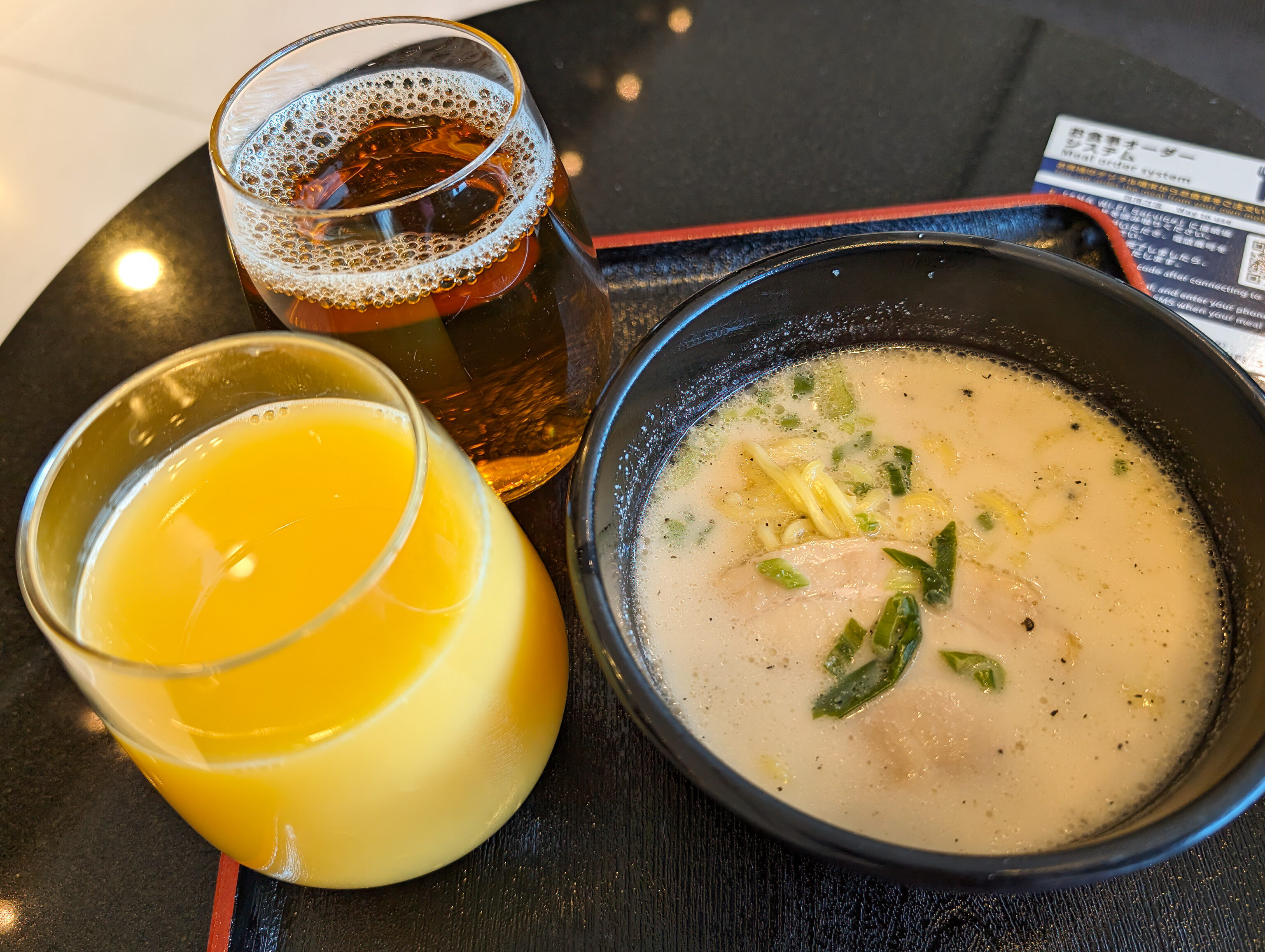
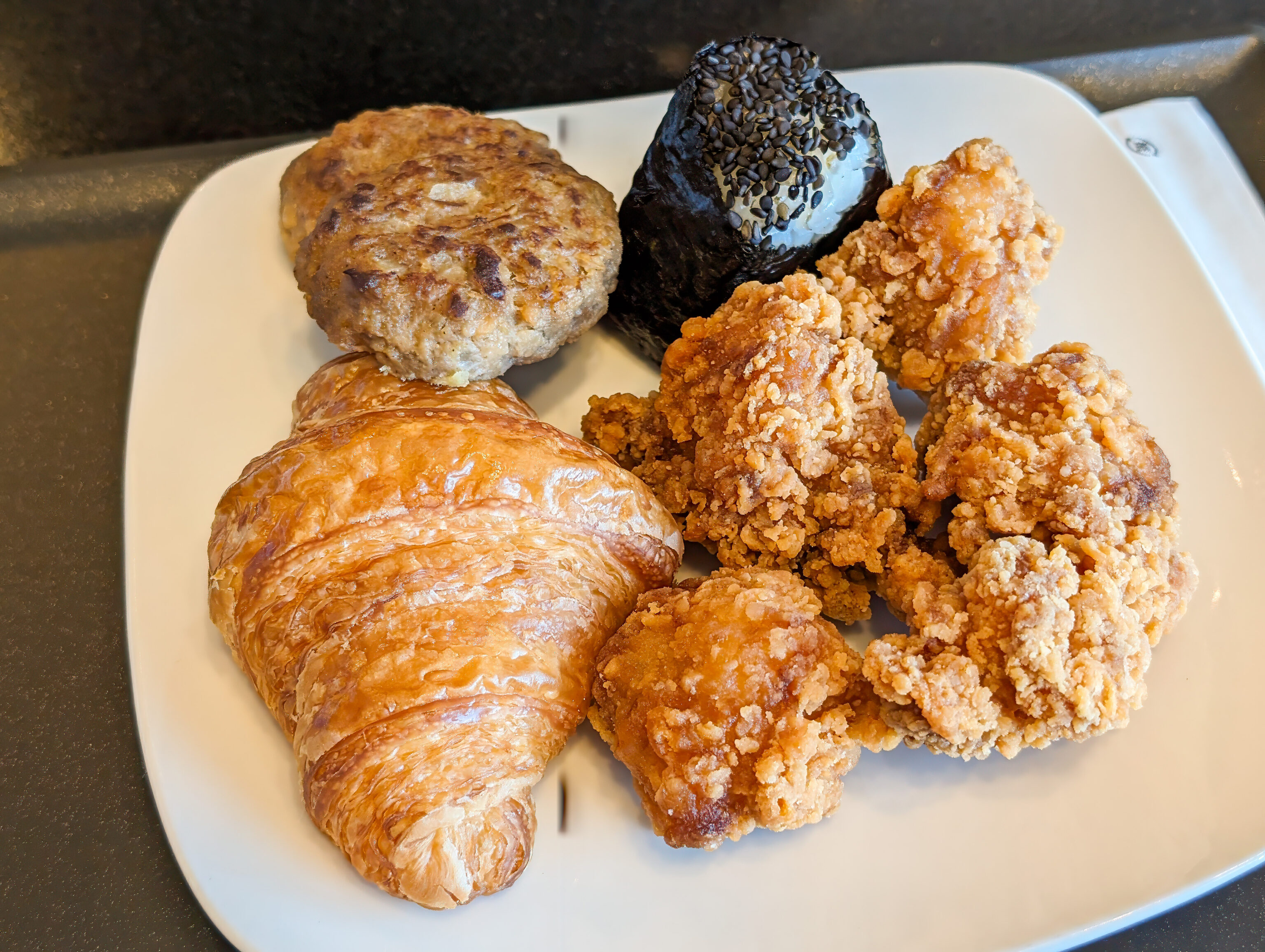
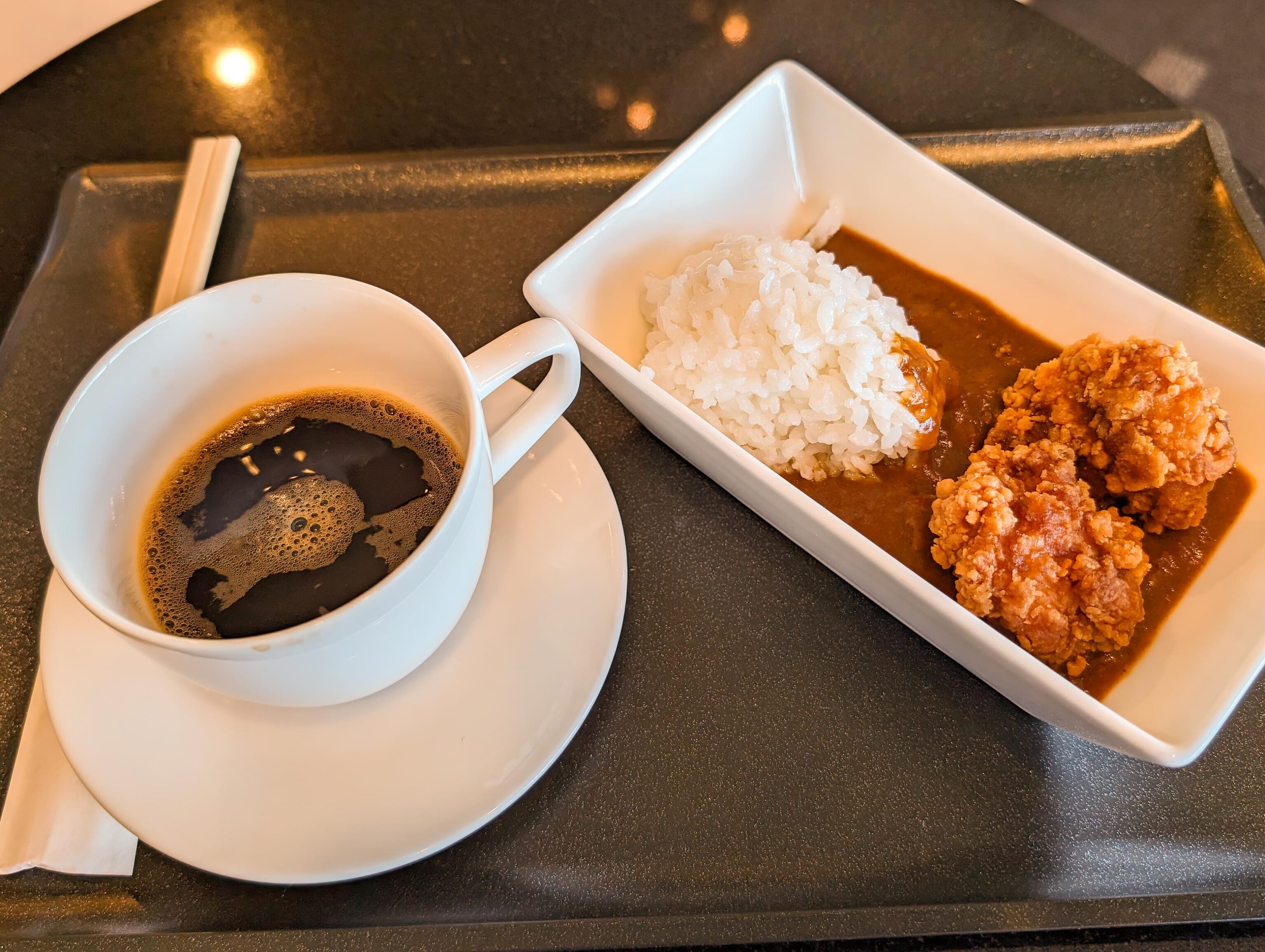
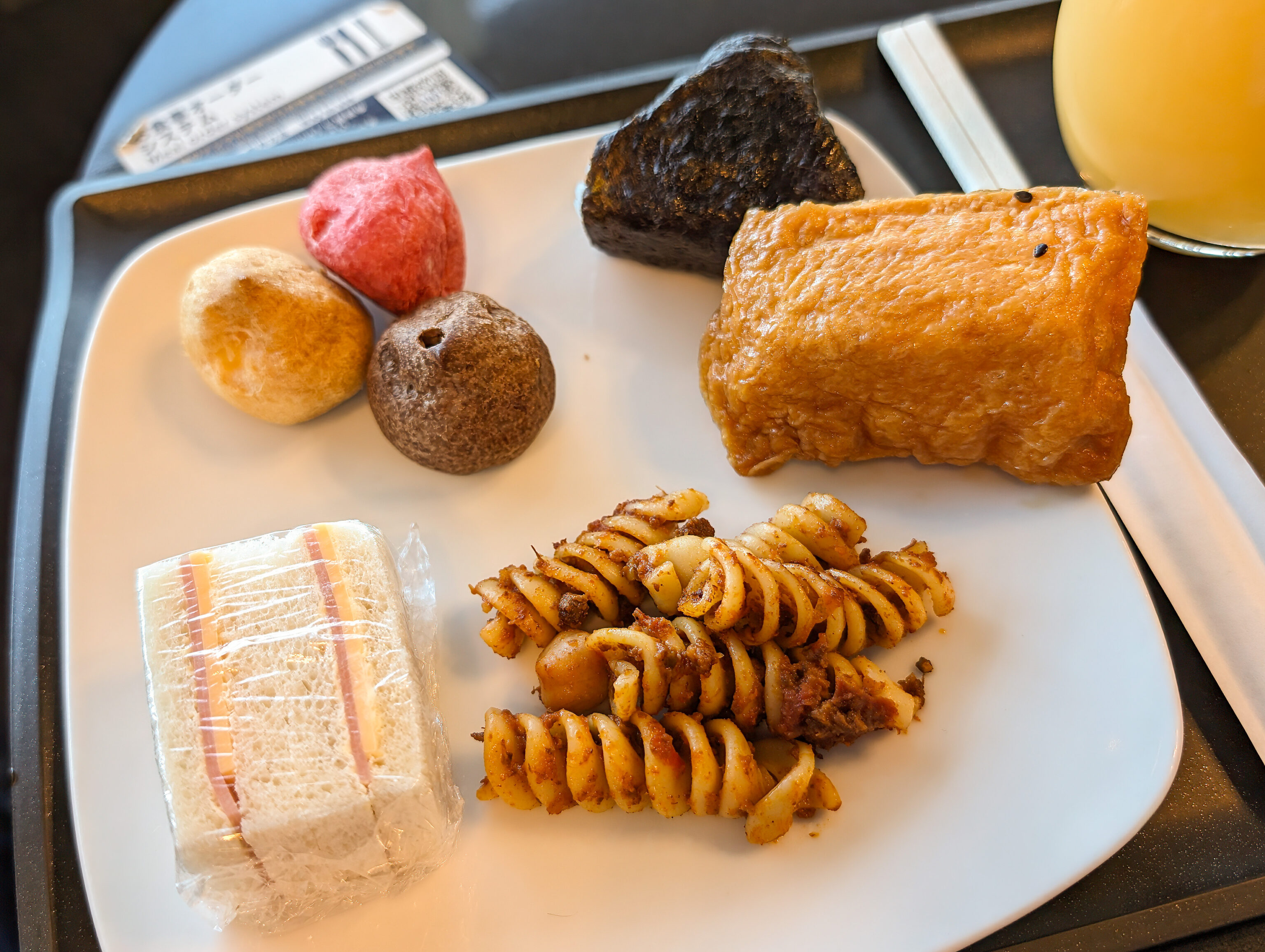
We had plenty of time to spend in the ANA Lounge. While they don’t have a sit-down made to order restaurant area like in United’s Polaris Lounges in the US, their buffet food is much better. And they also have the noodle bar which offers a variety of noodle dishes. They also had a new to us system where we could place a noodle order and receive a text message when it was ready, though it didn’t seem to work with our US phone numbers.
It has been a fantastic trip to Japan, one of our longest trips as we rarely travel for so many days continuously. We saw many beautiful Japanese maples, our primary tourism goal for this trip. And of course, we had lots of fantastic food!
Footnotes
- https://sankan.kunaicho.go.jp/english/guide/small/d13-01ph-12.html: “The Tokagakudo building is a concert hall and was constructed in 1966 on the auspicious occasion of the 60th Birthday of Empress Kojun (deceased in 2000), who was a great lover of classical music.” ↩︎
- https://en.wikipedia.org/wiki/Cryptomeria: “It used to be considered by some to be endemic to Japan, where it is known as Sugi (杉). The tree is called Japanese cedar or Japanese redwood in English.” ↩︎
